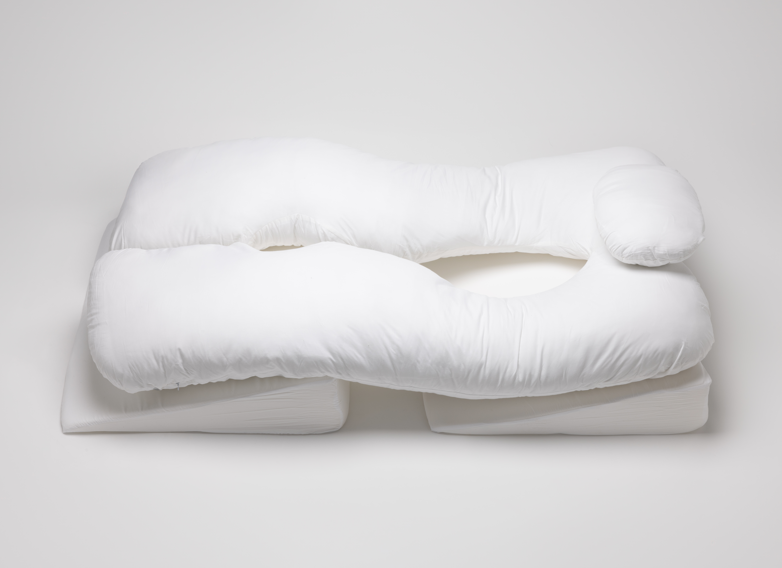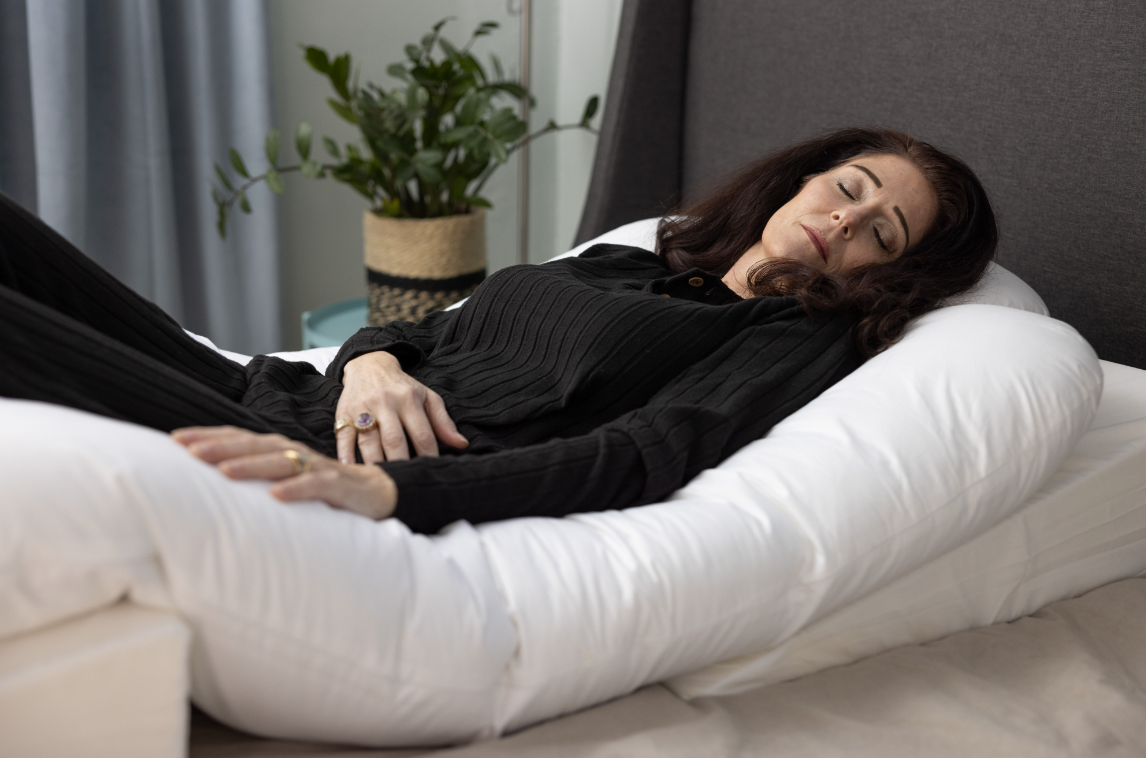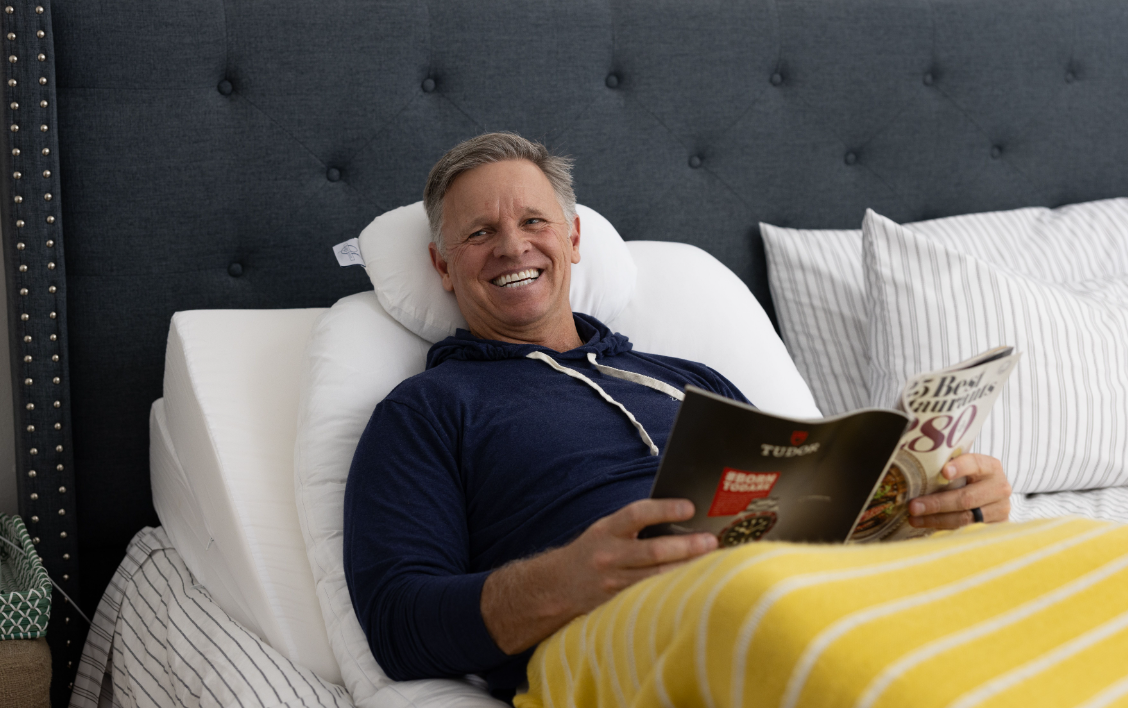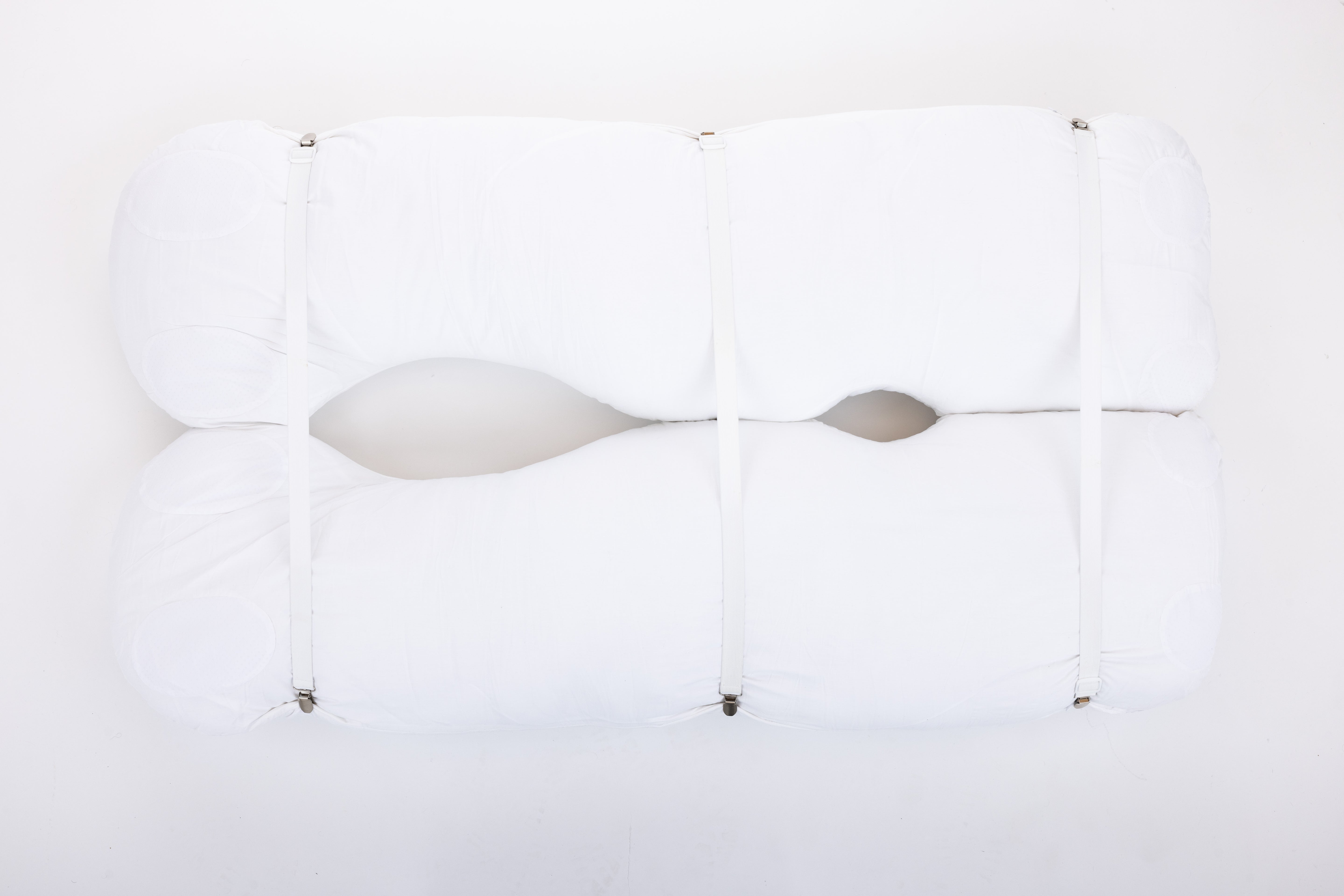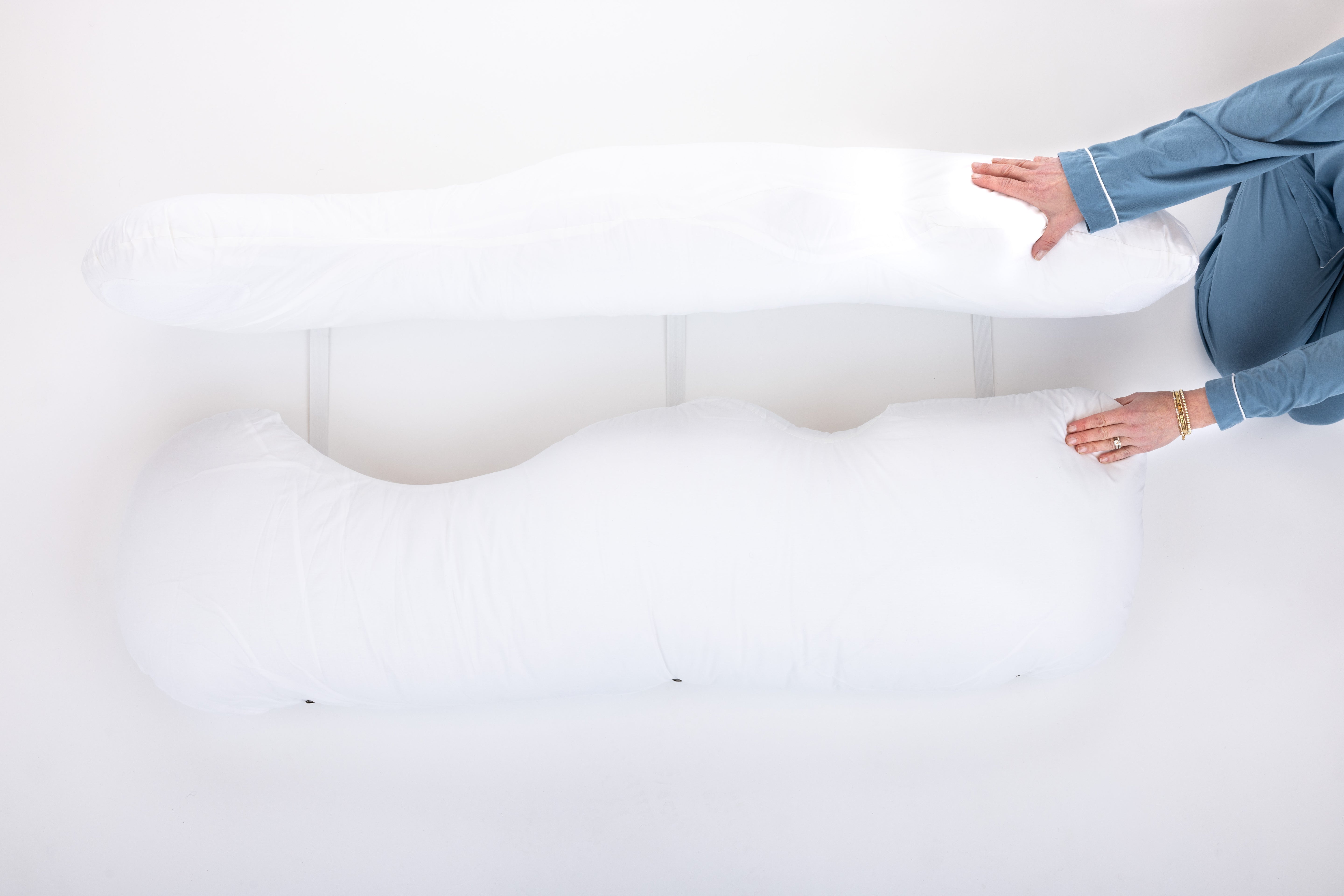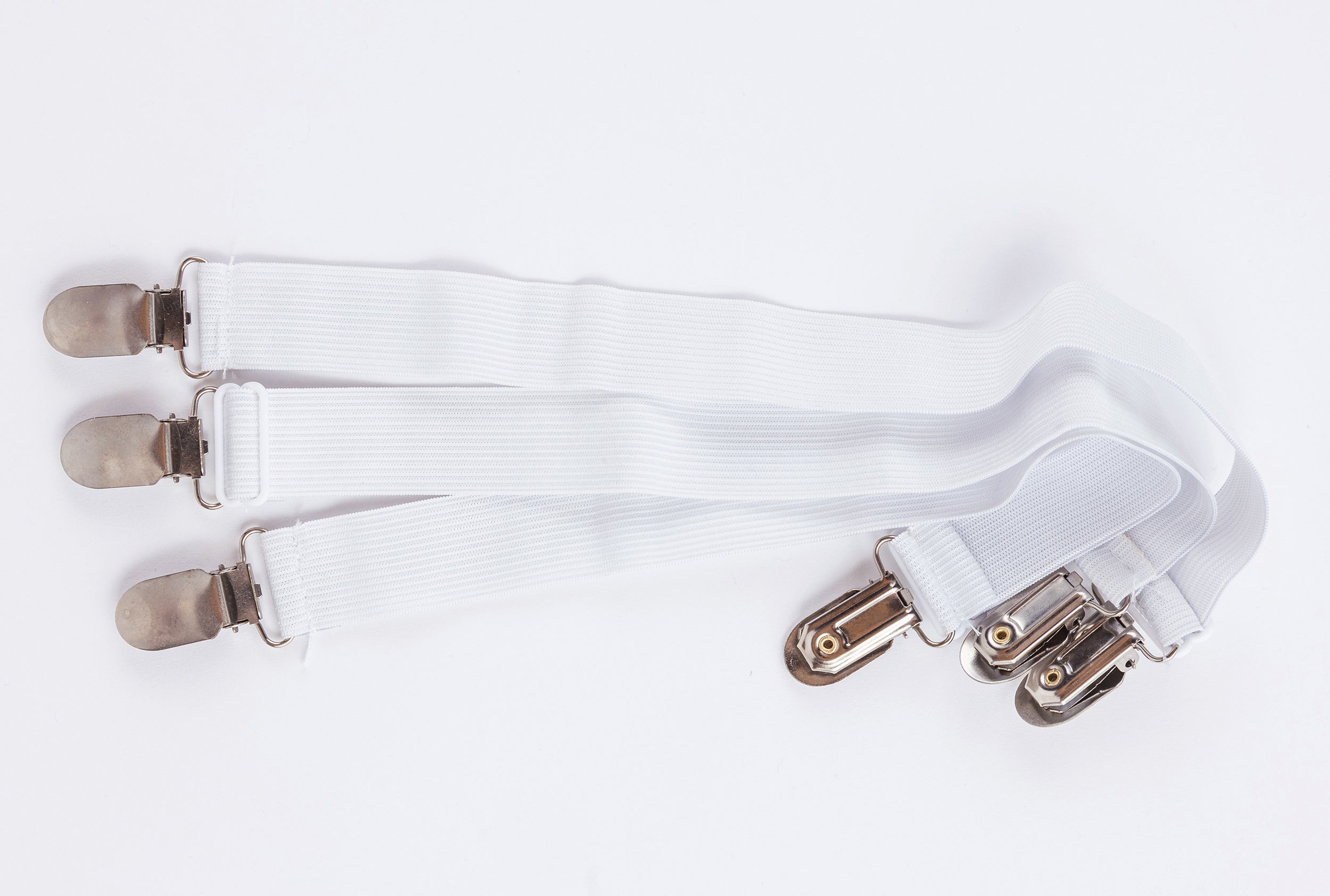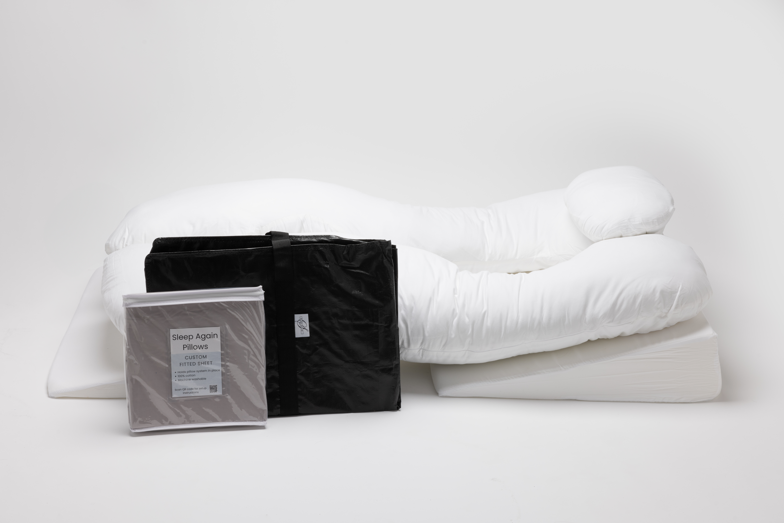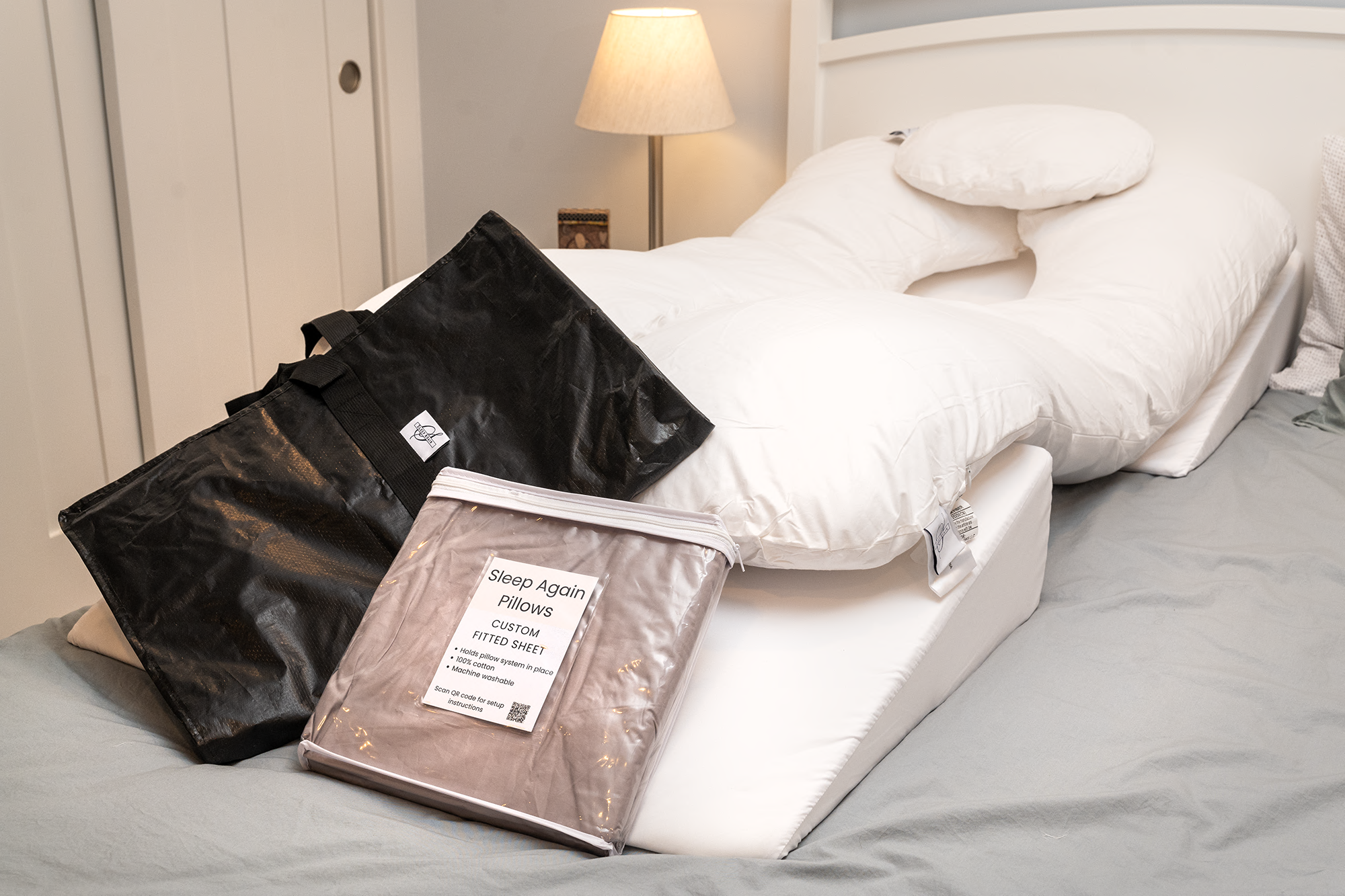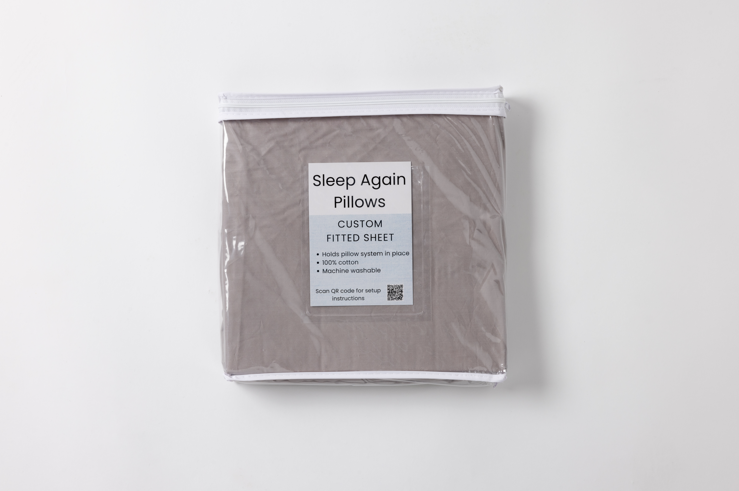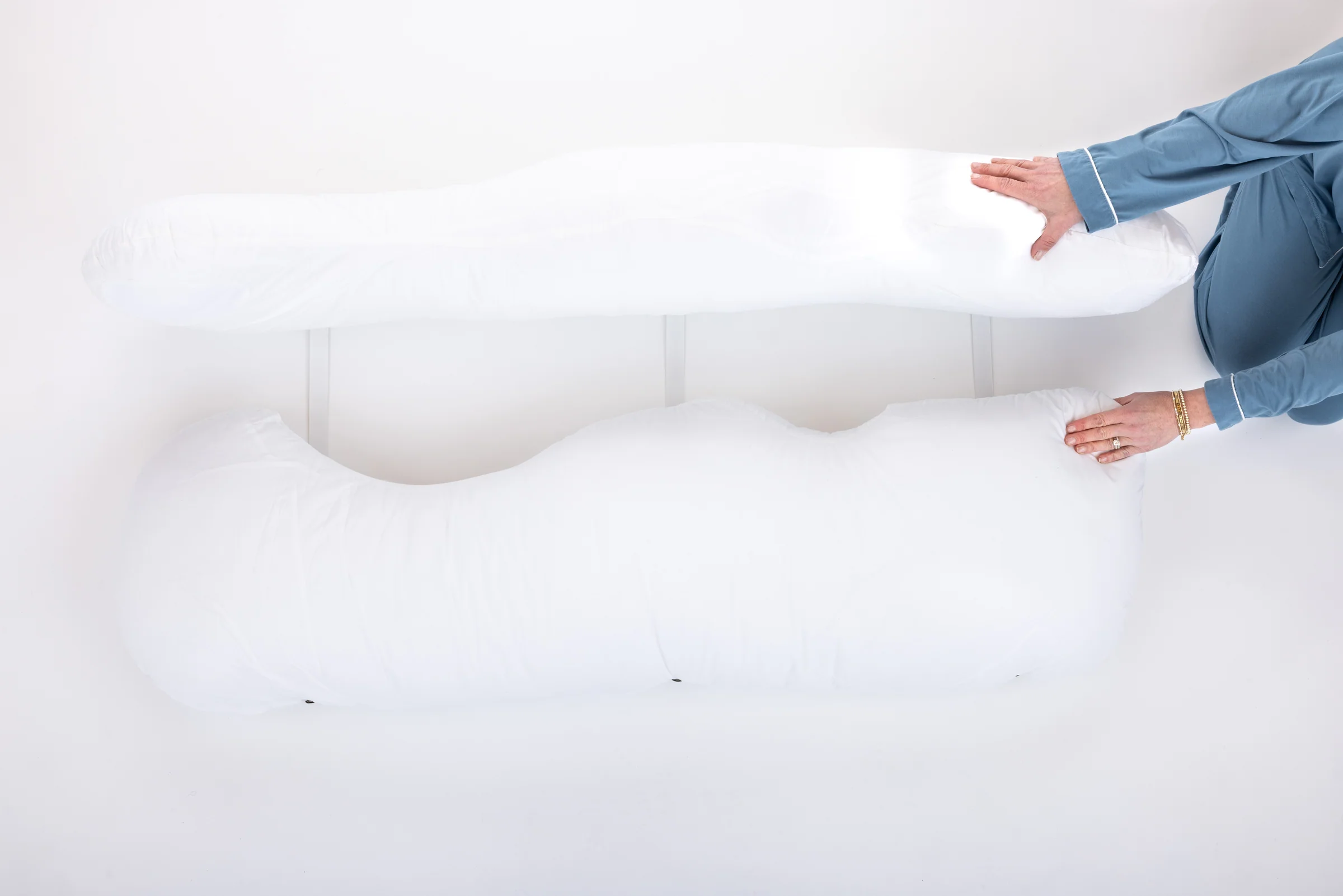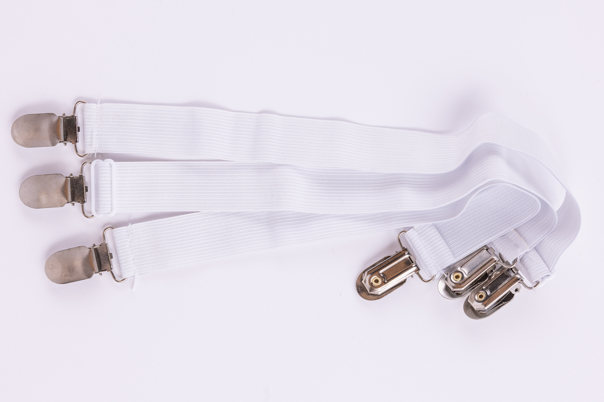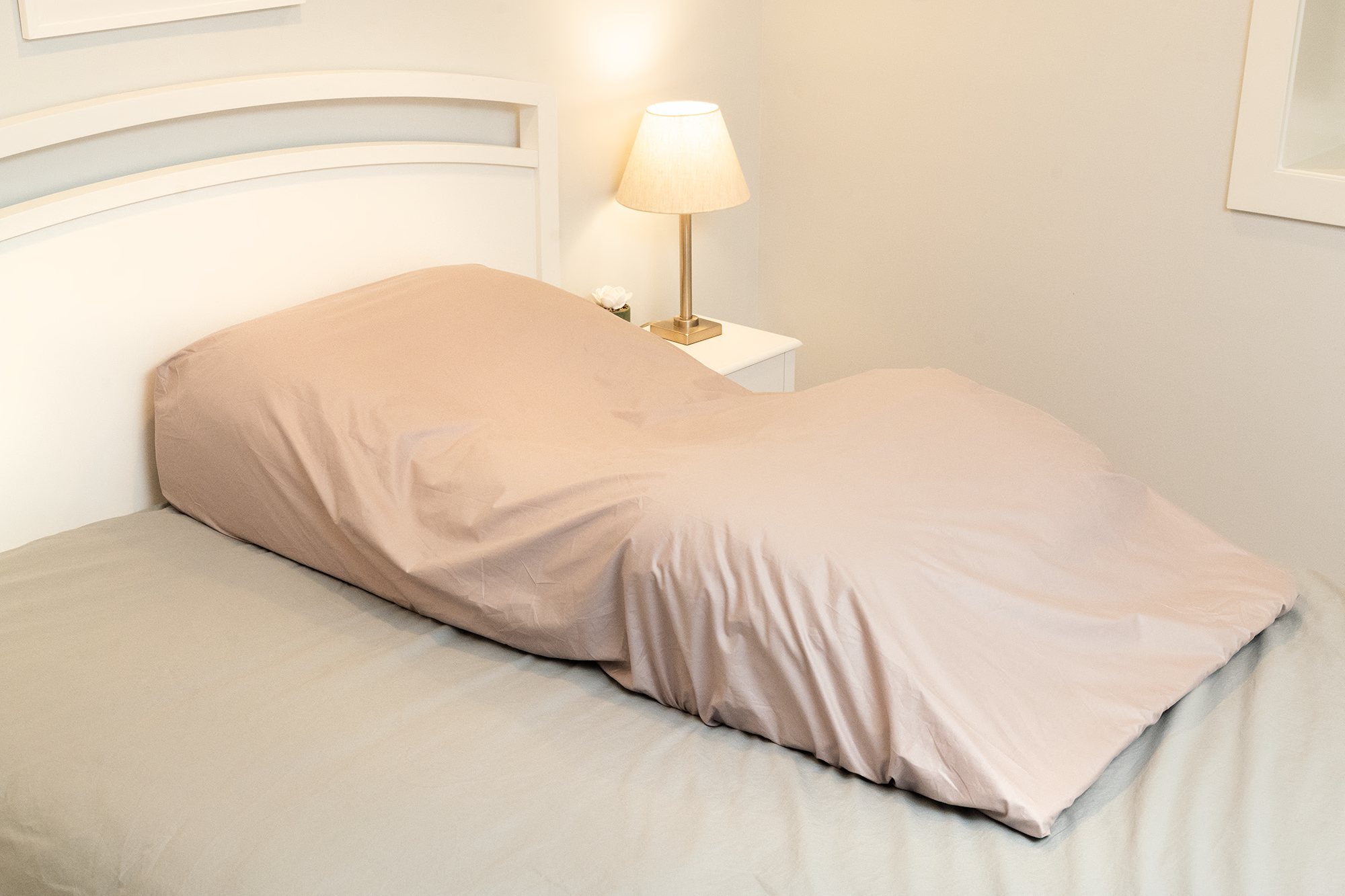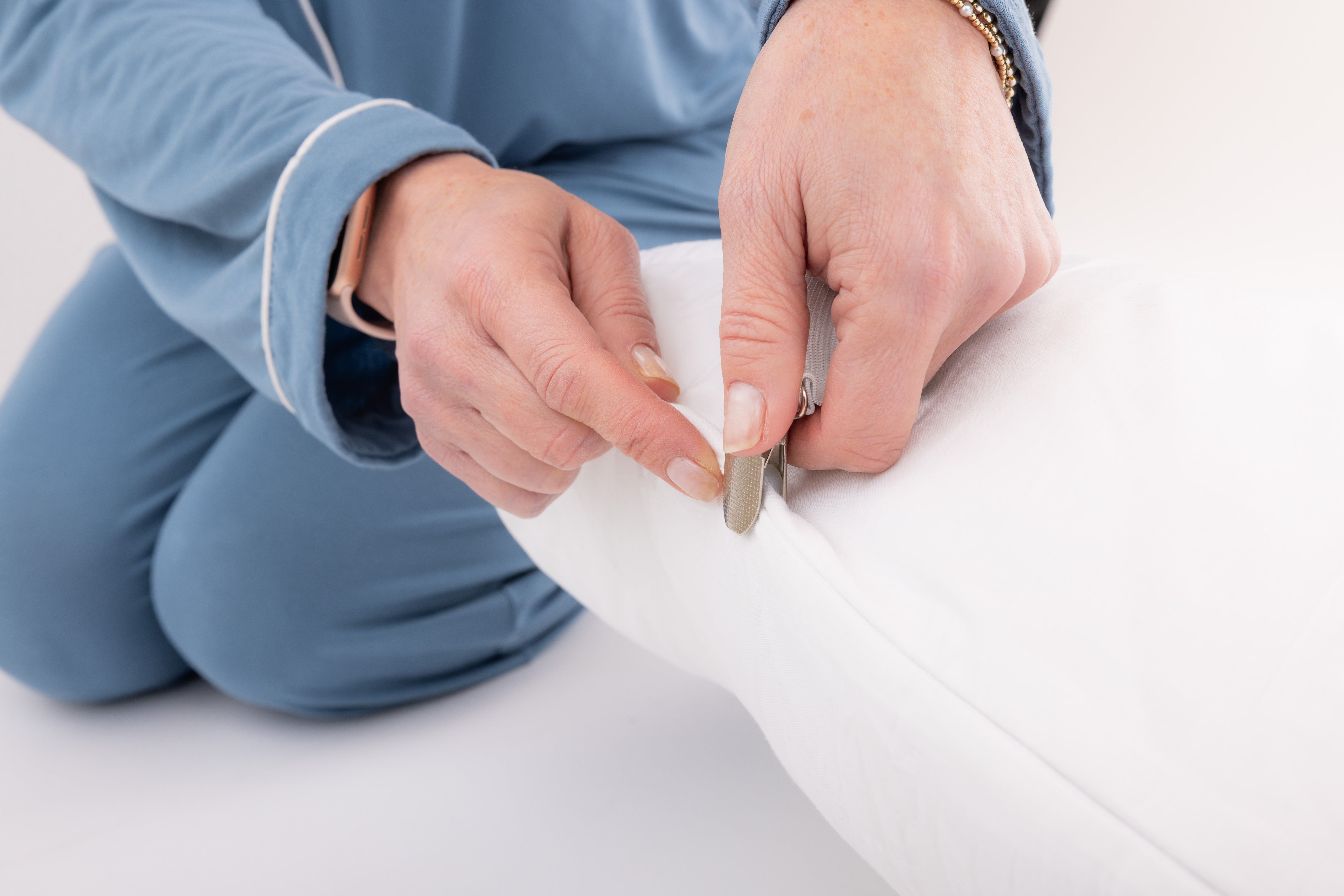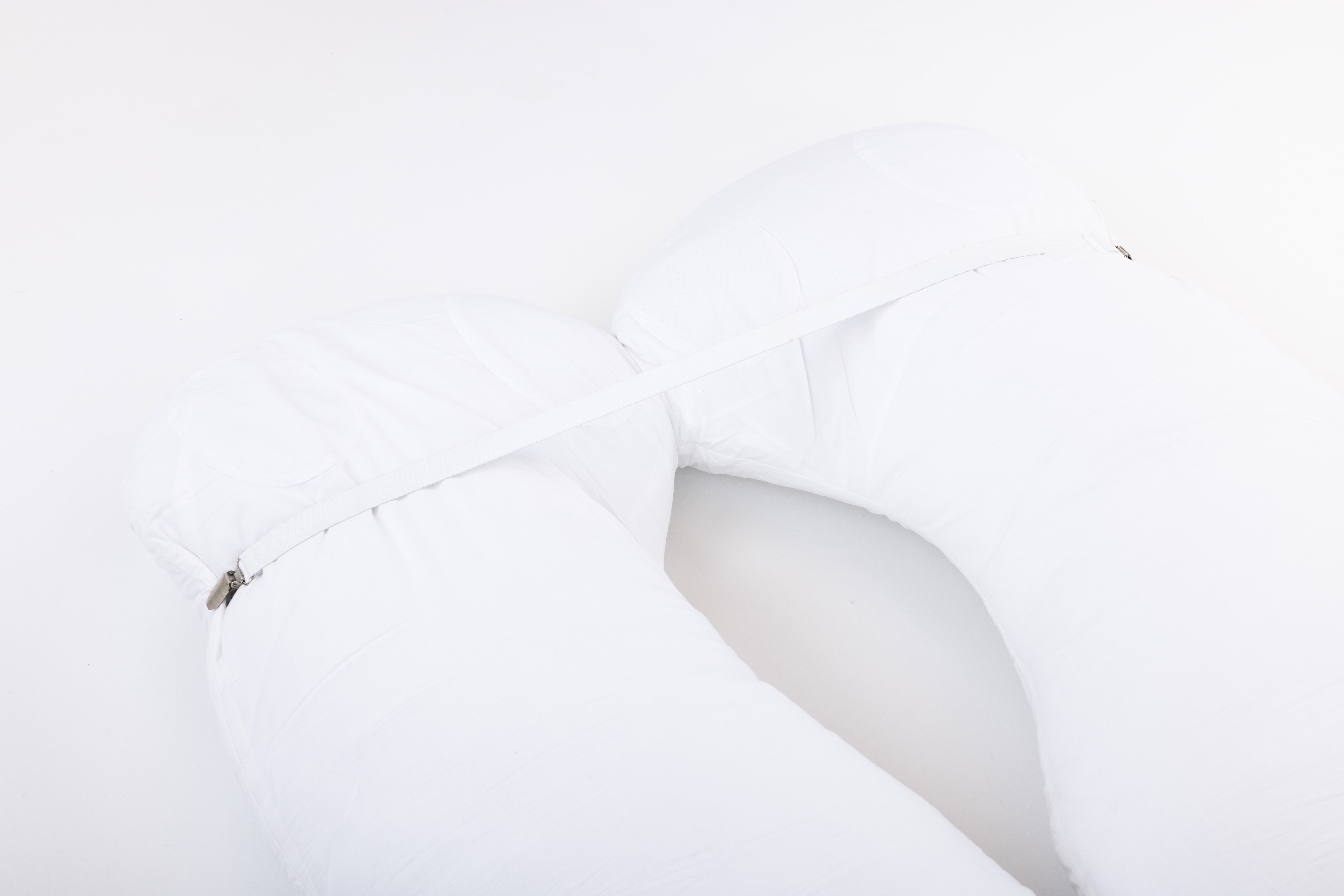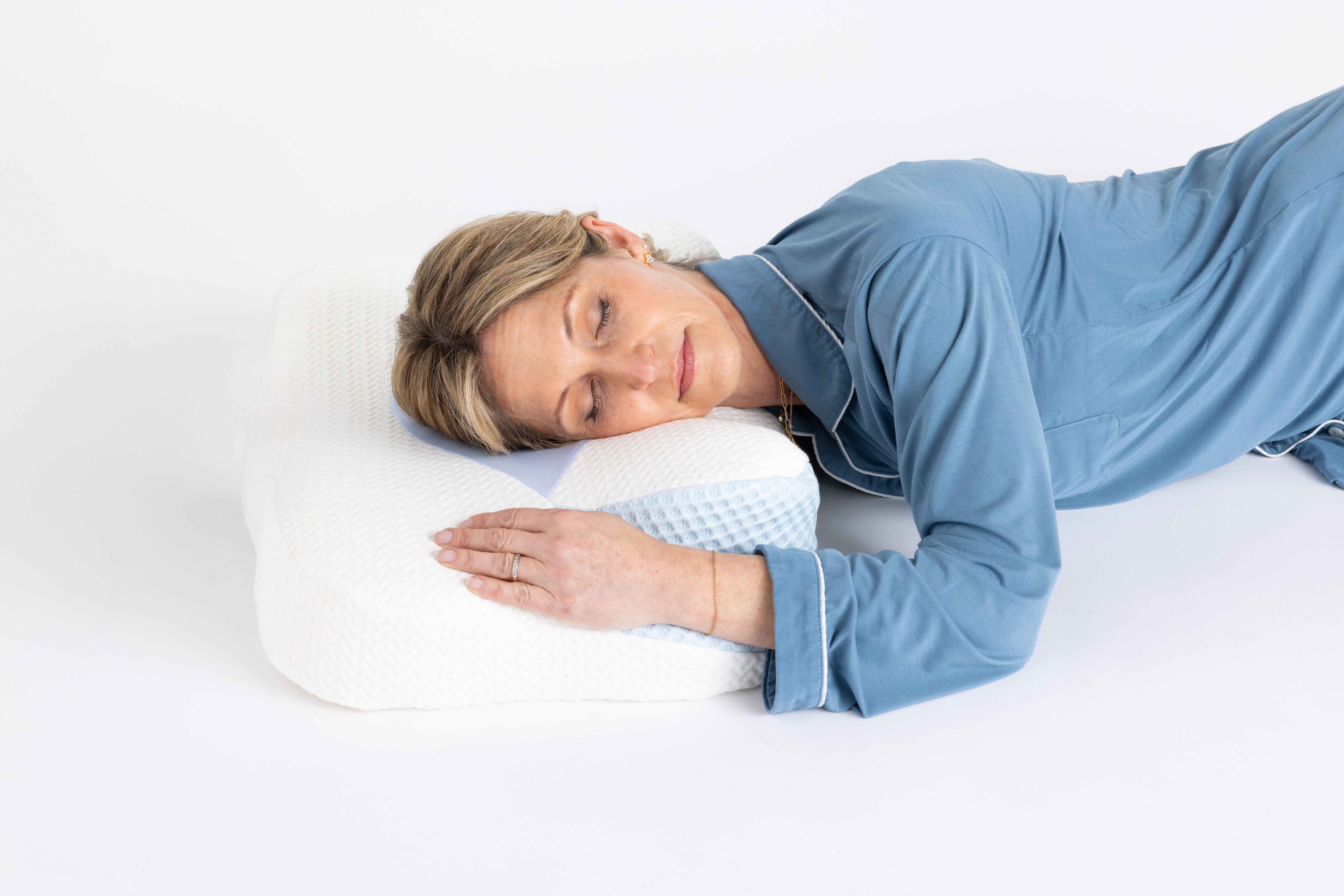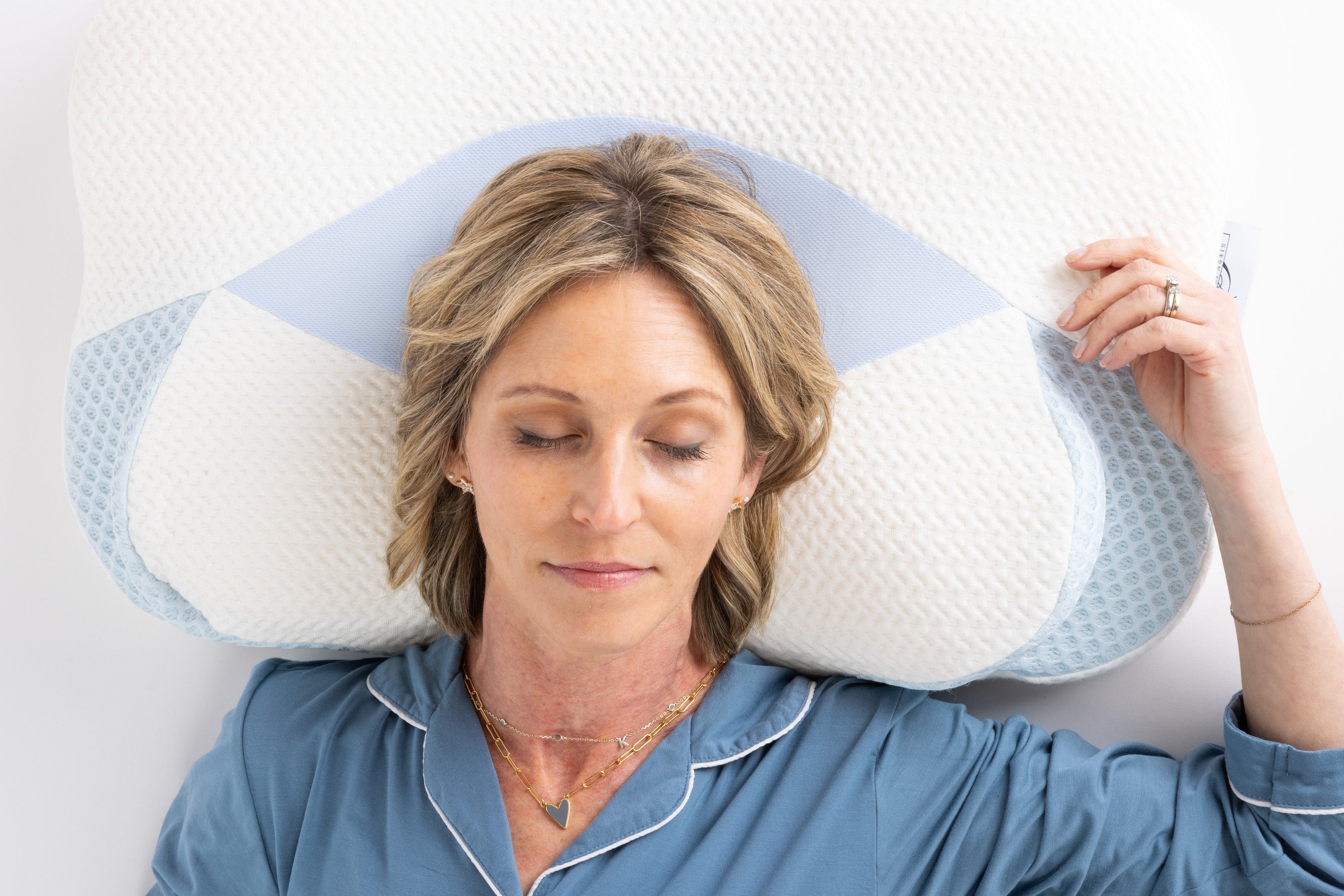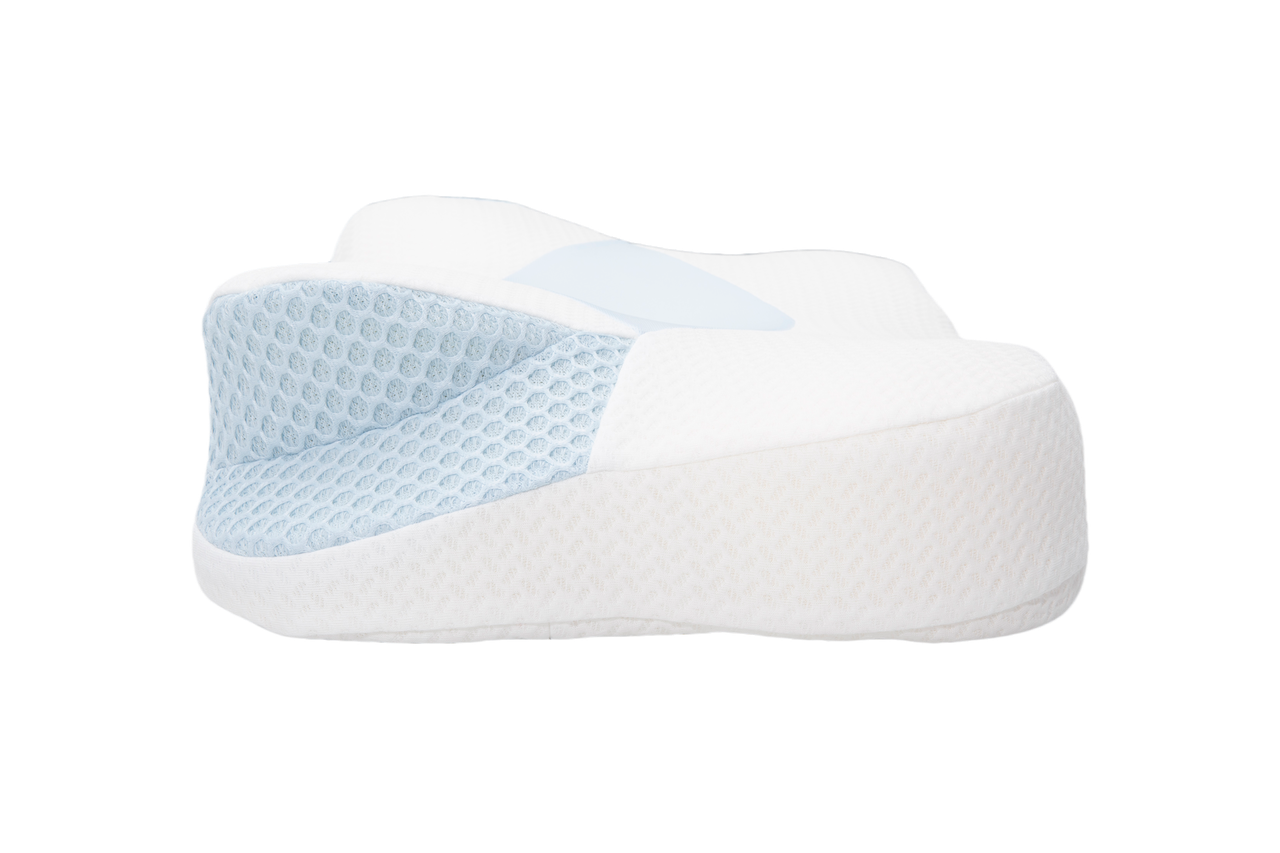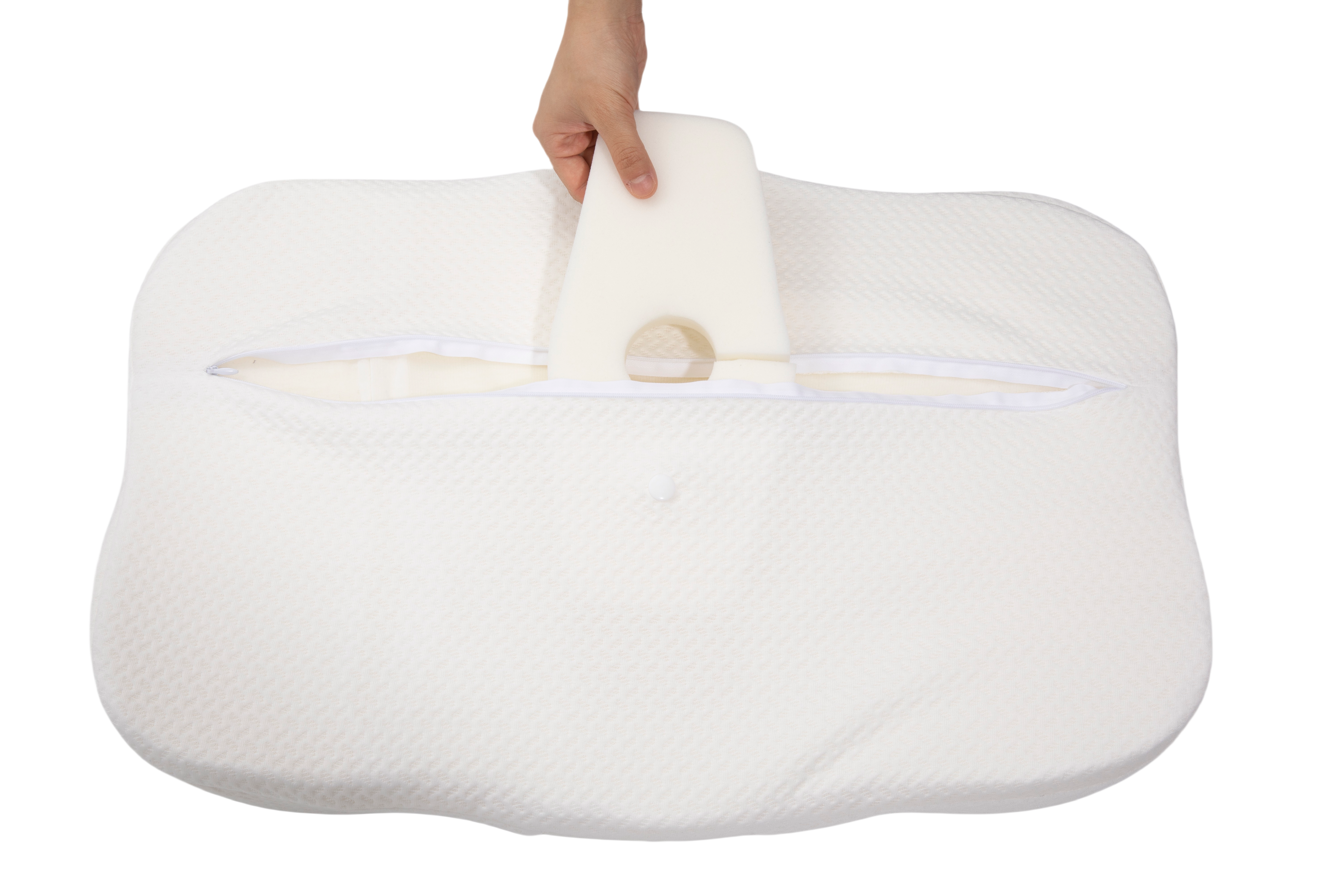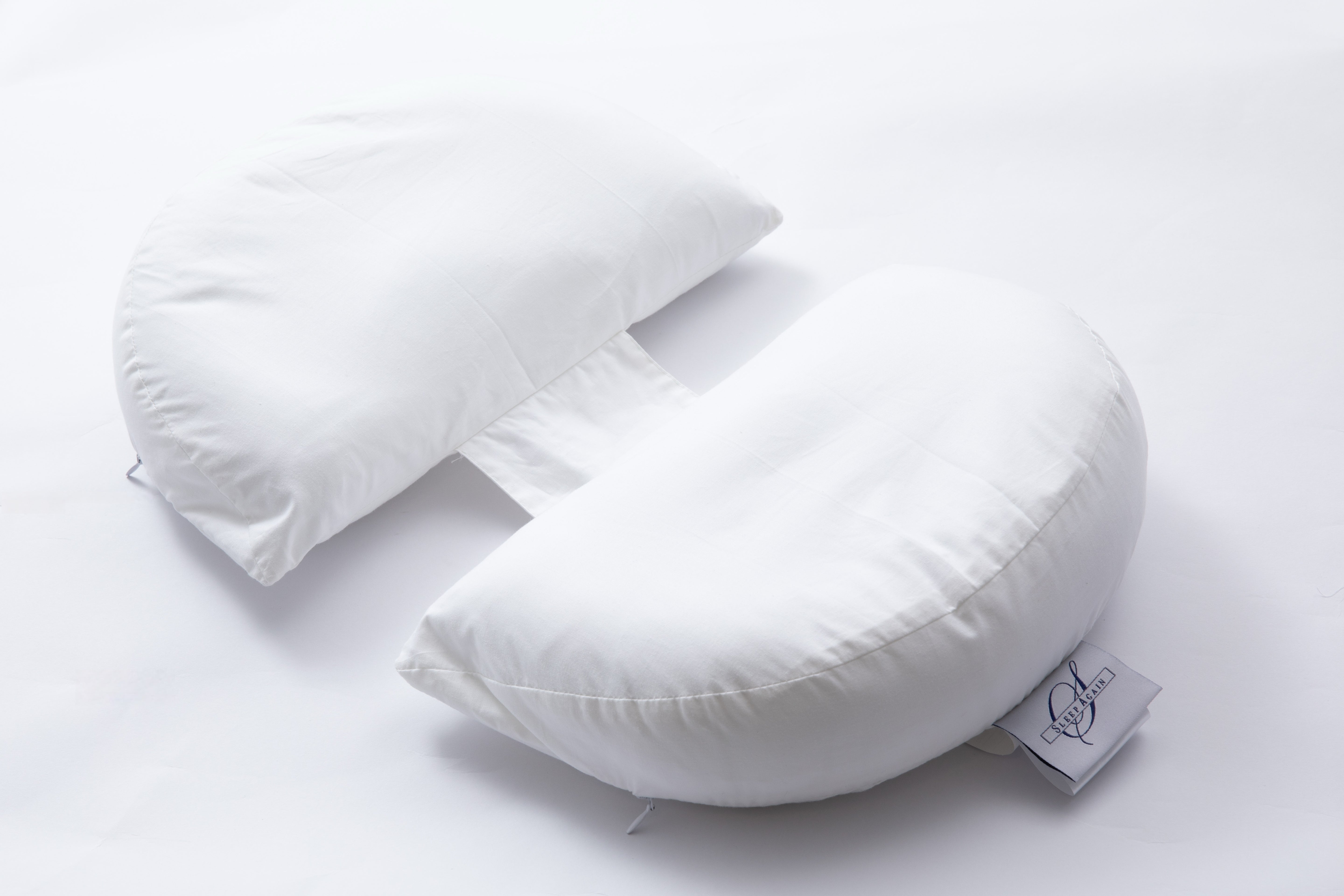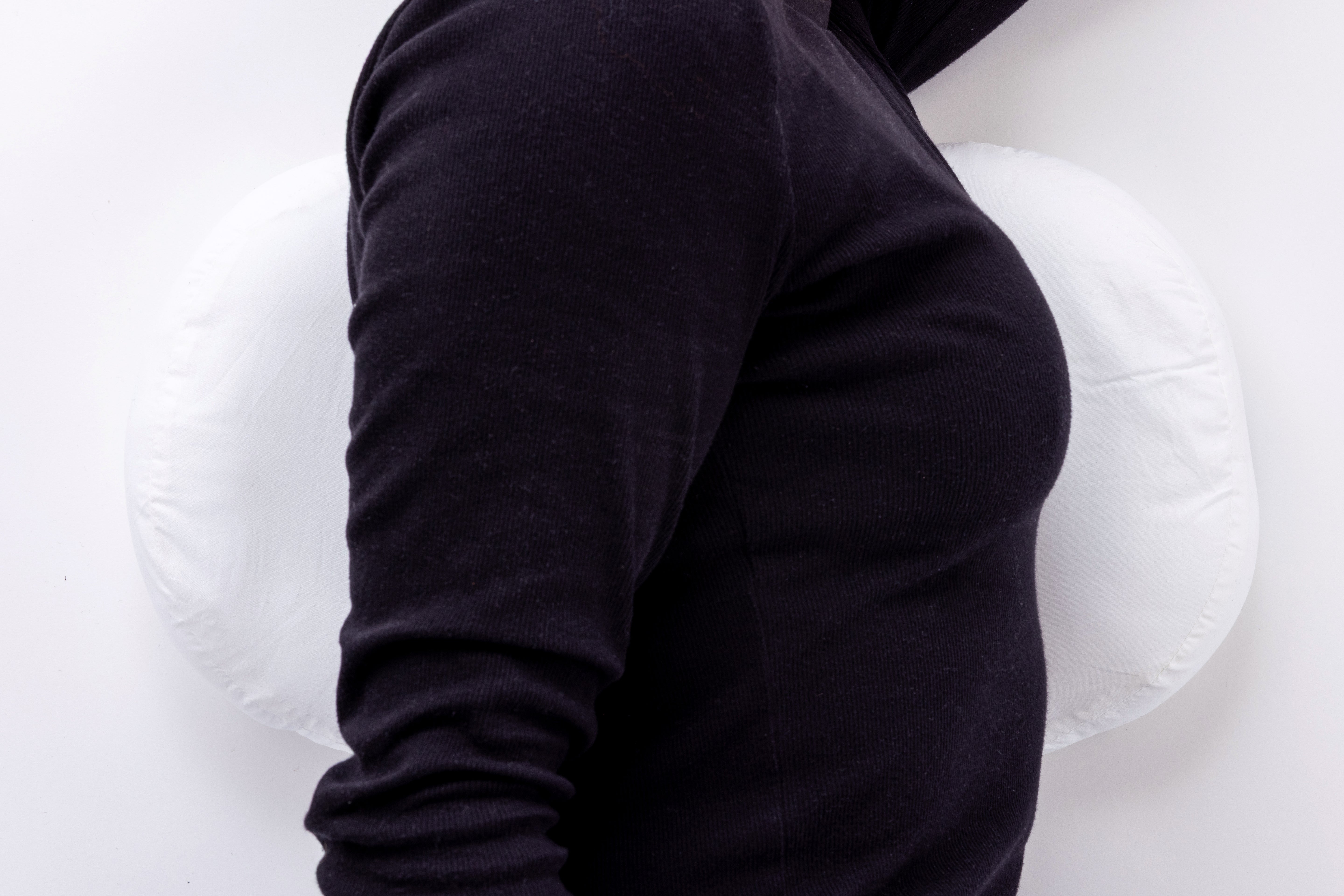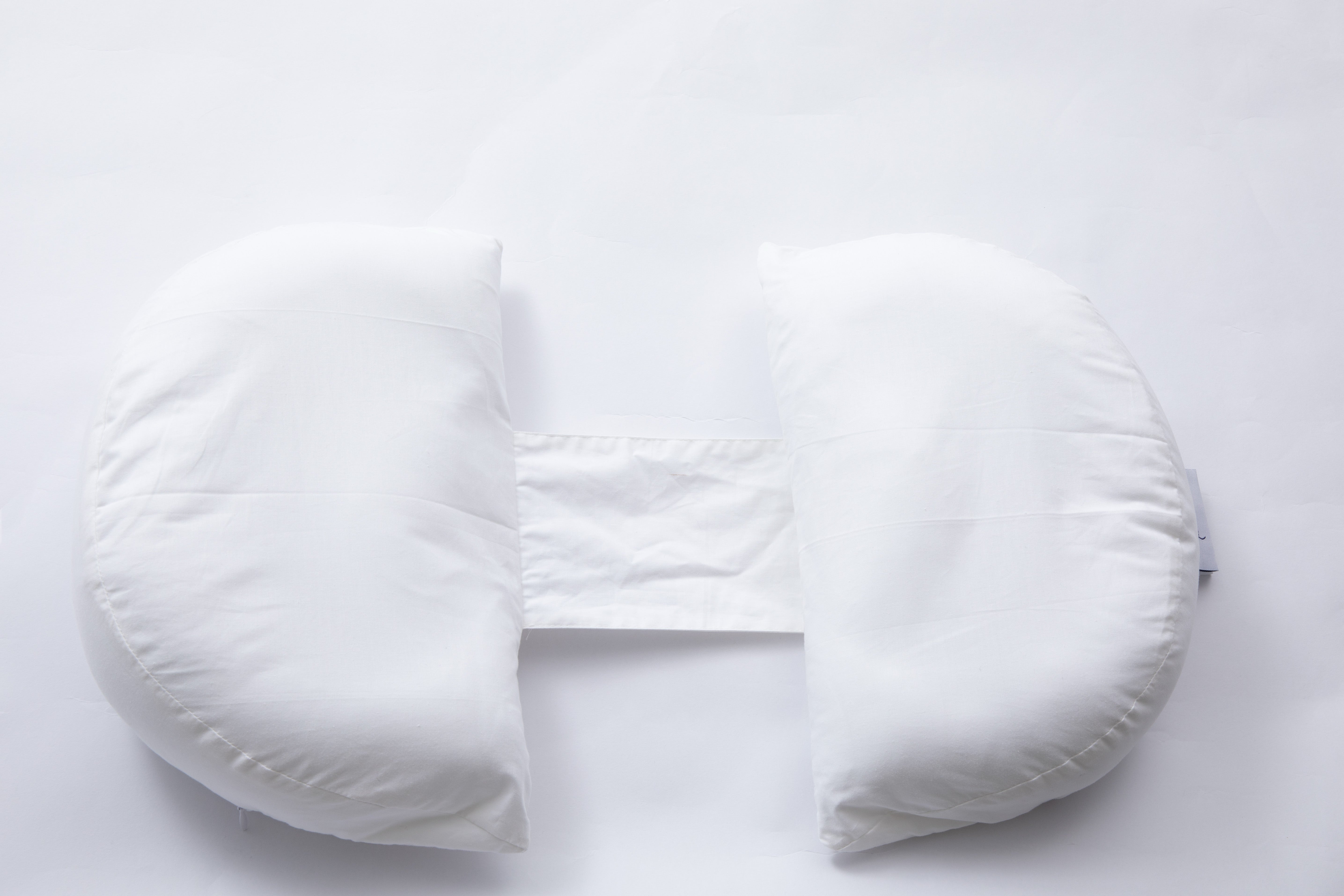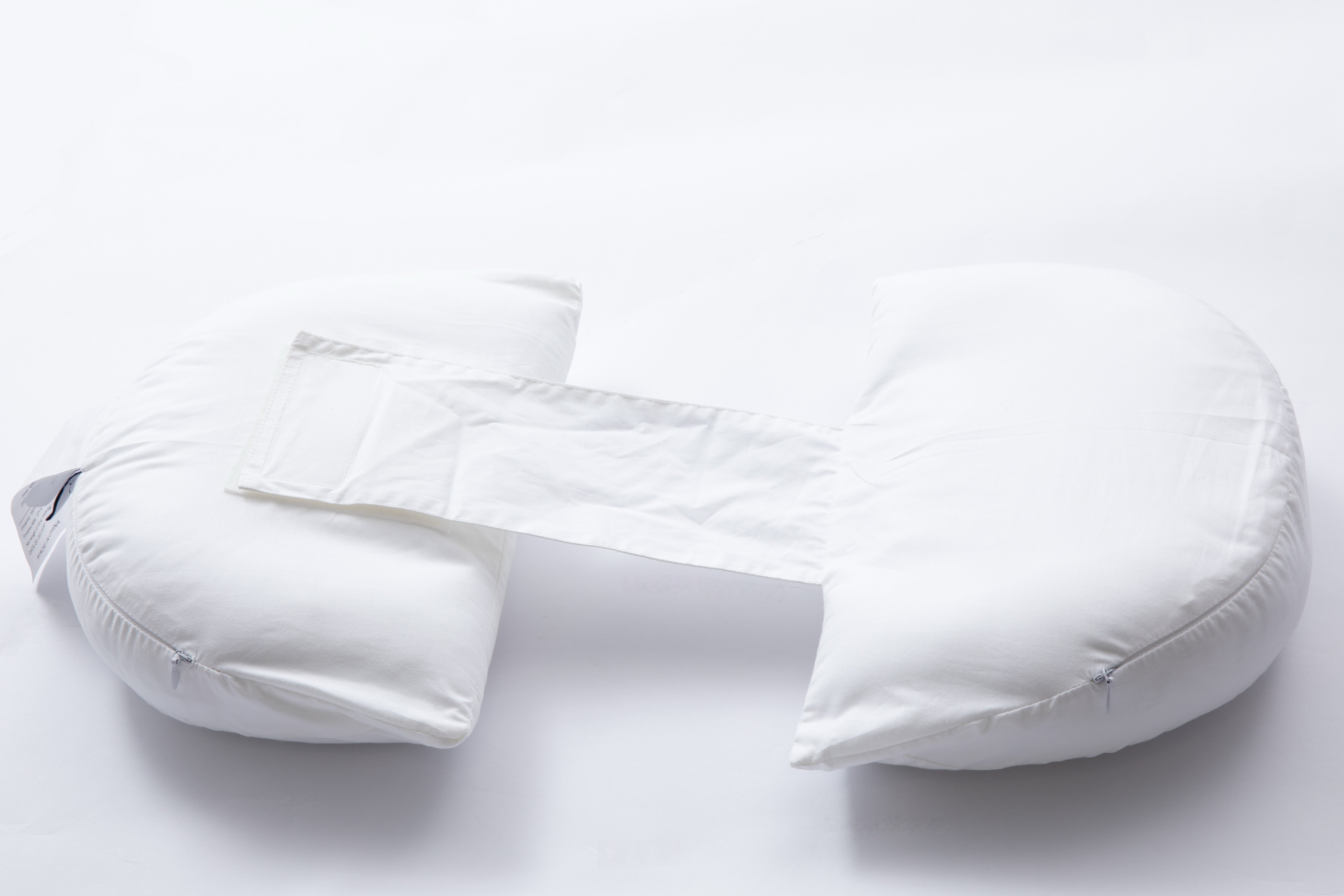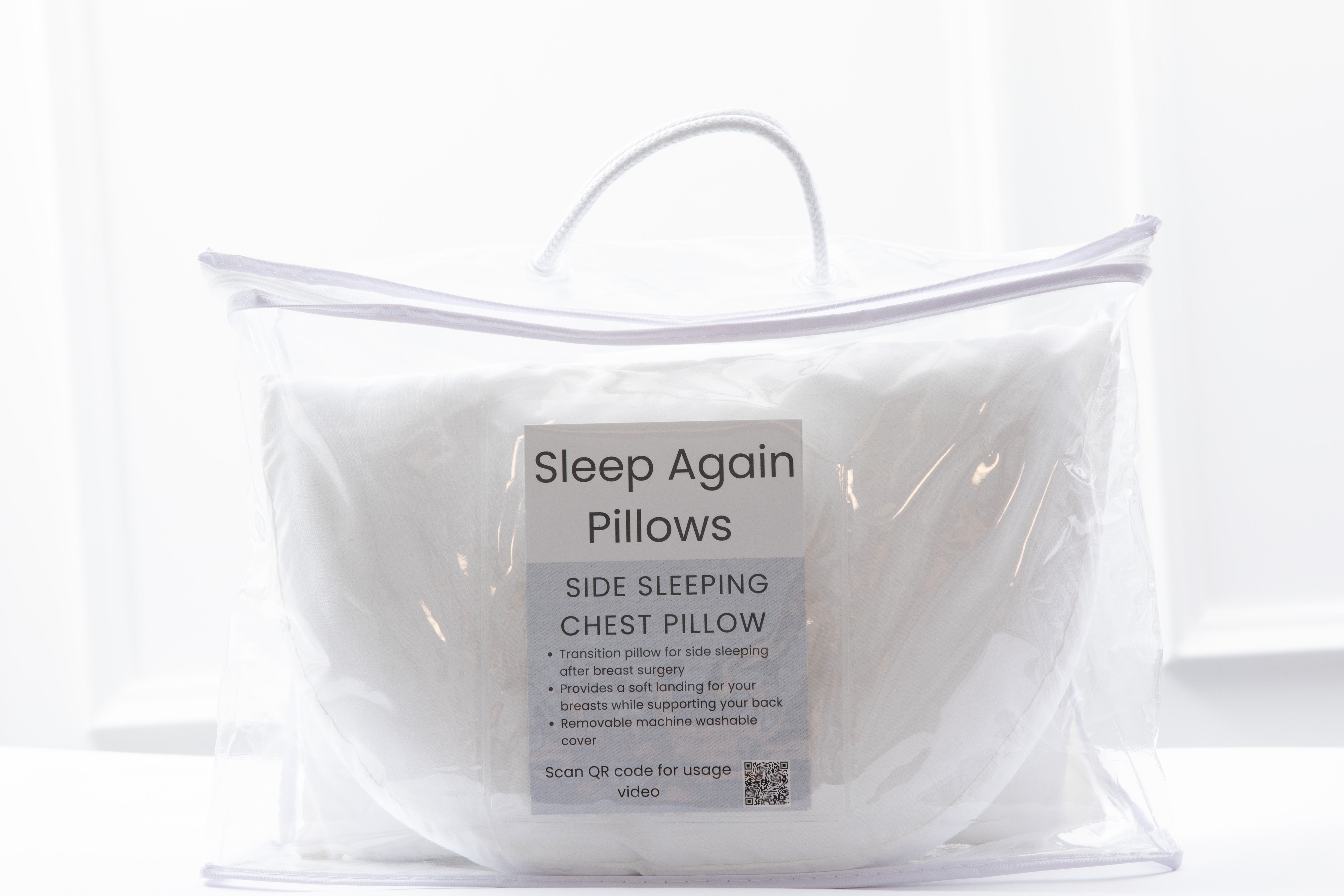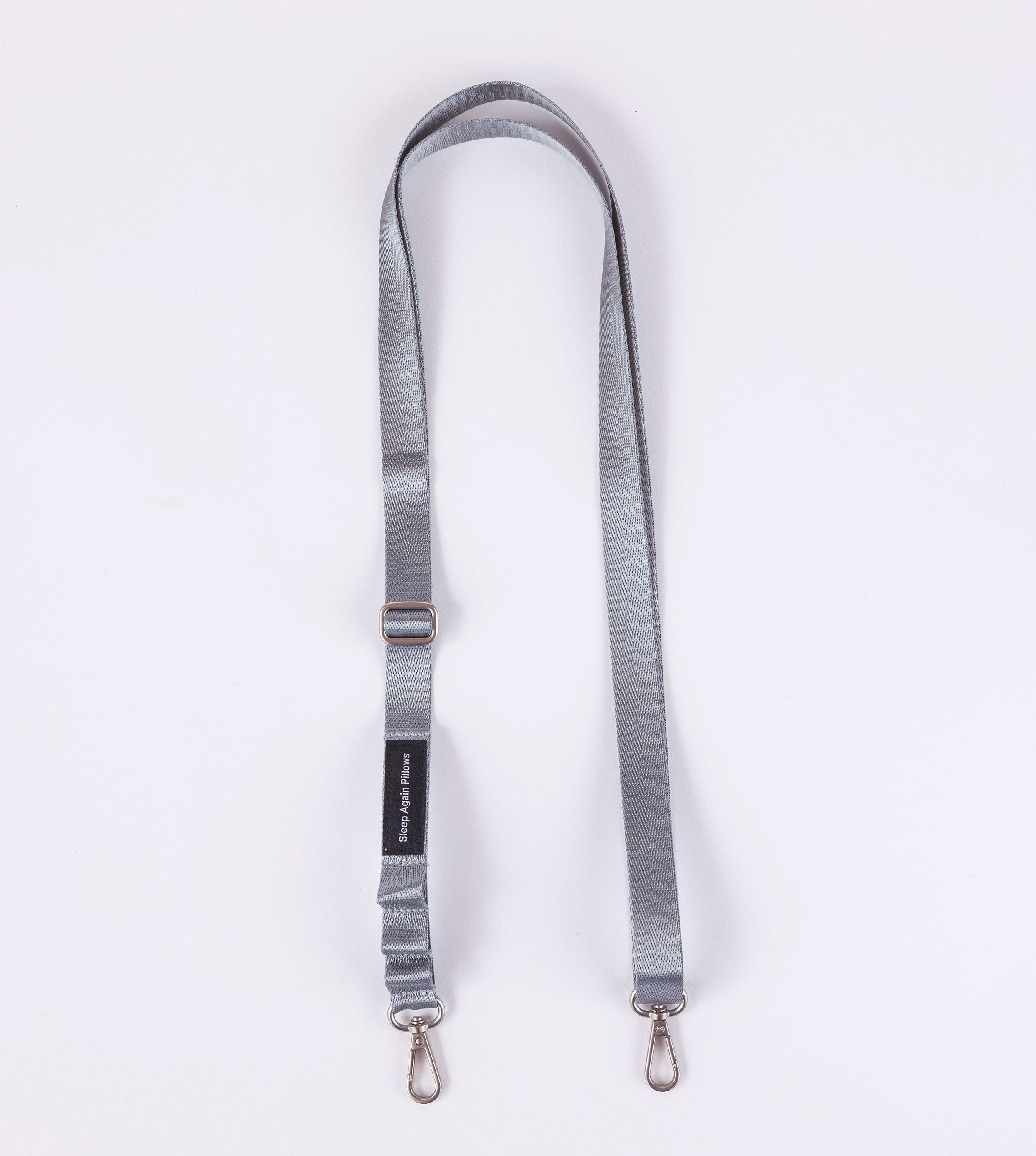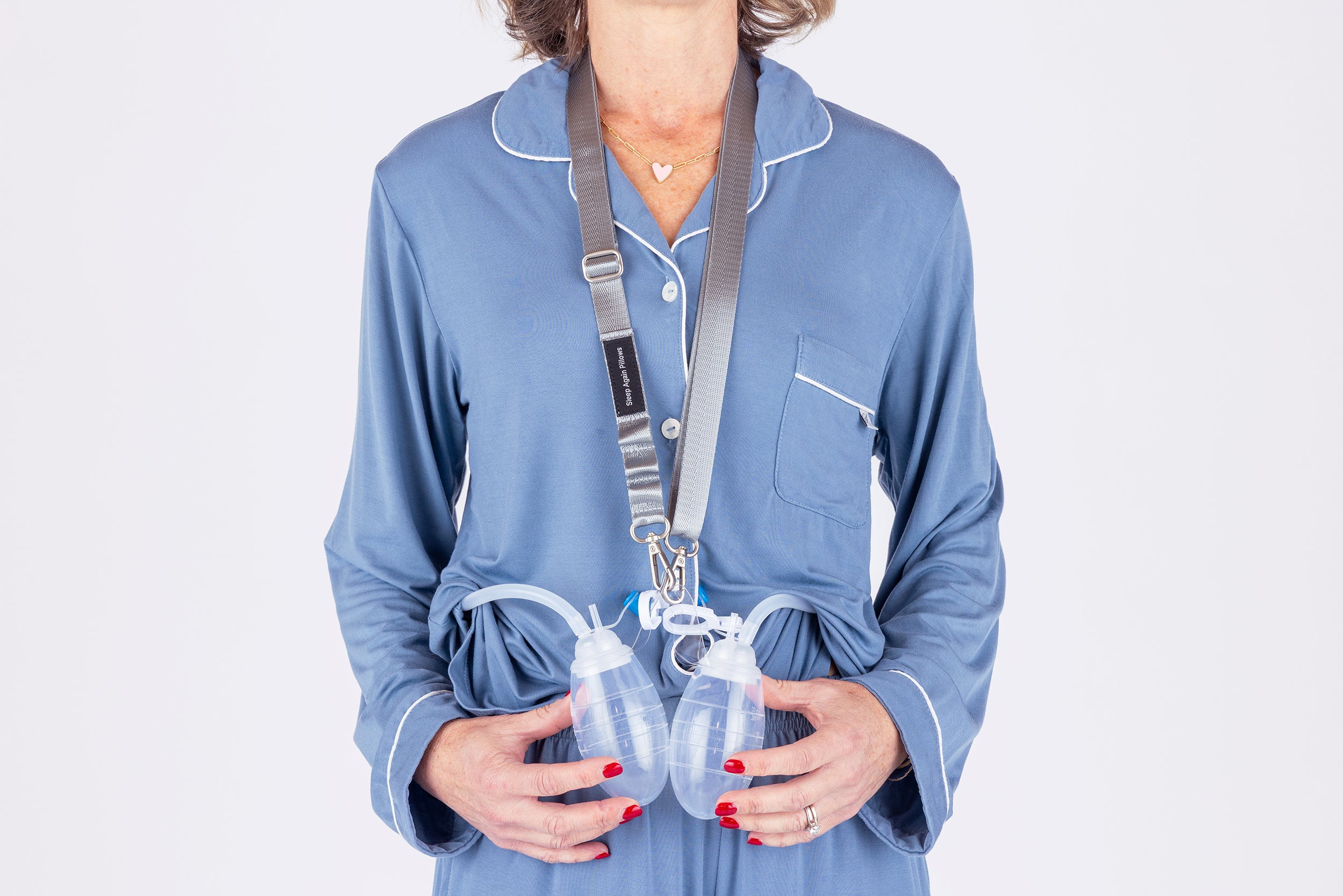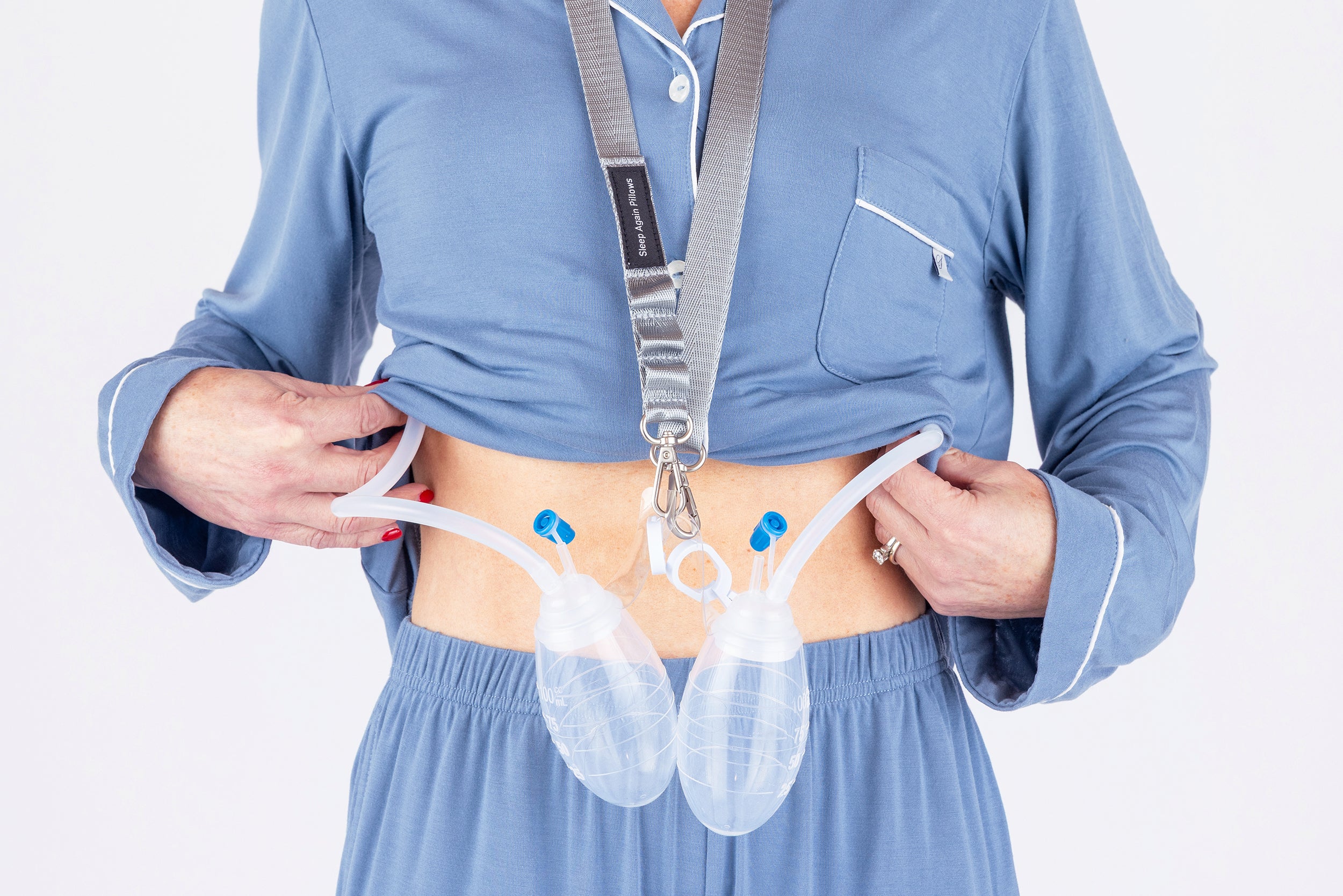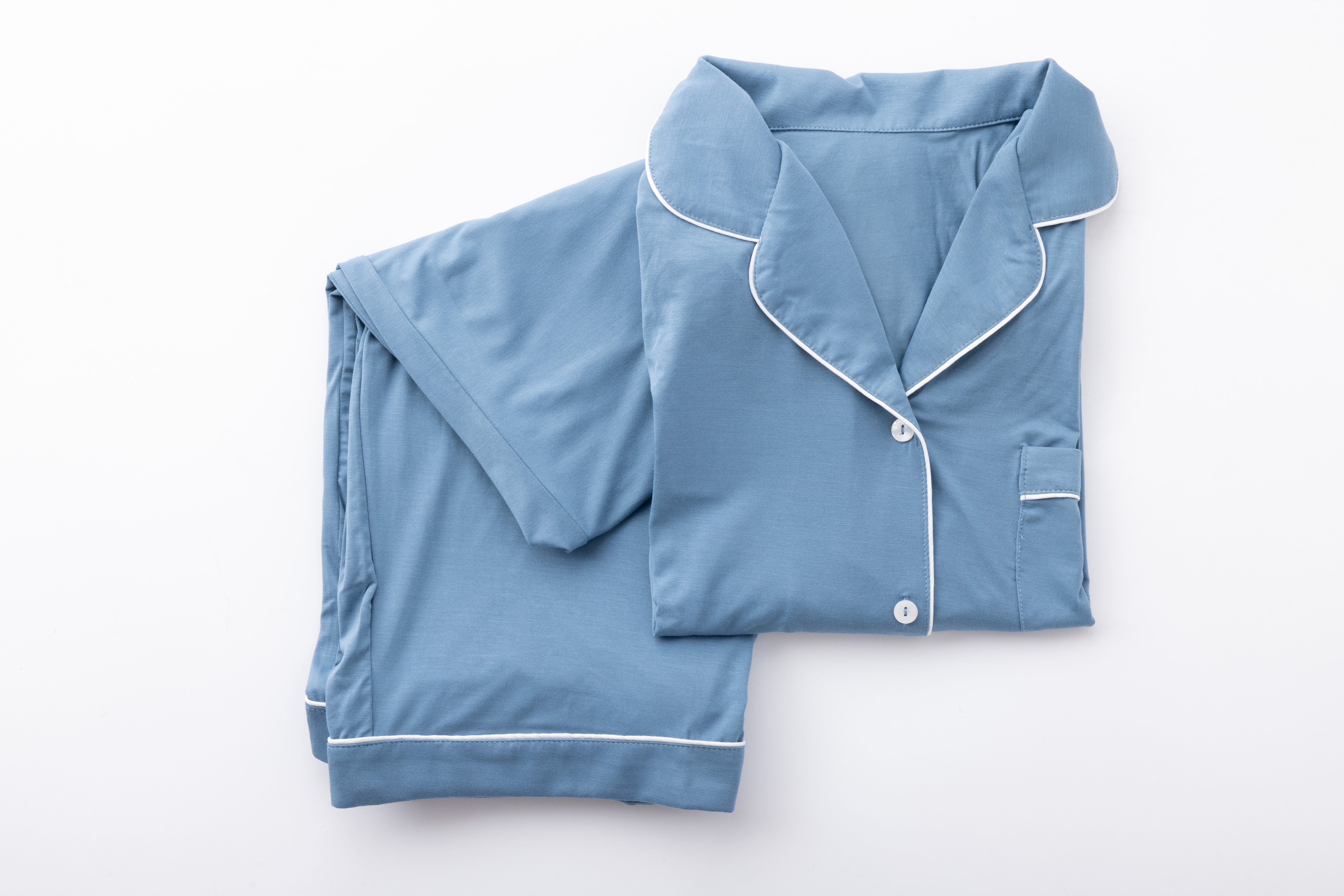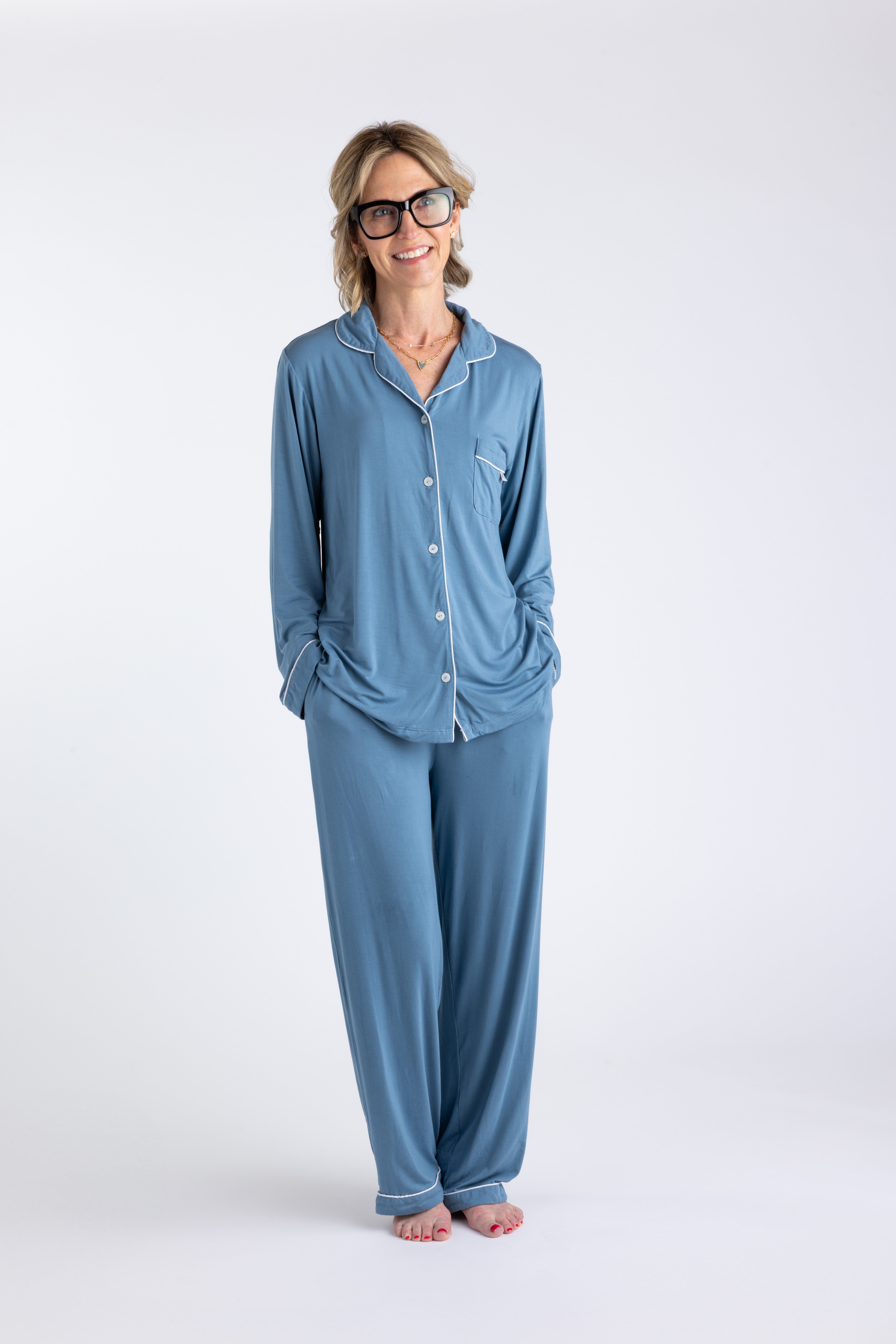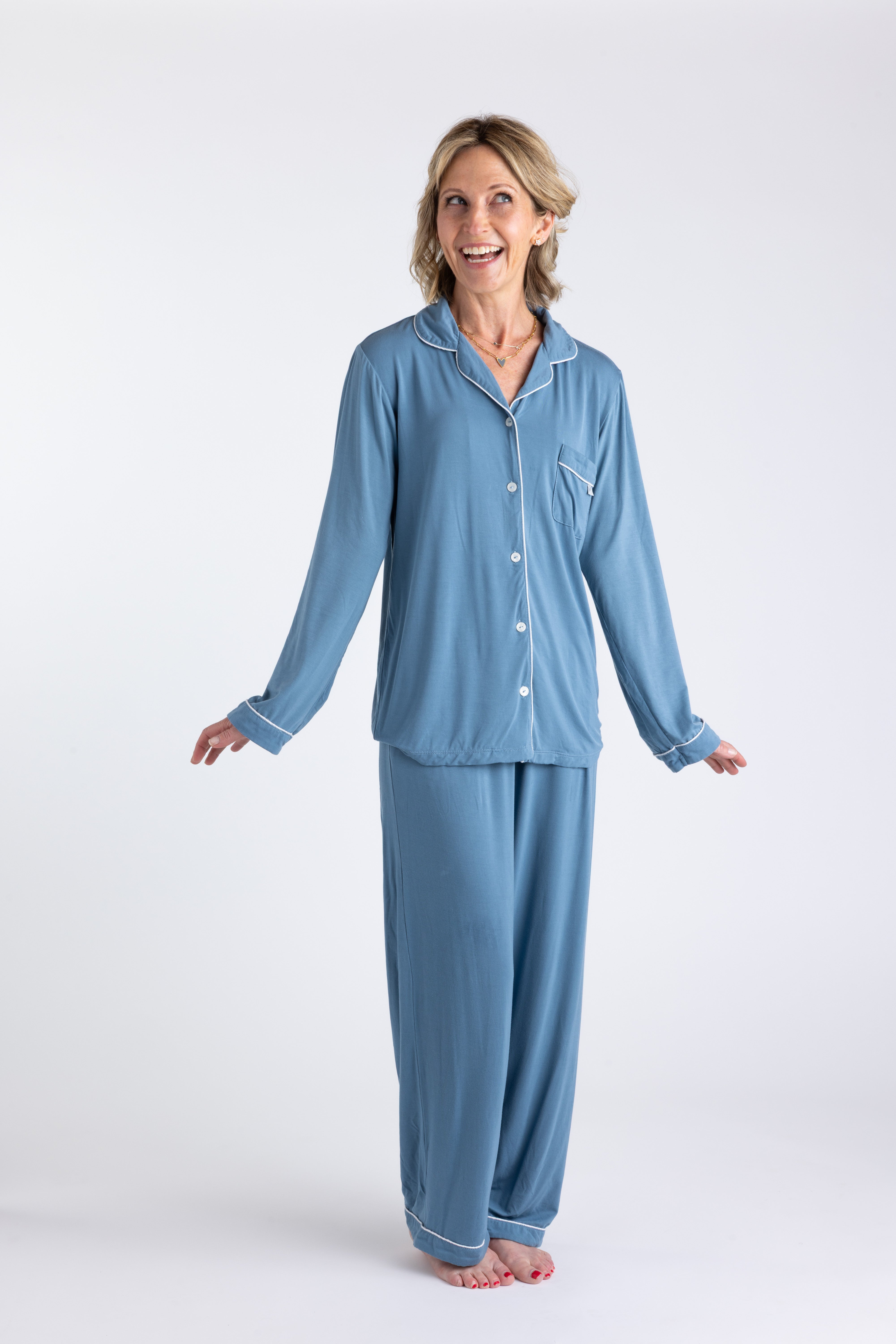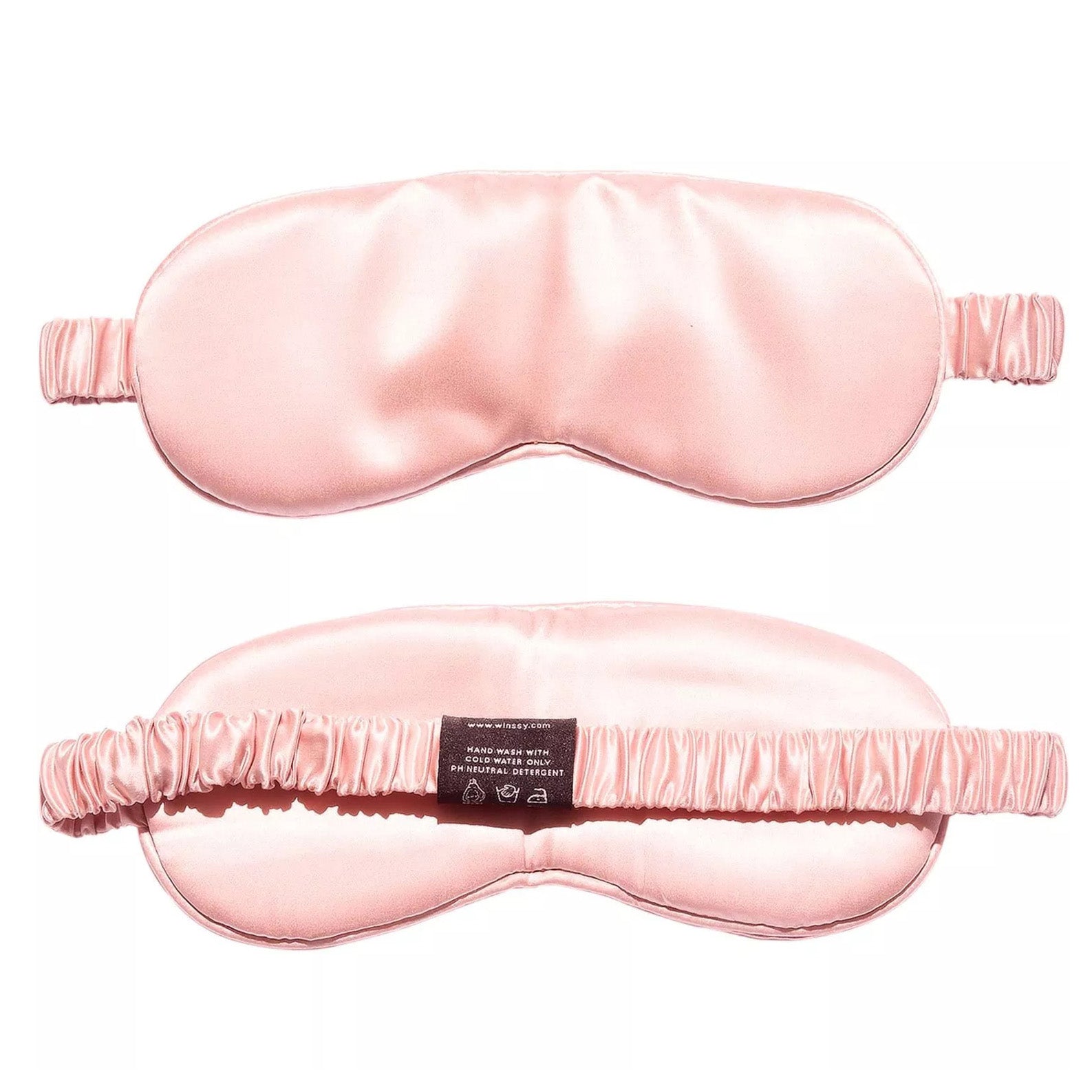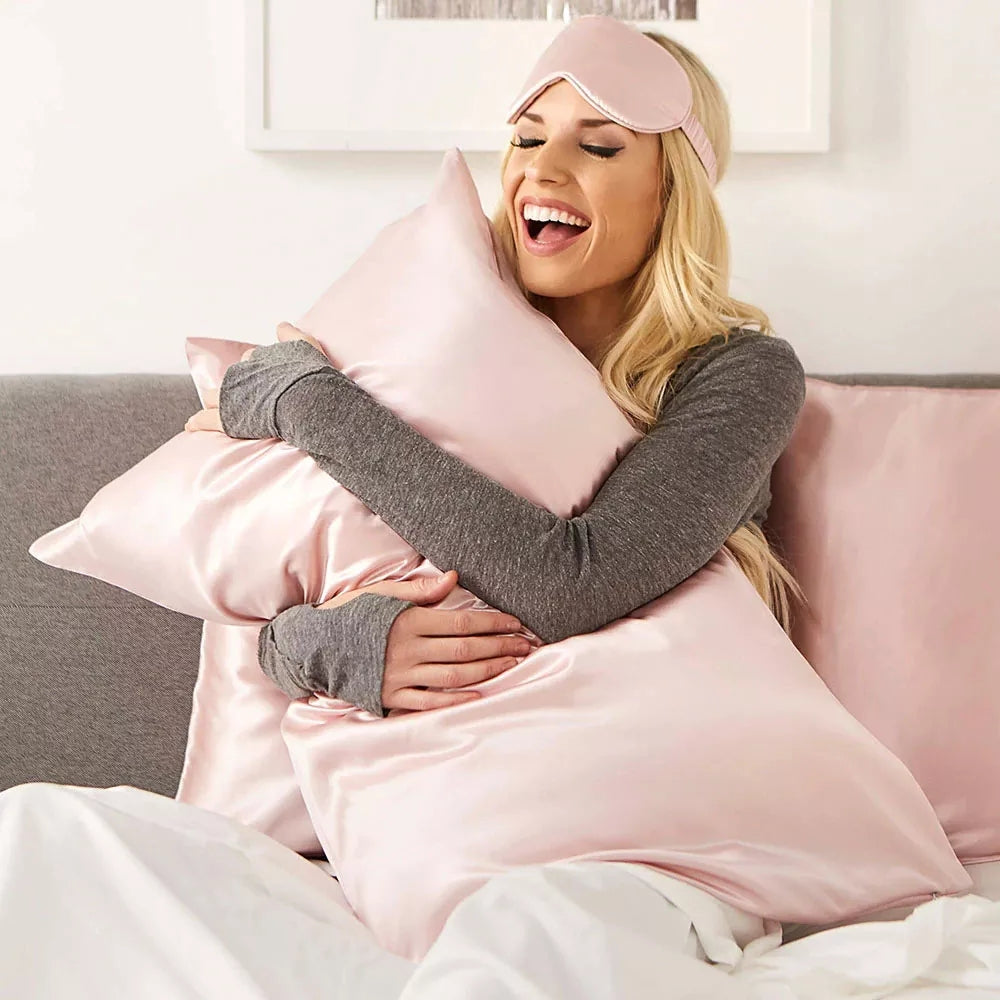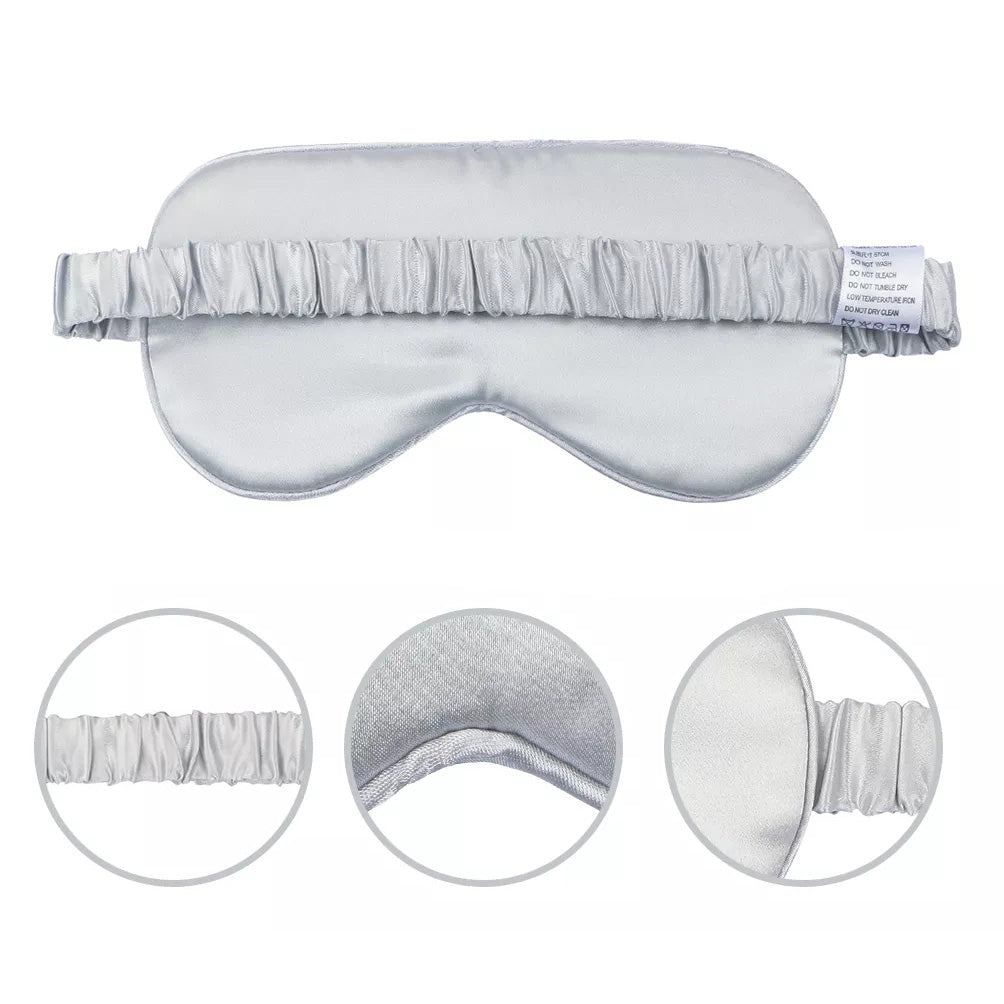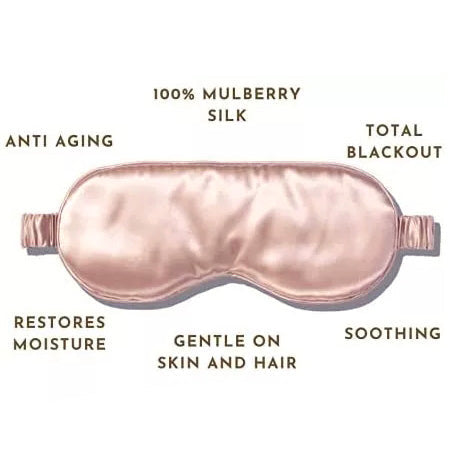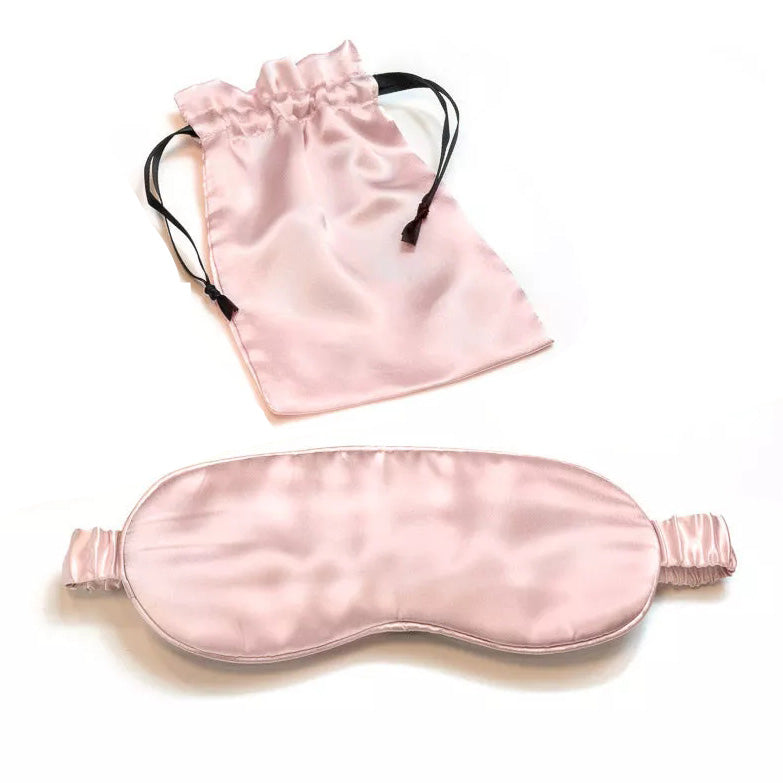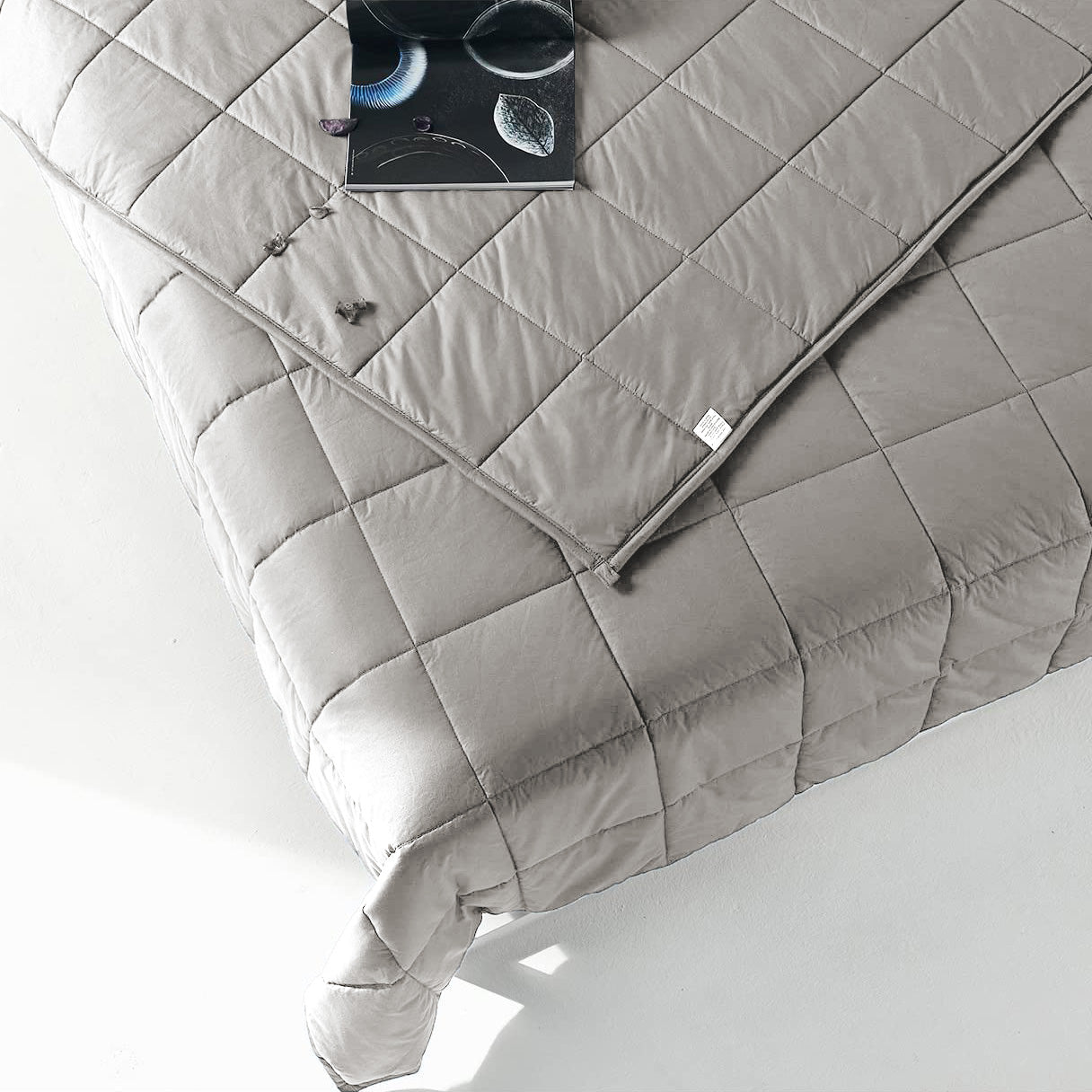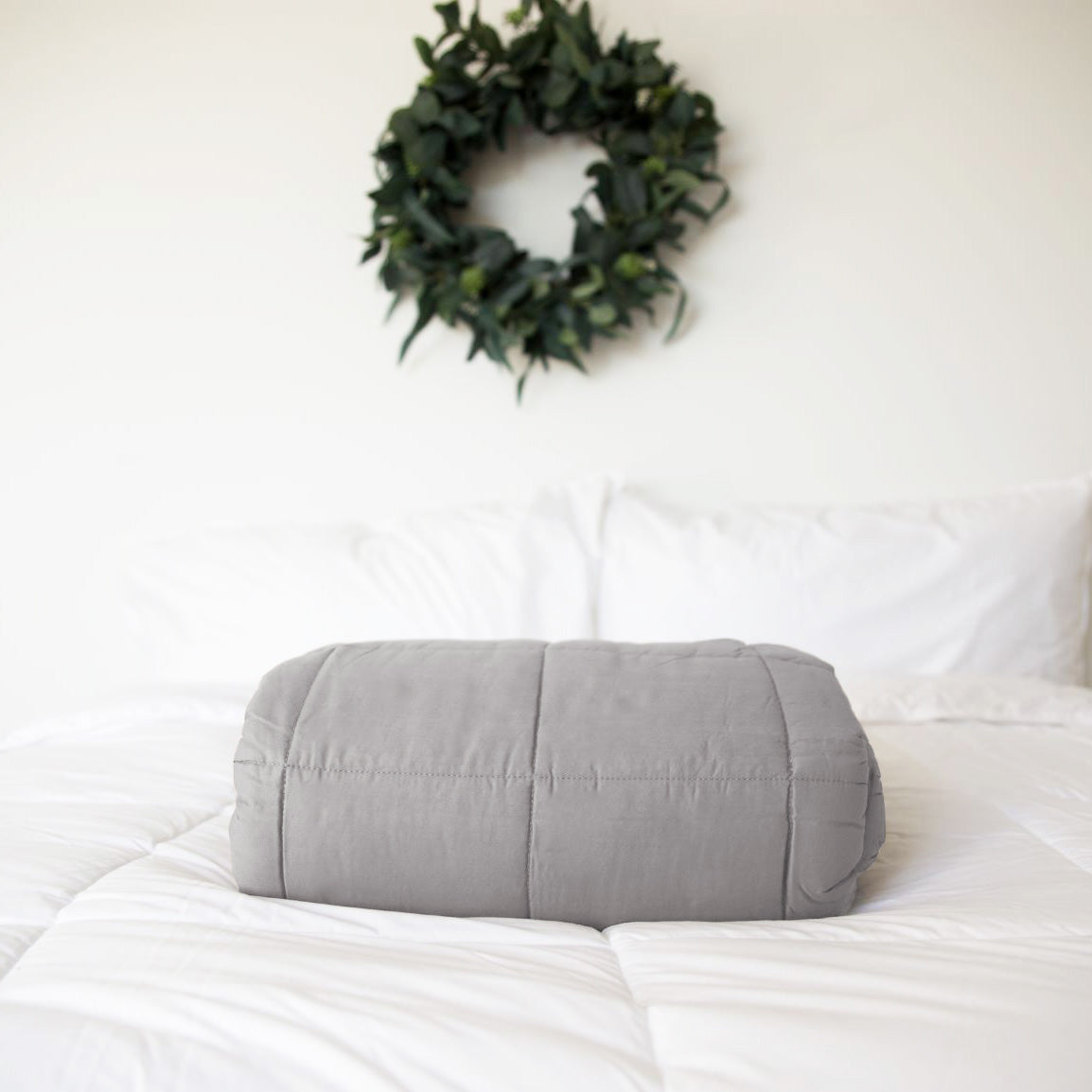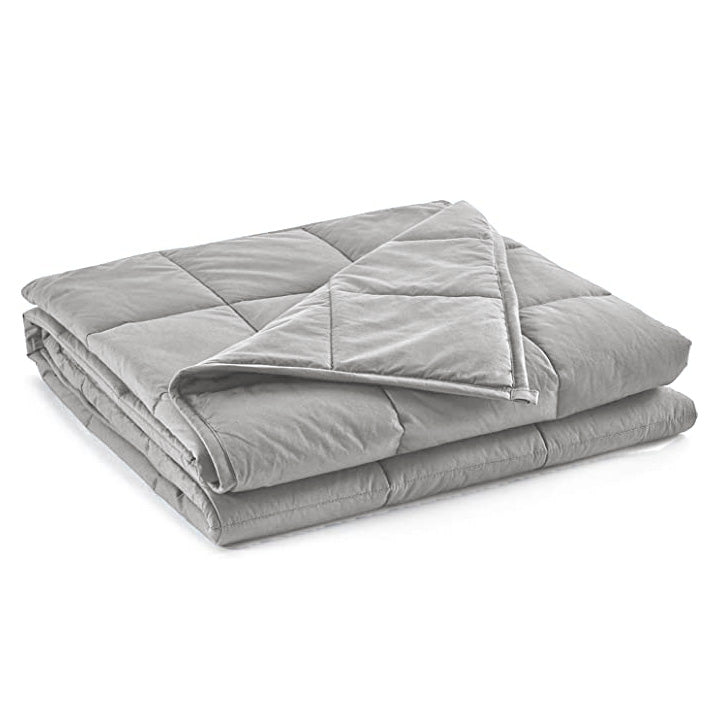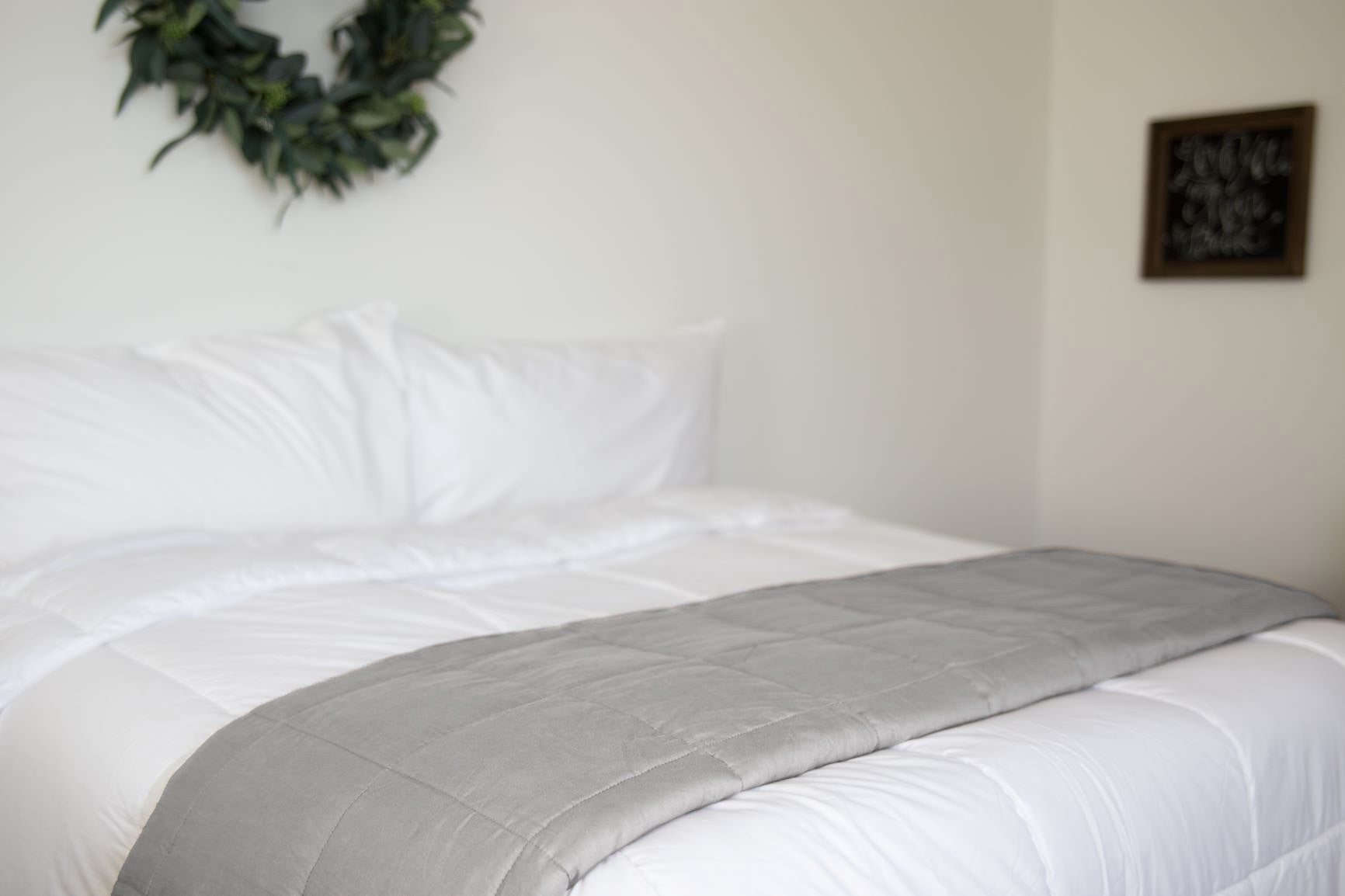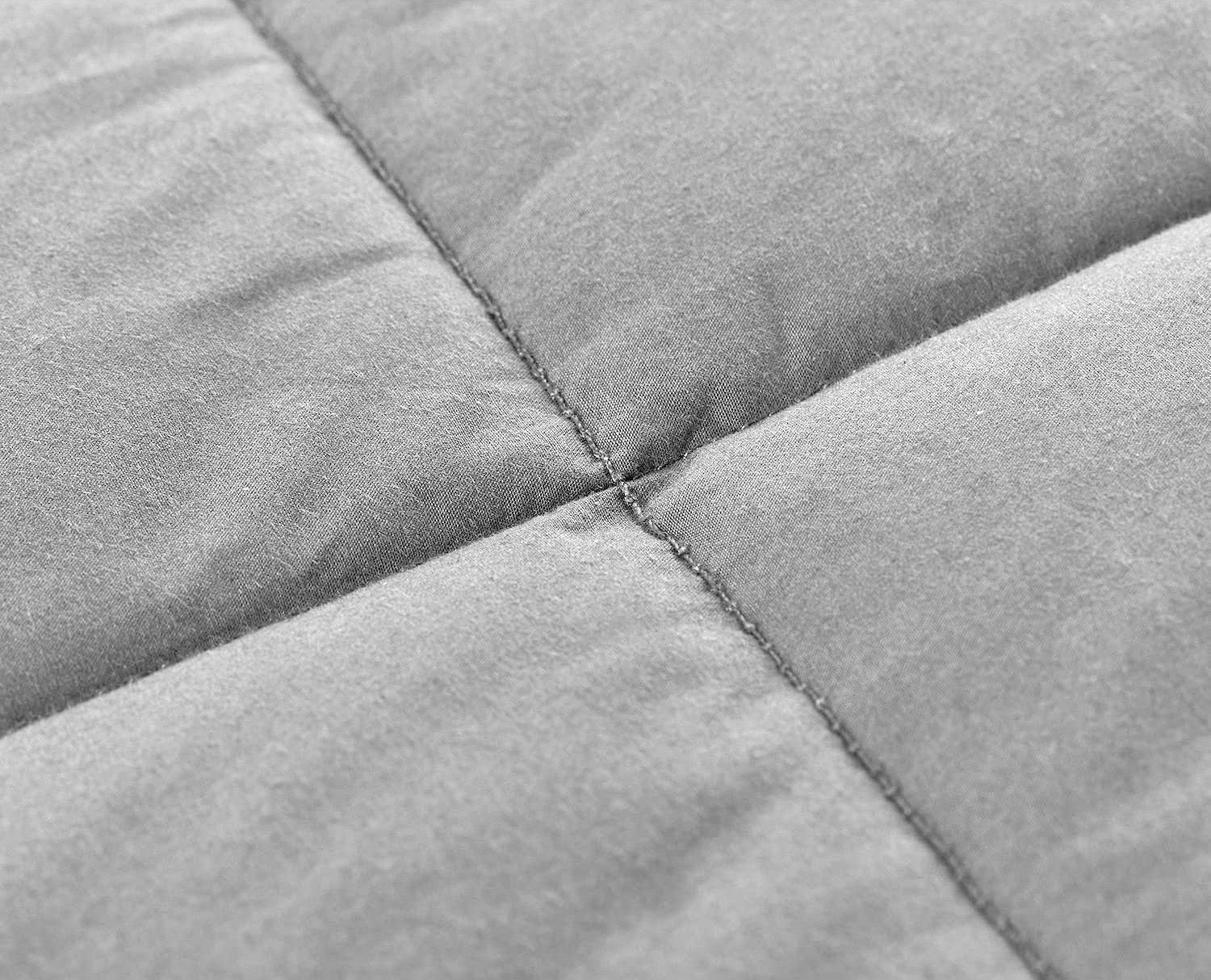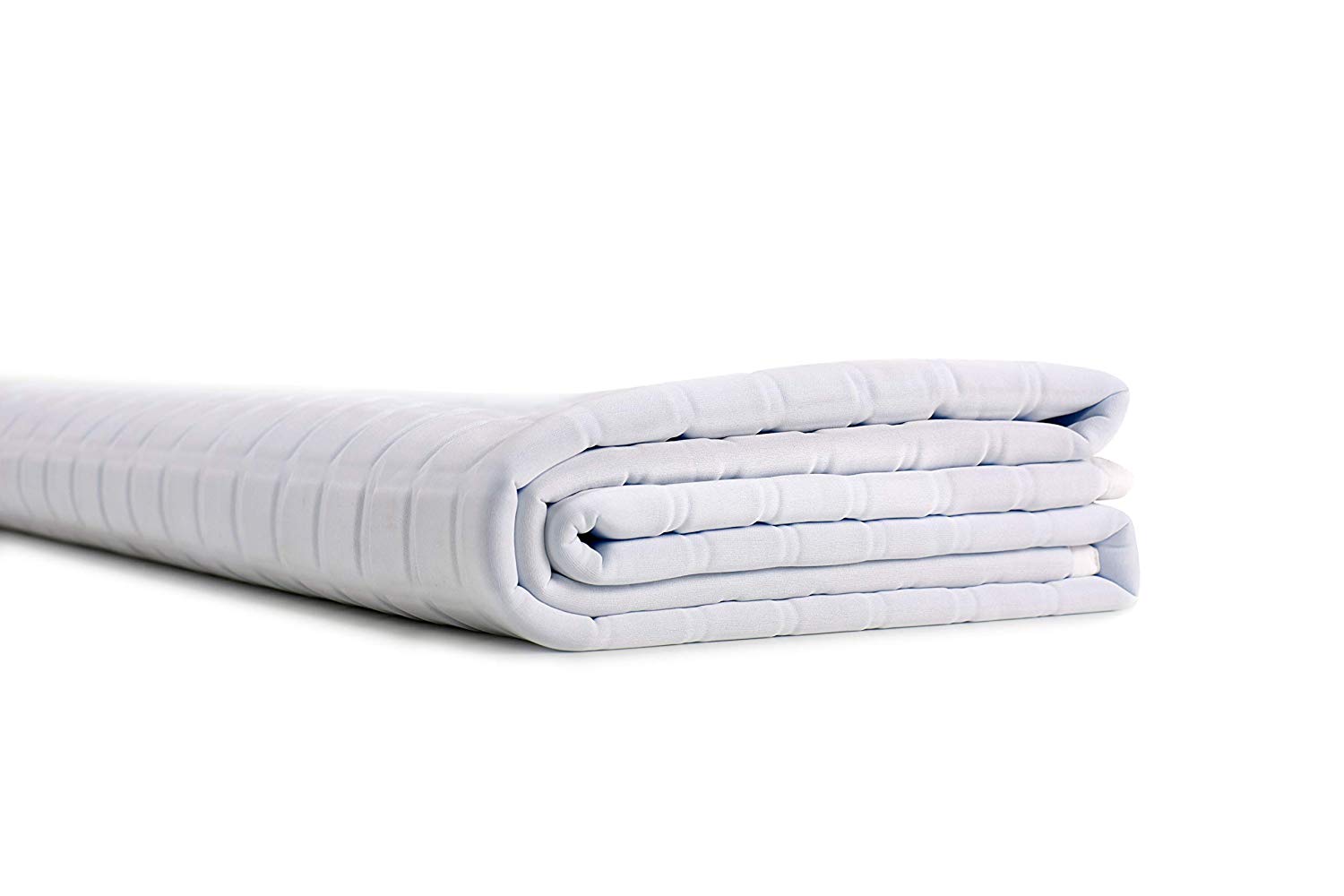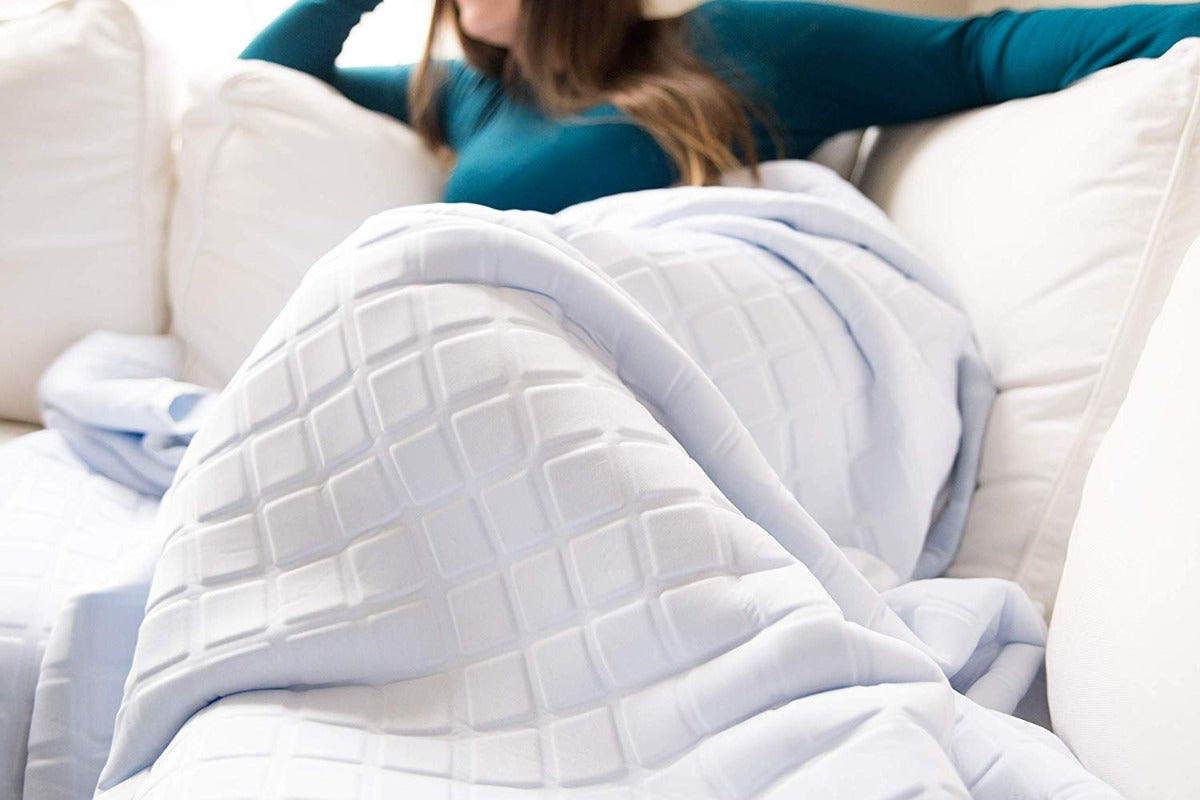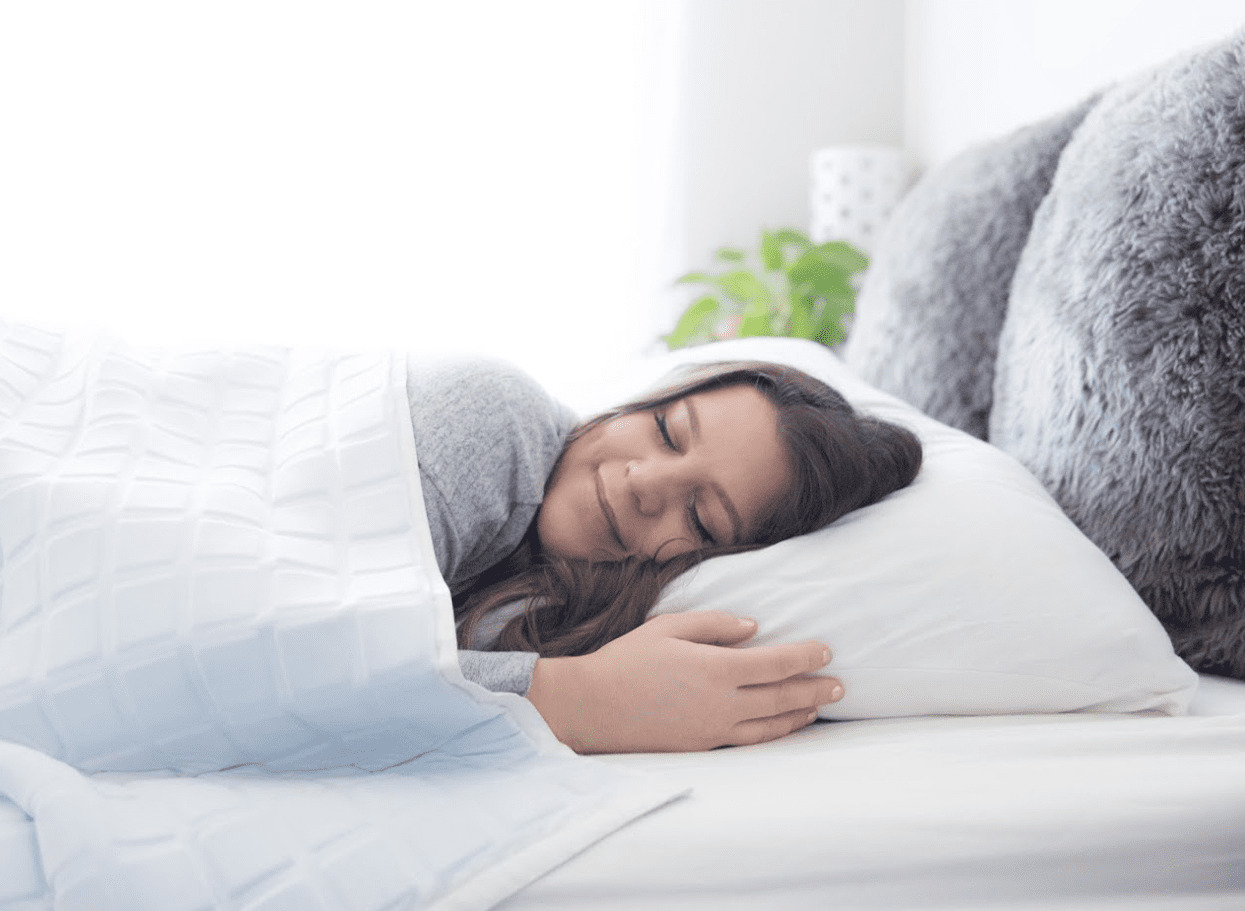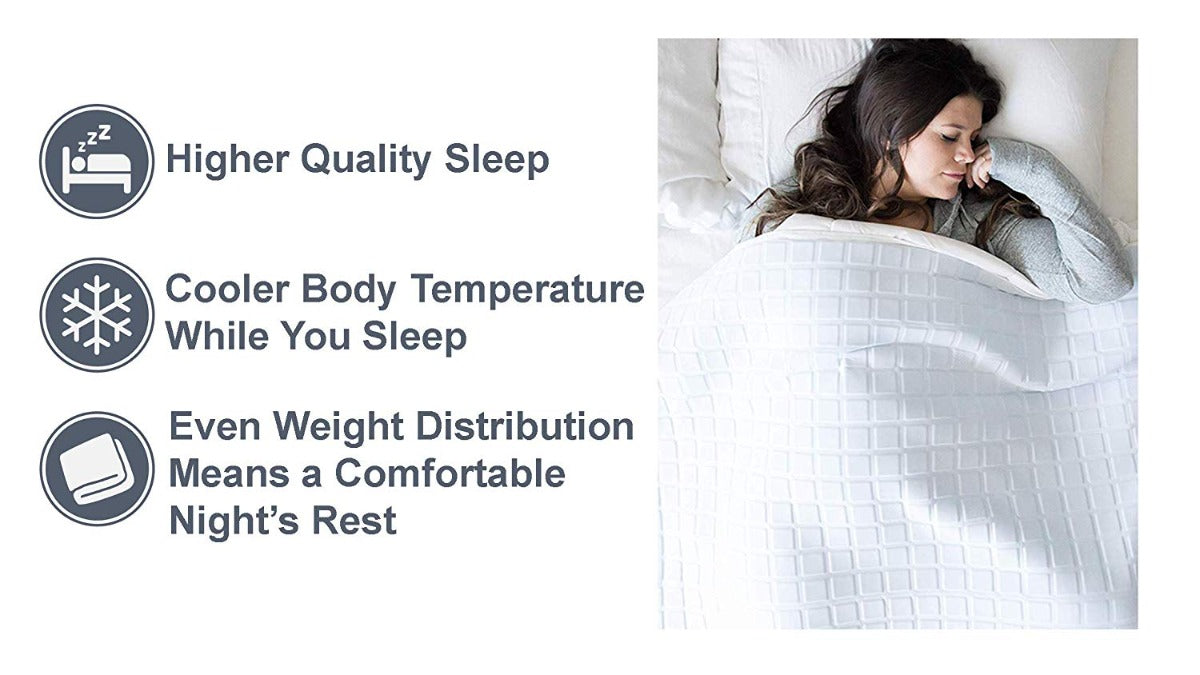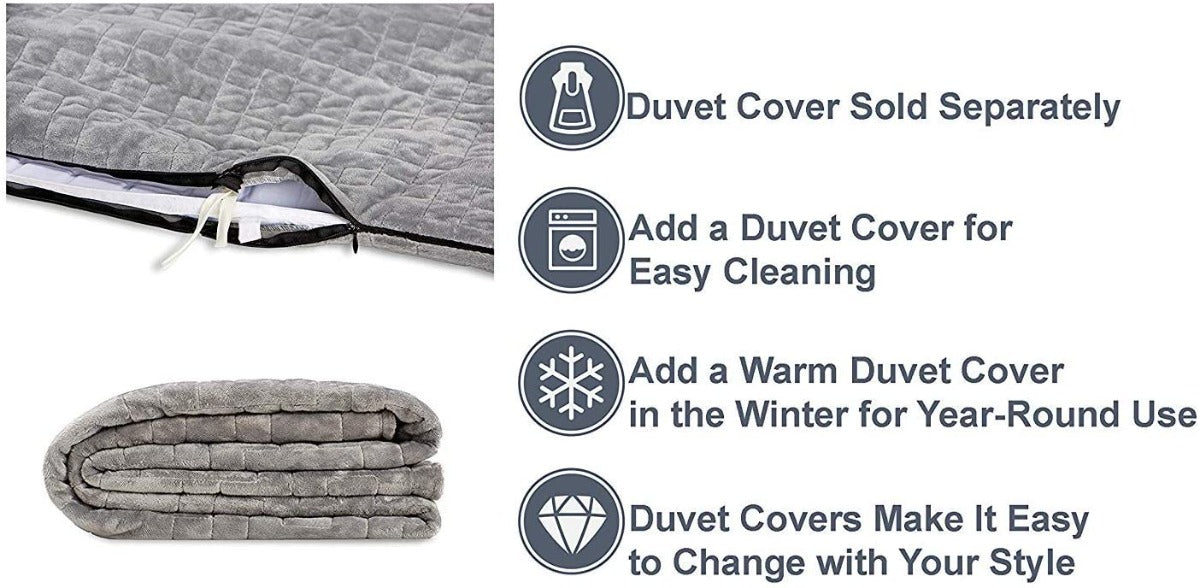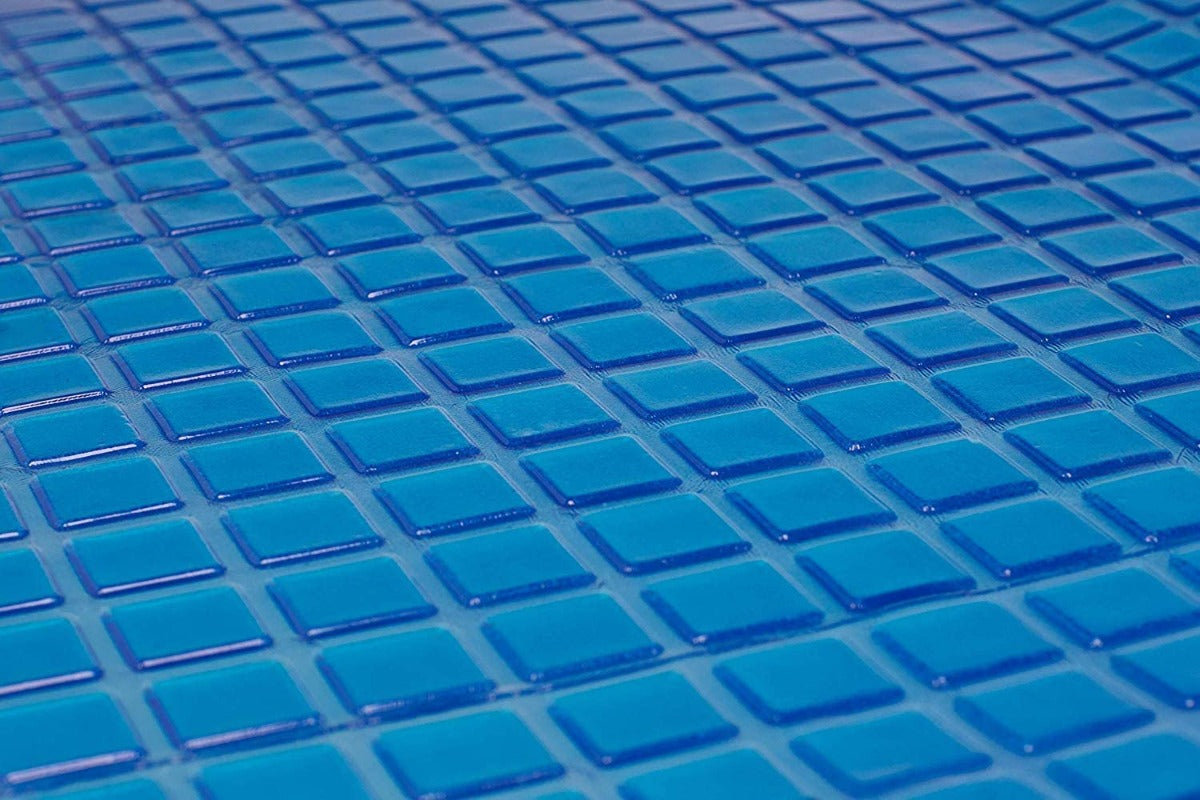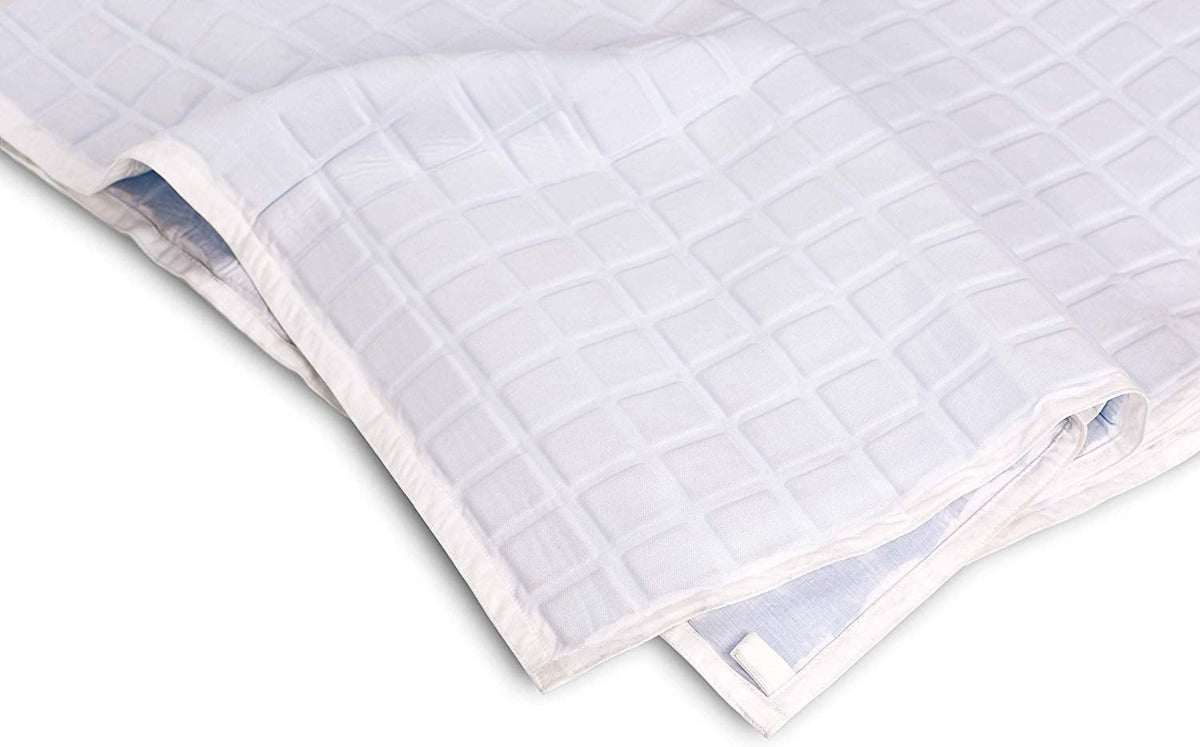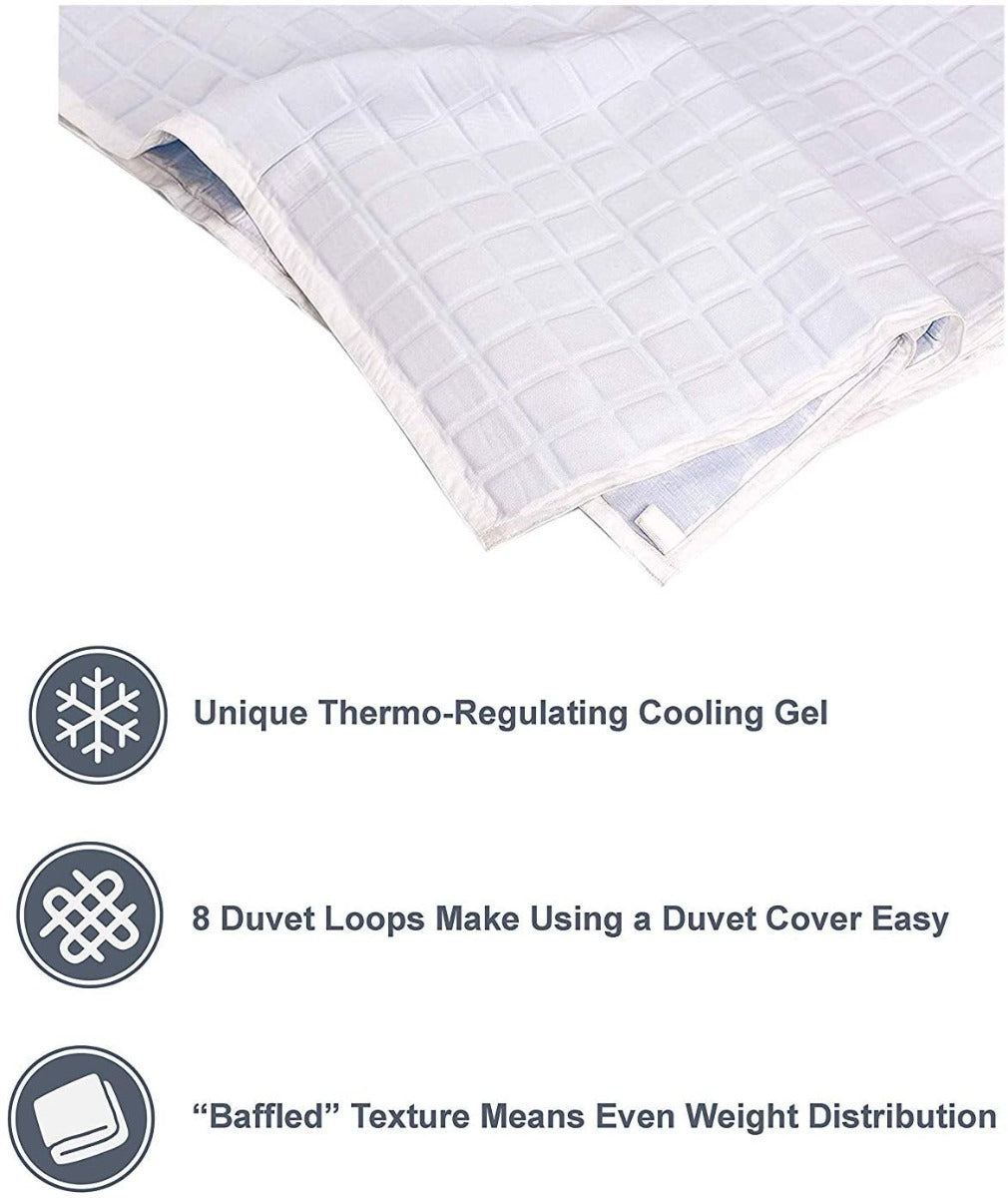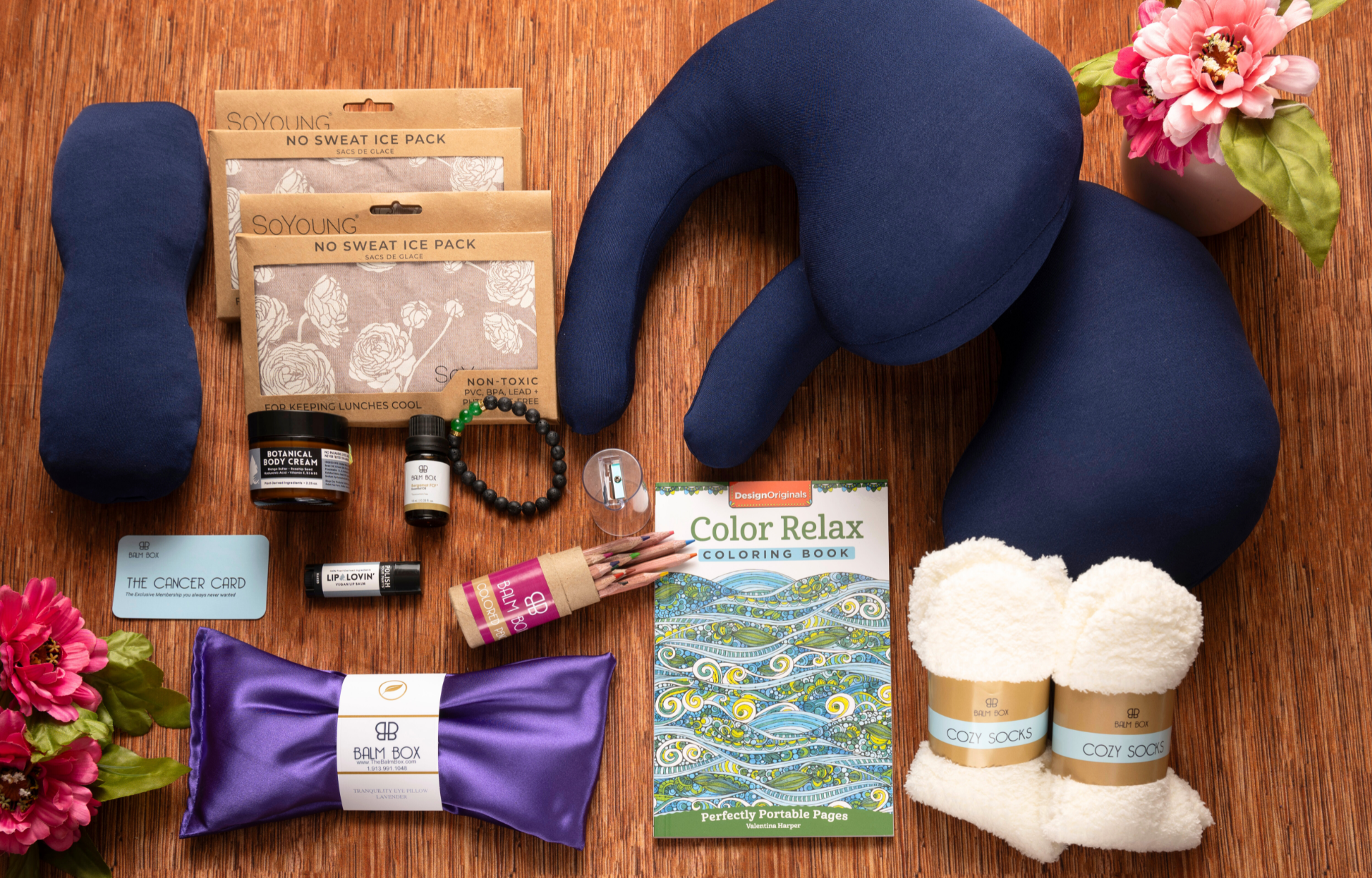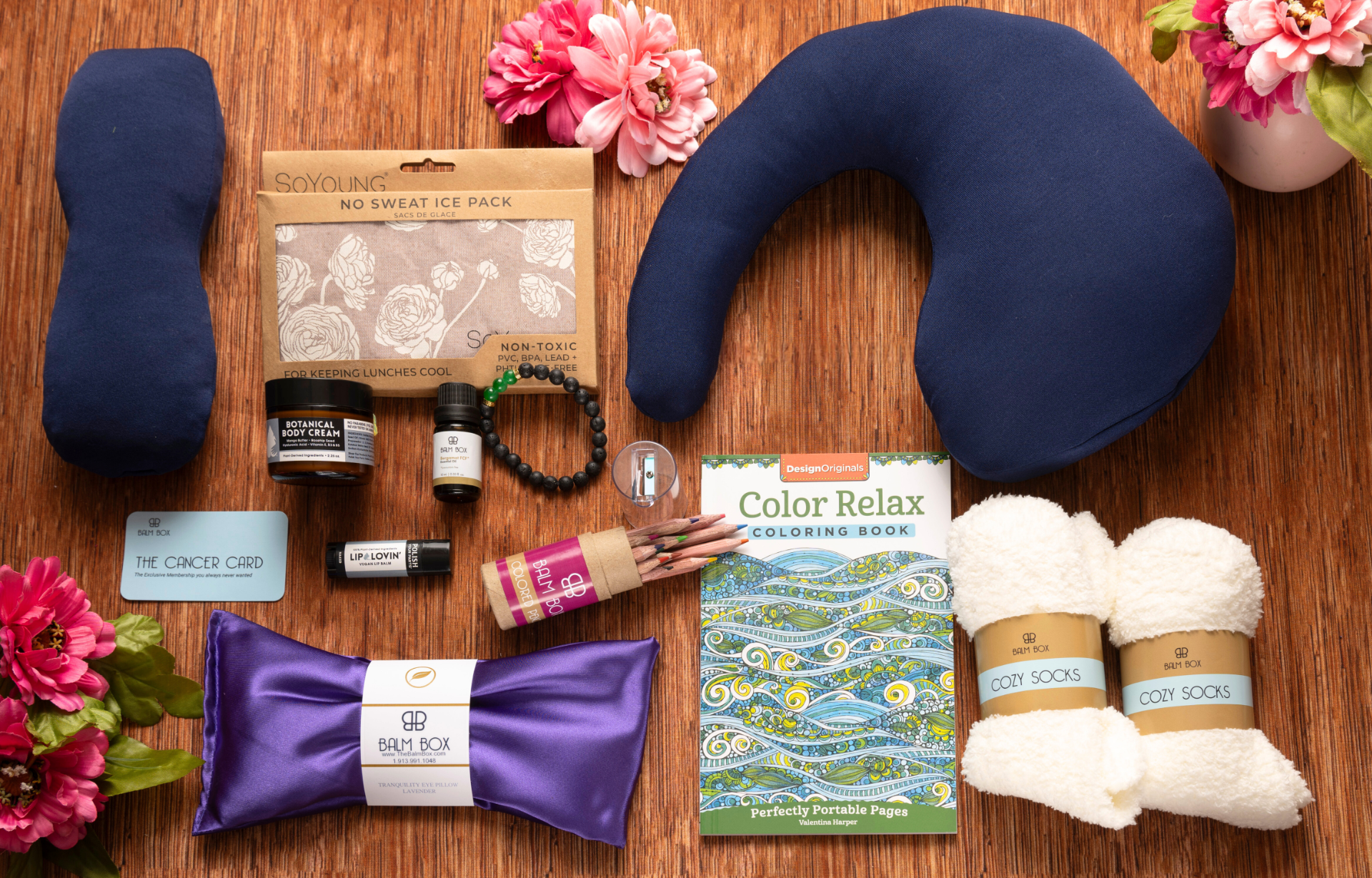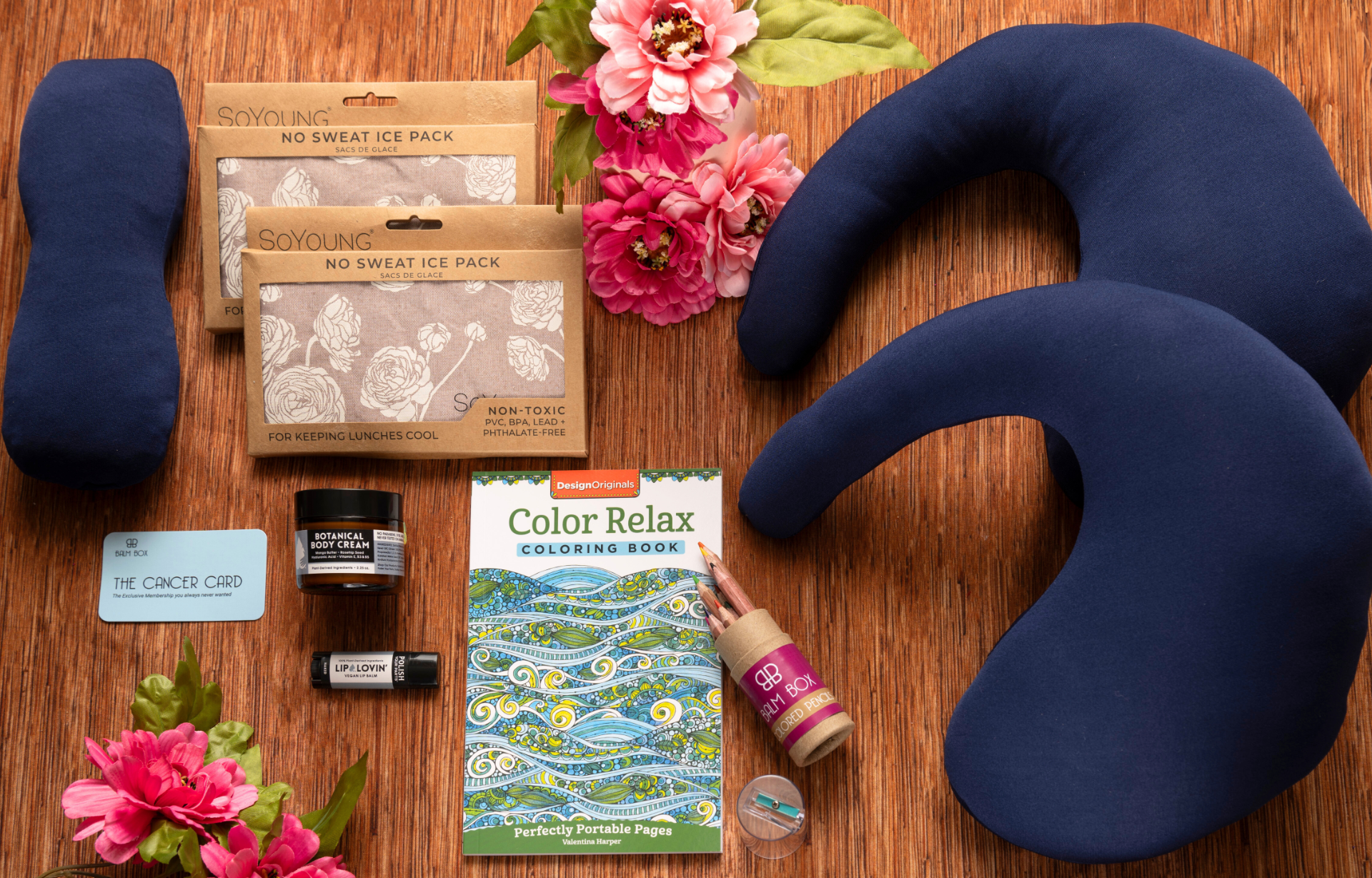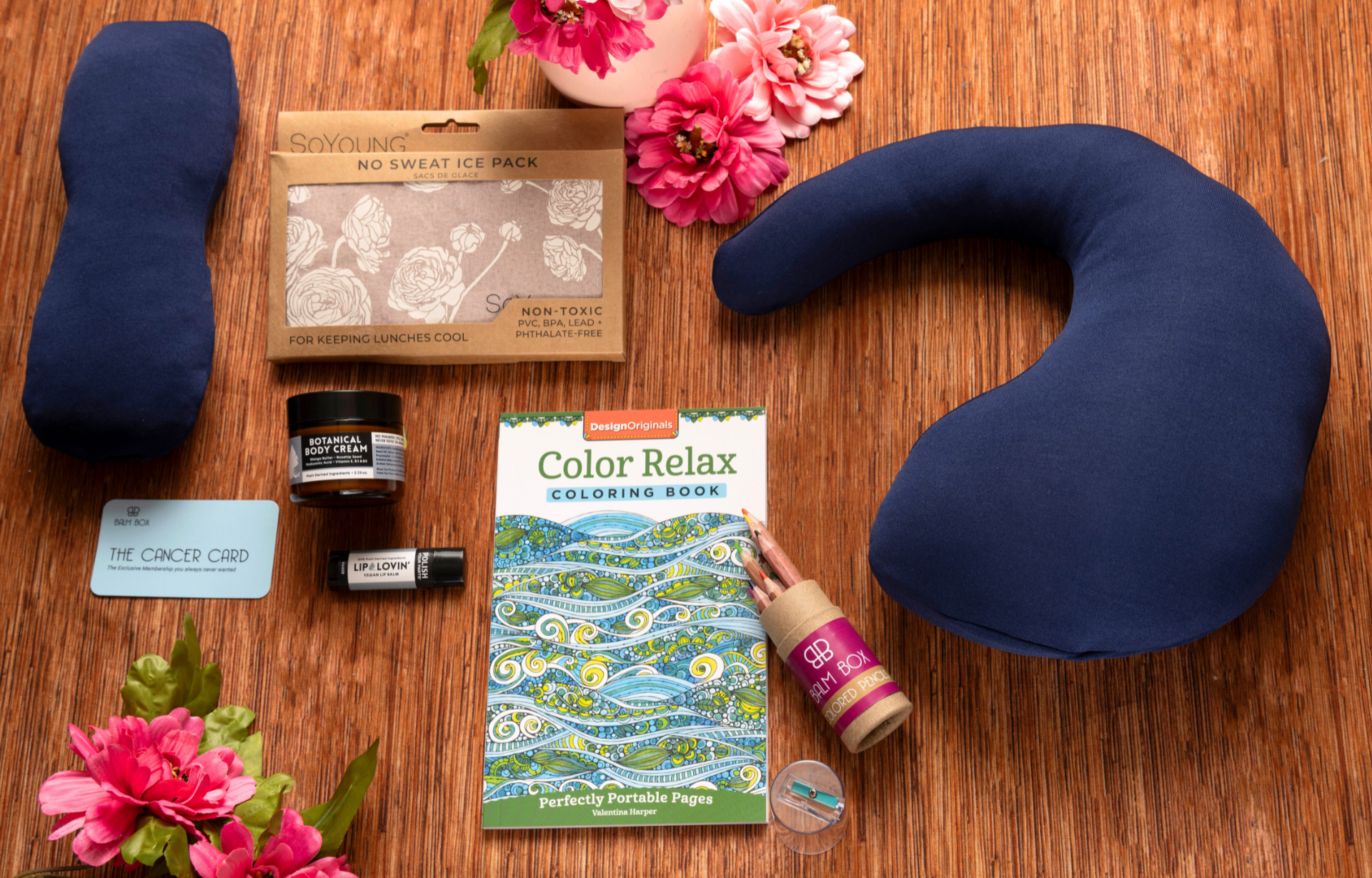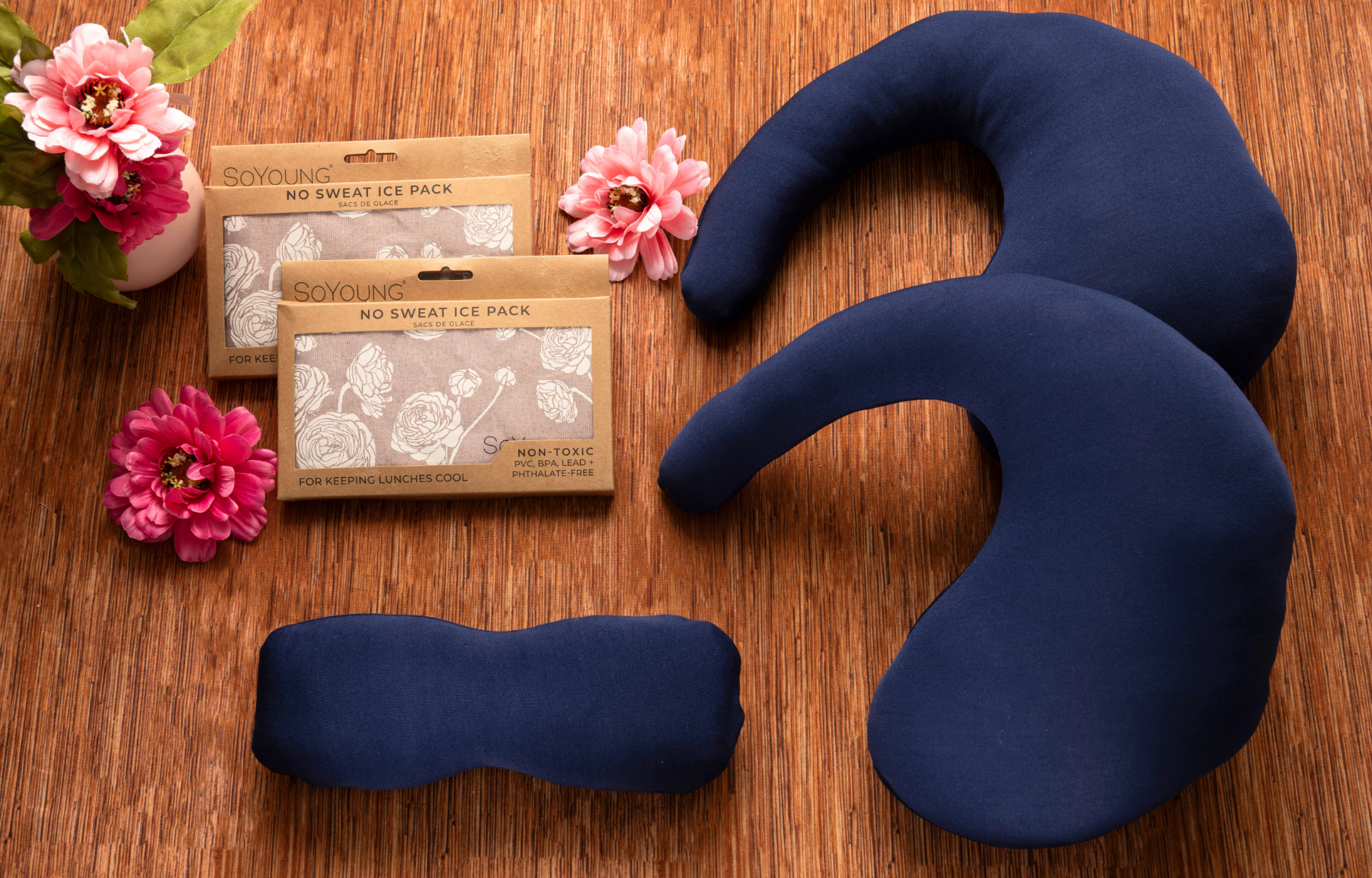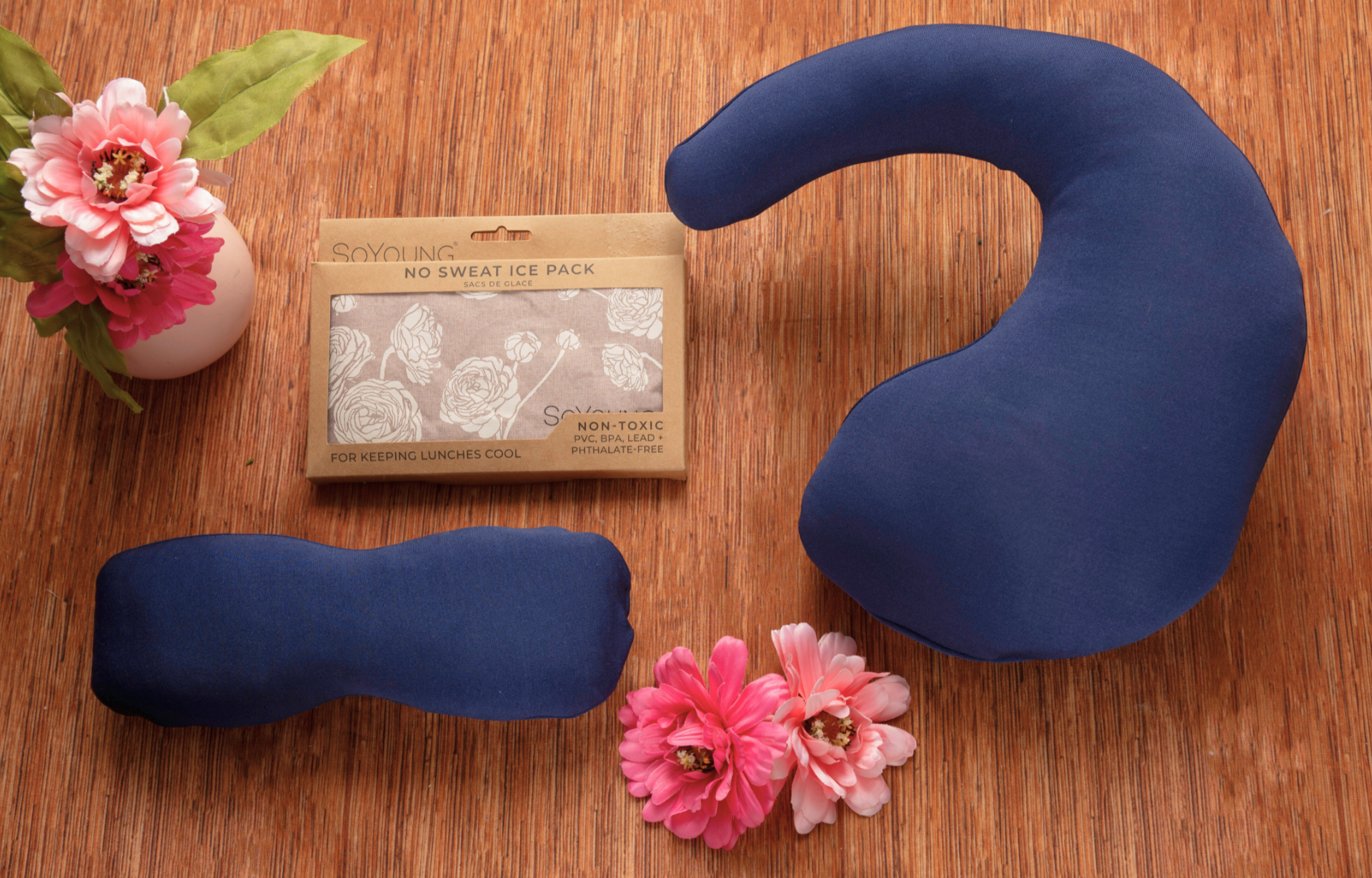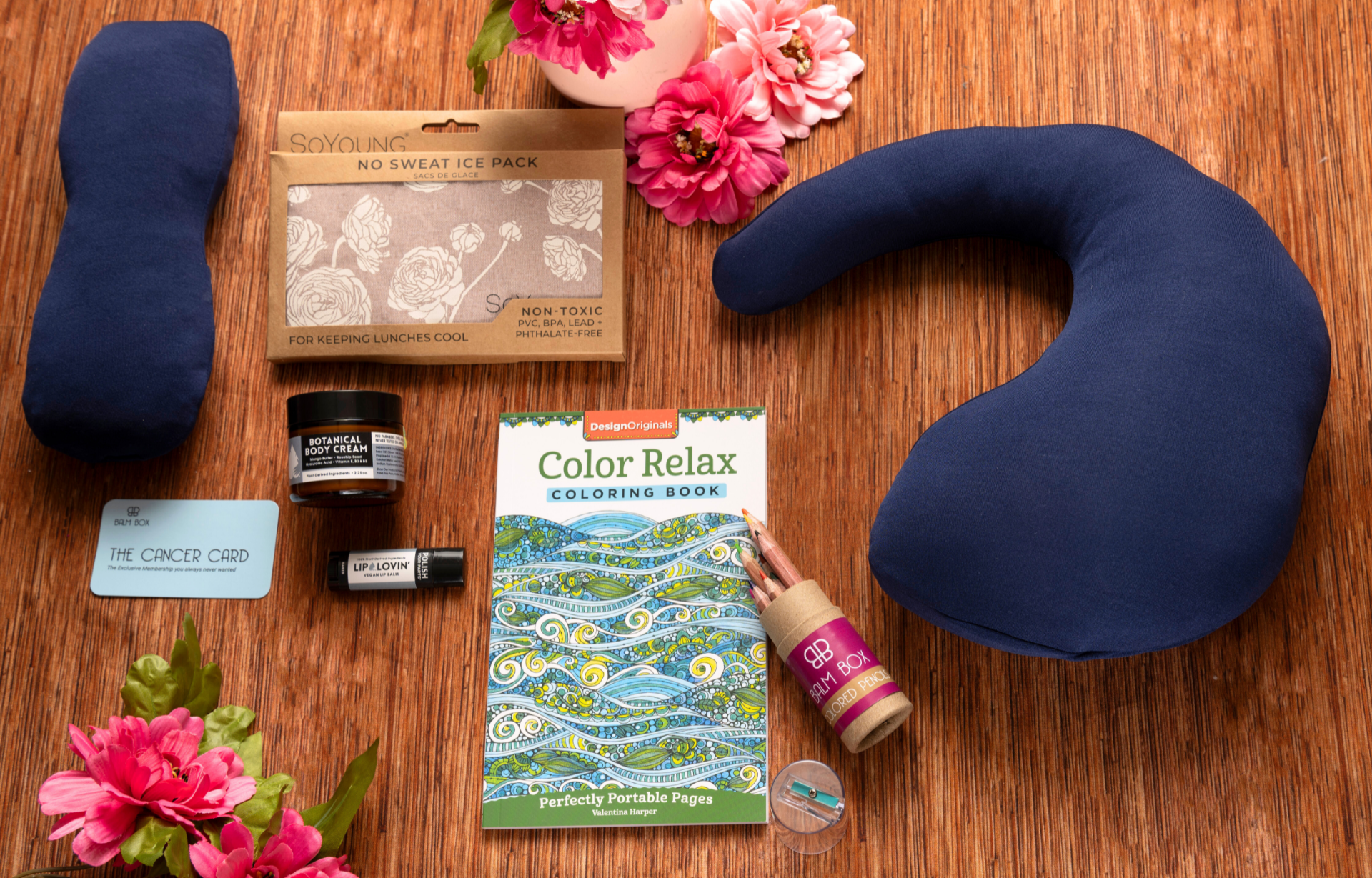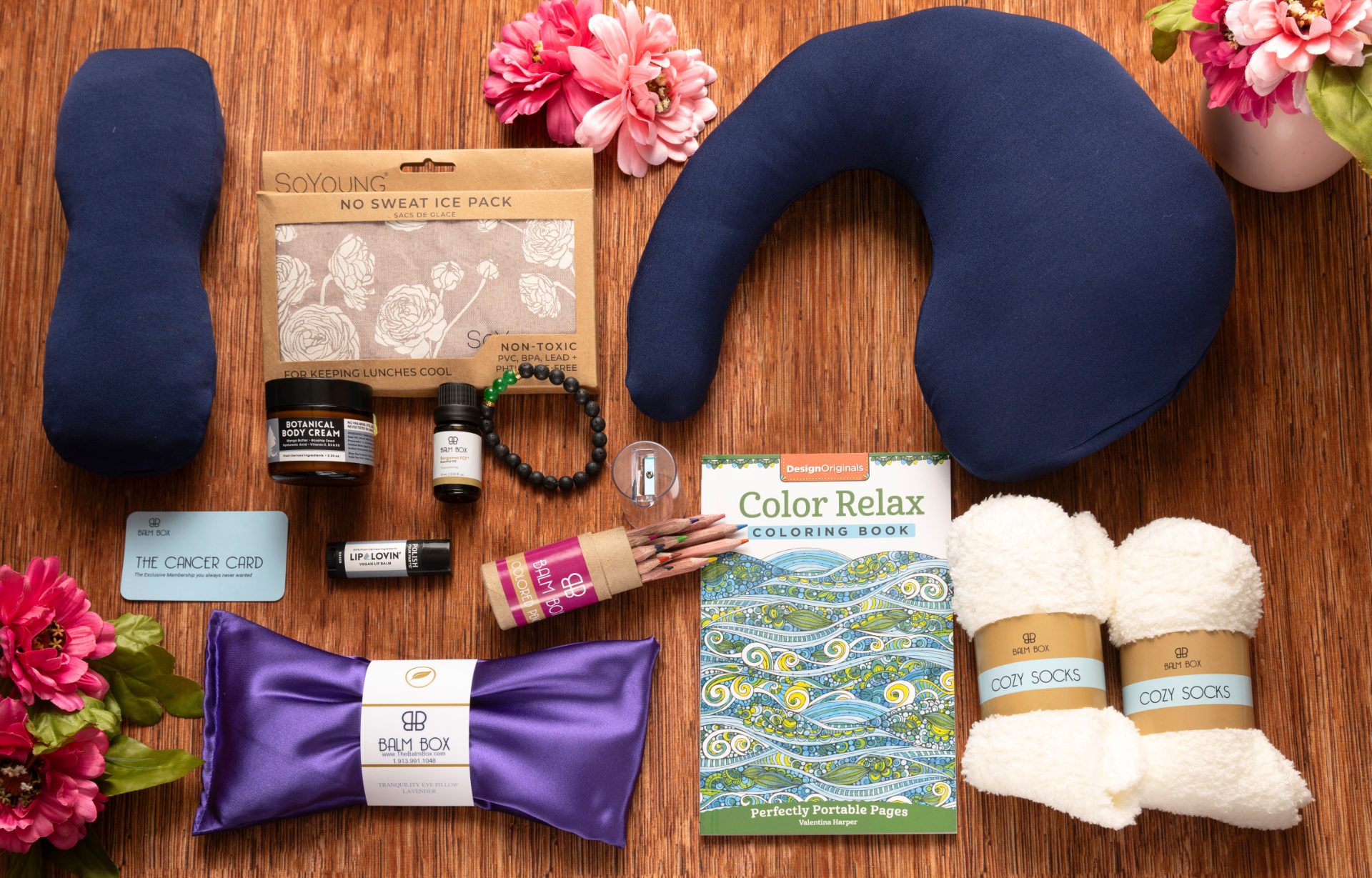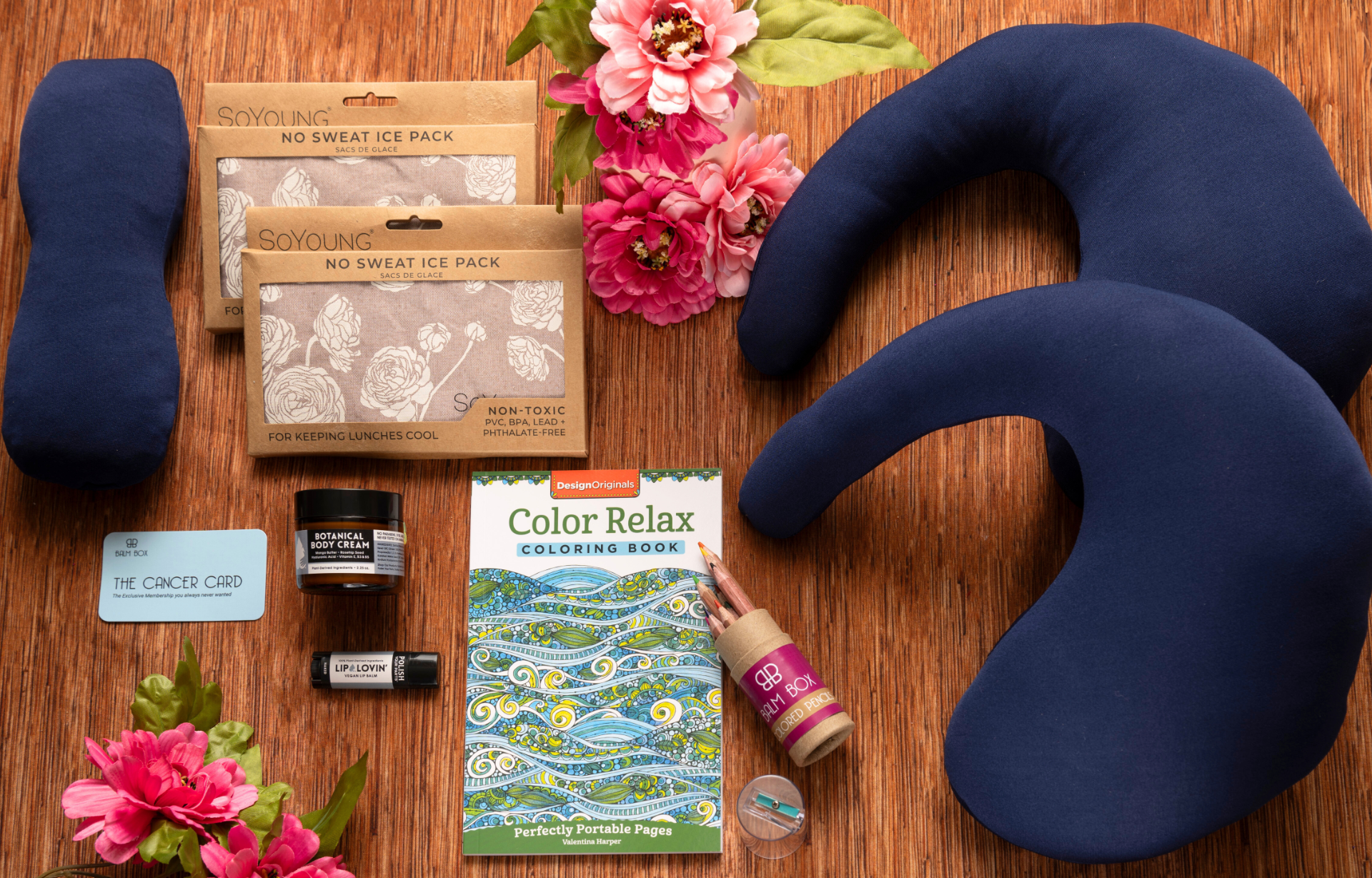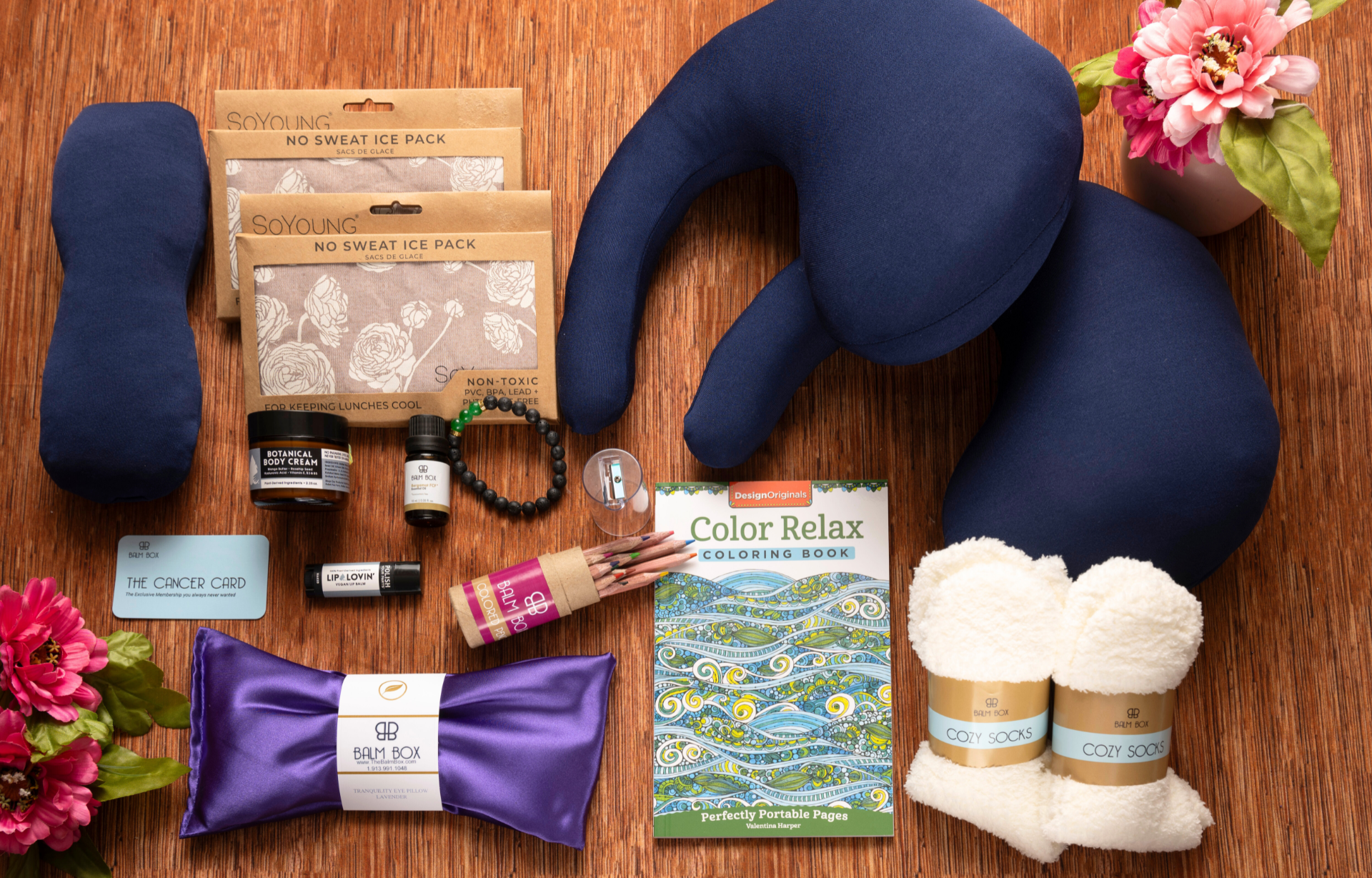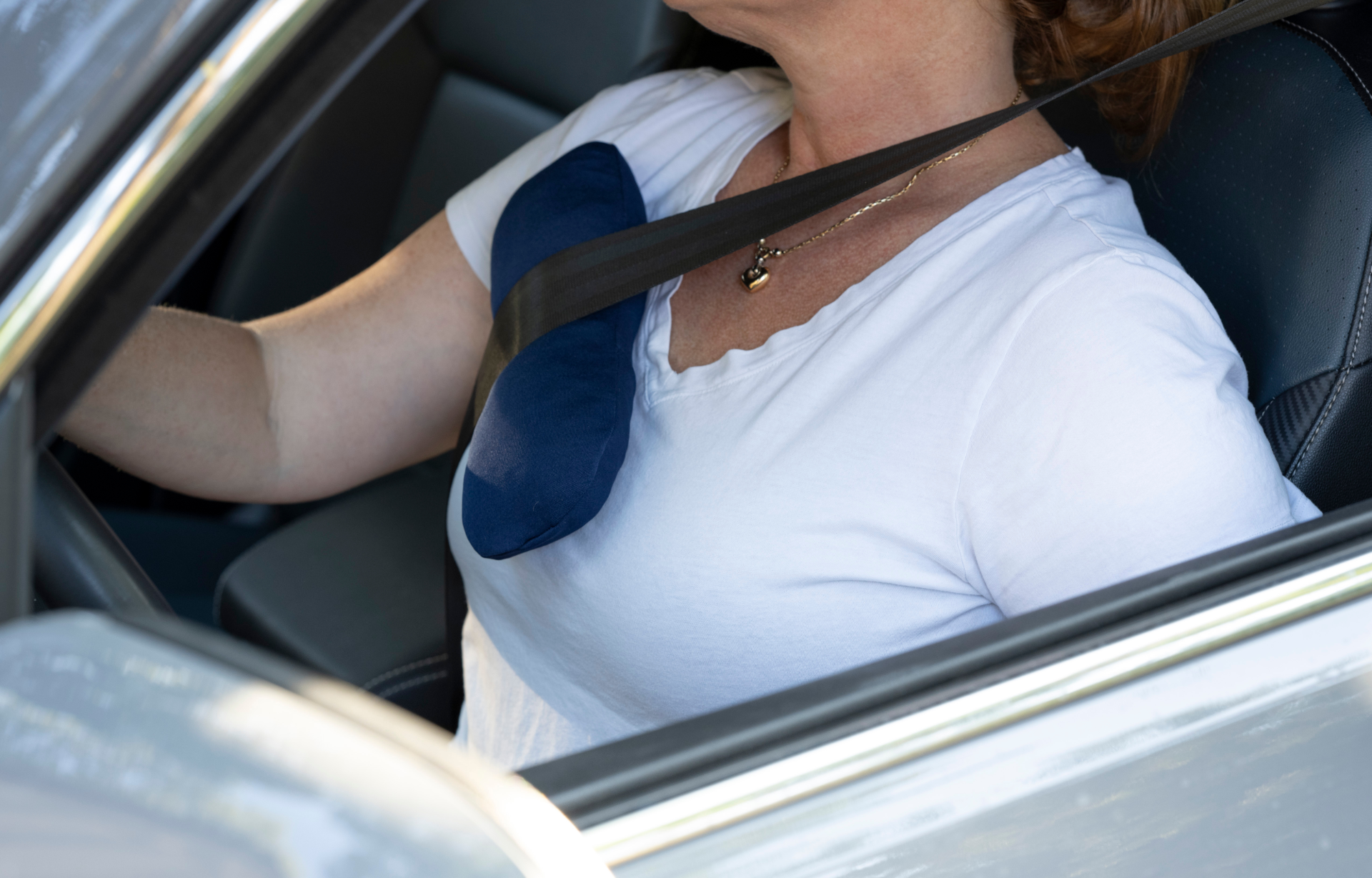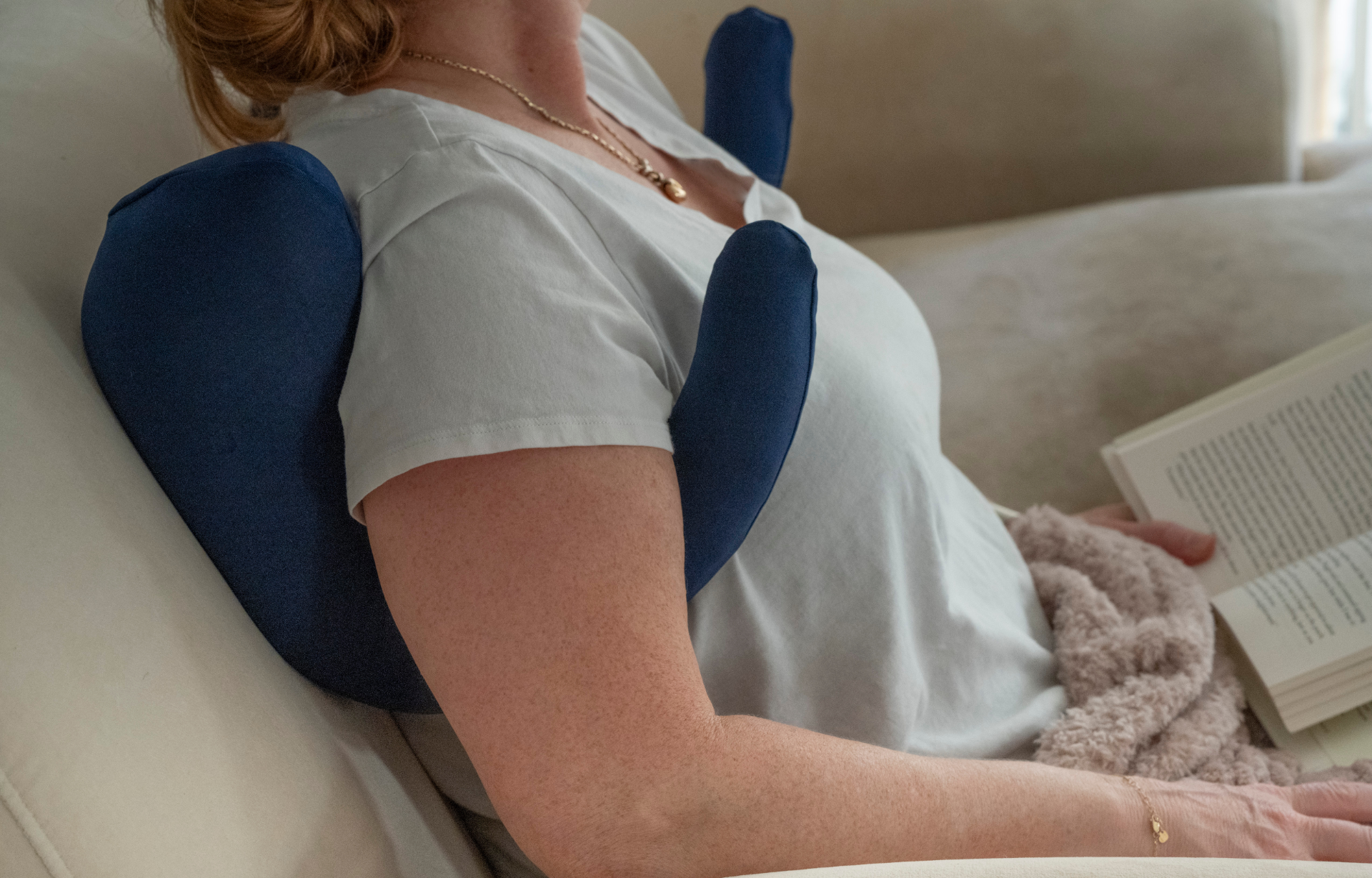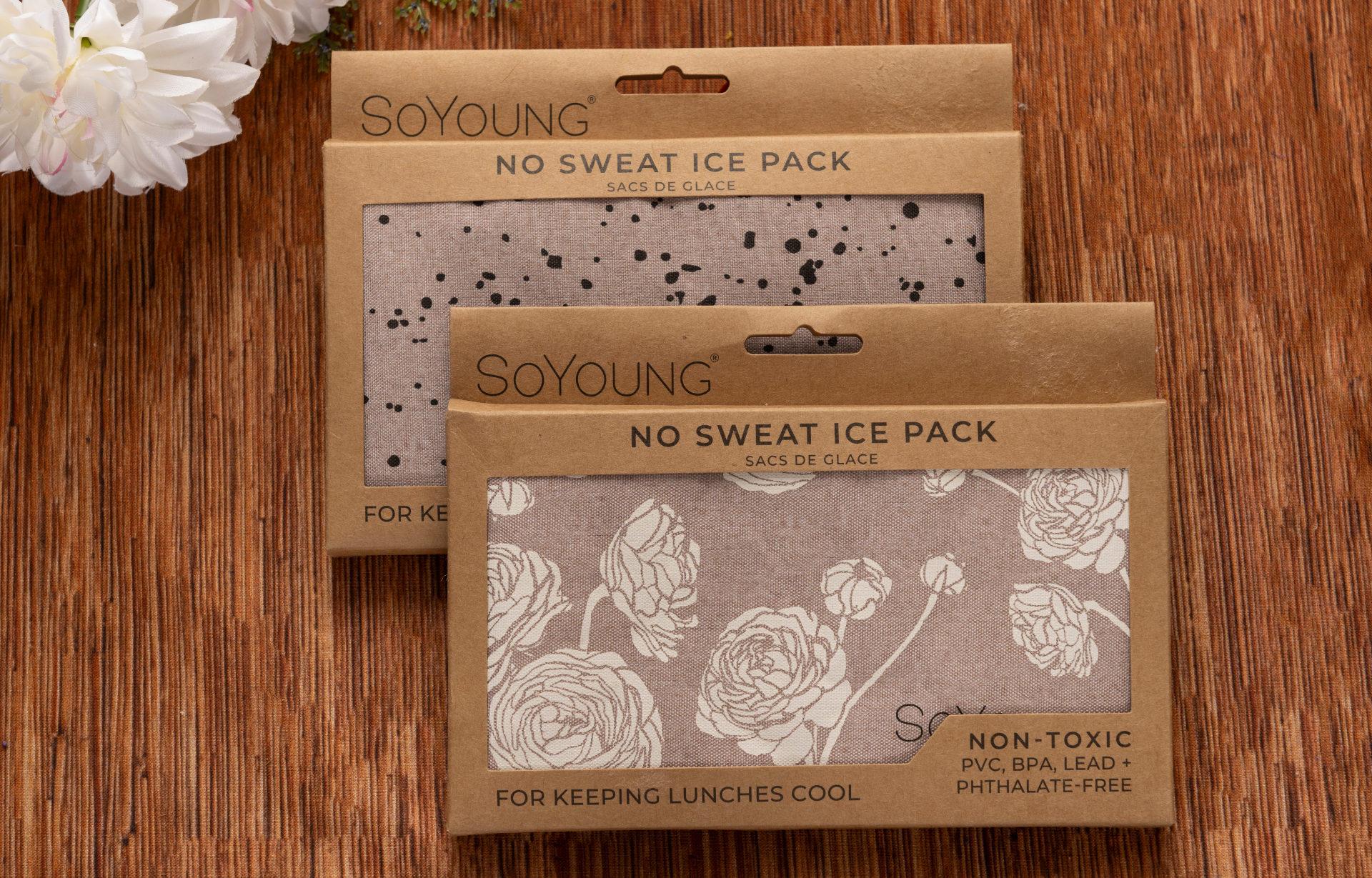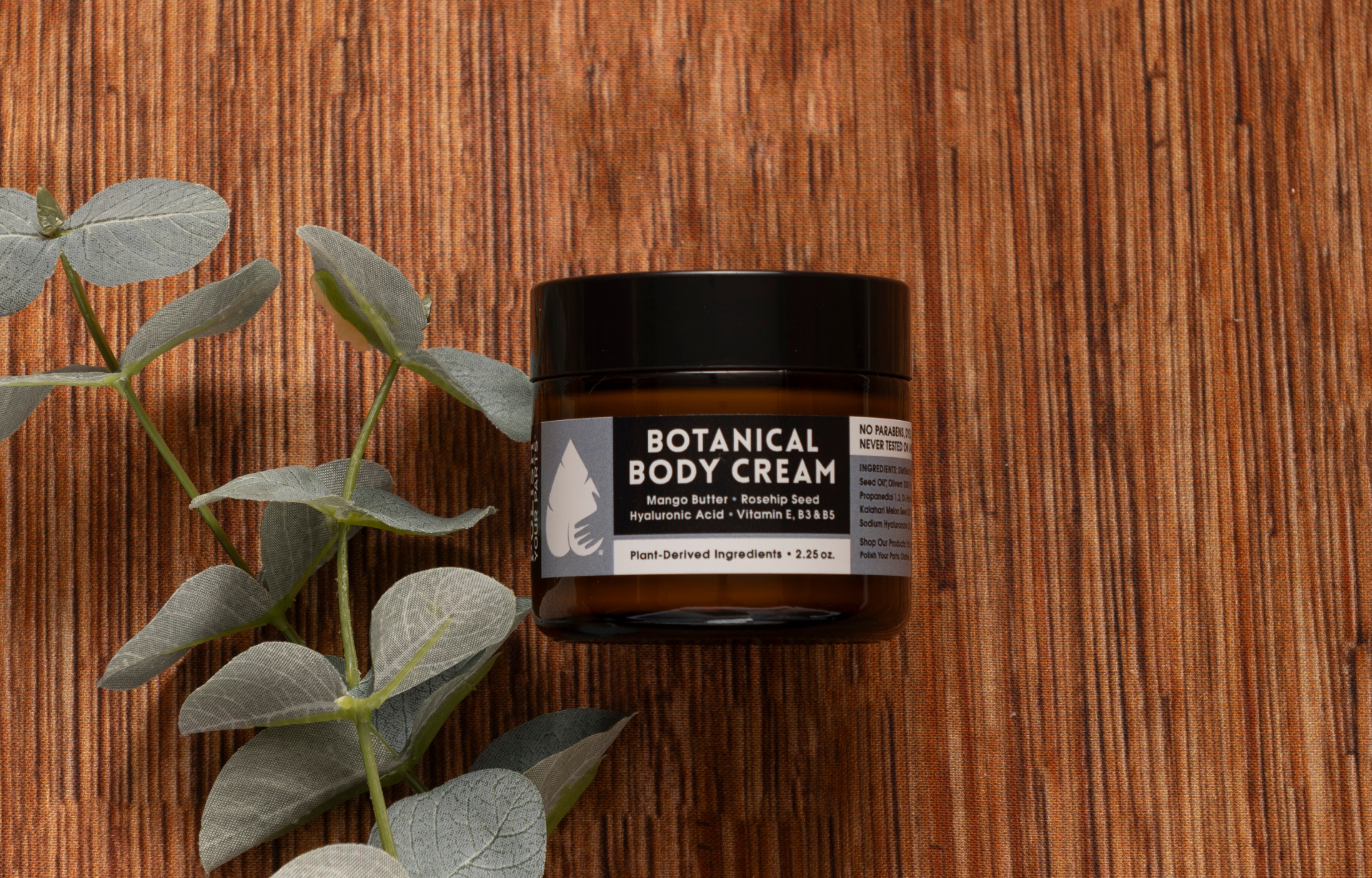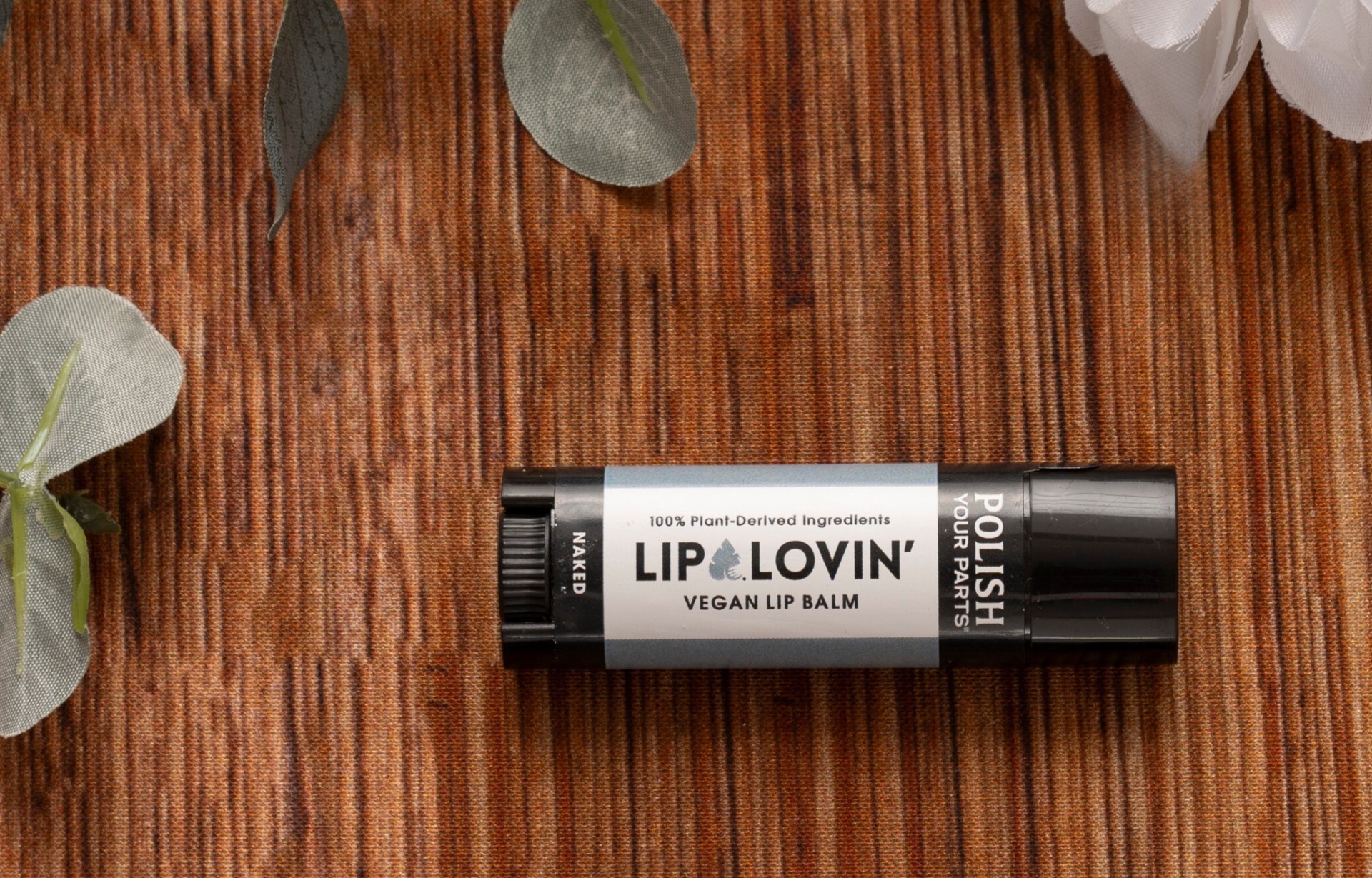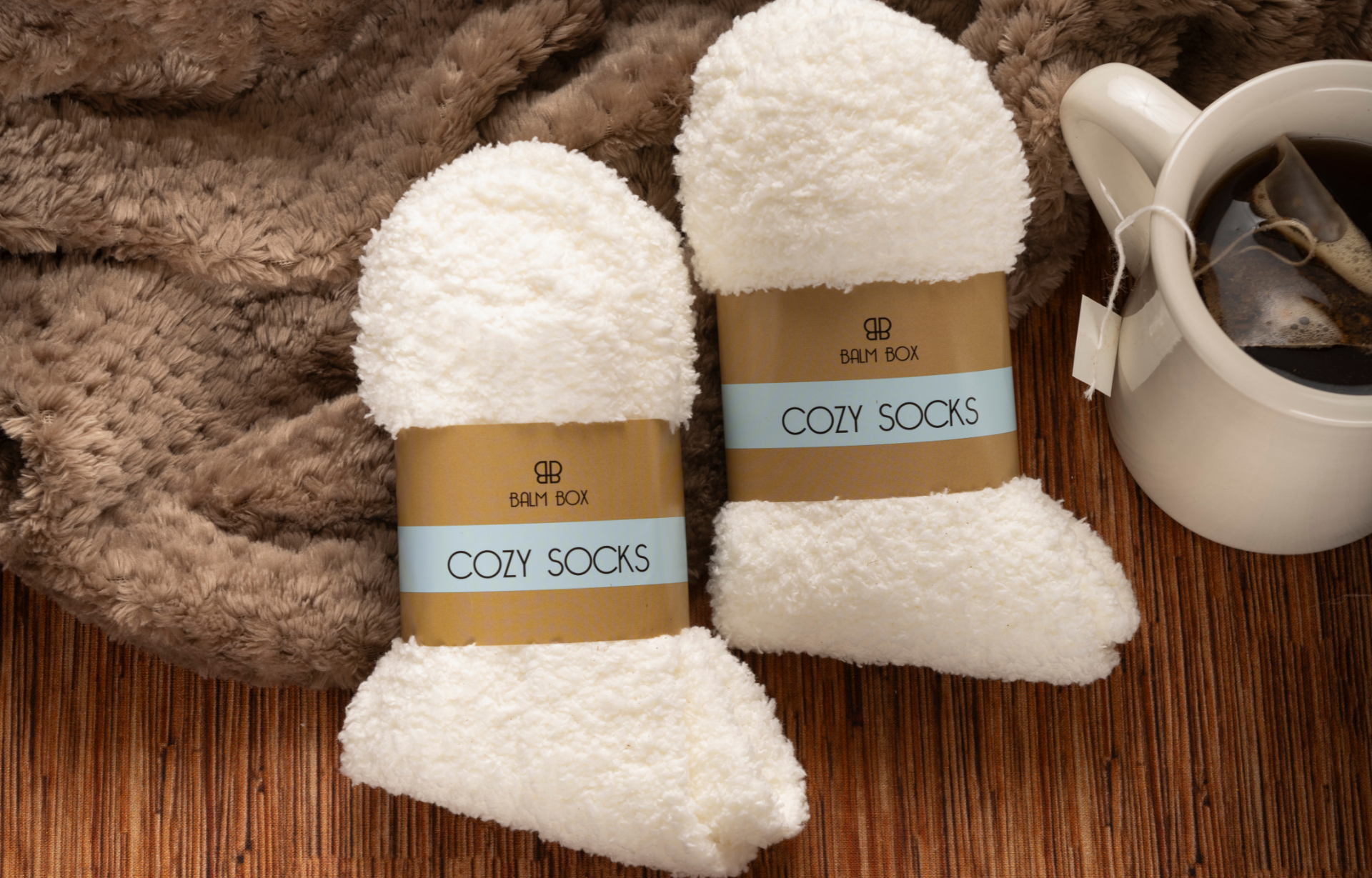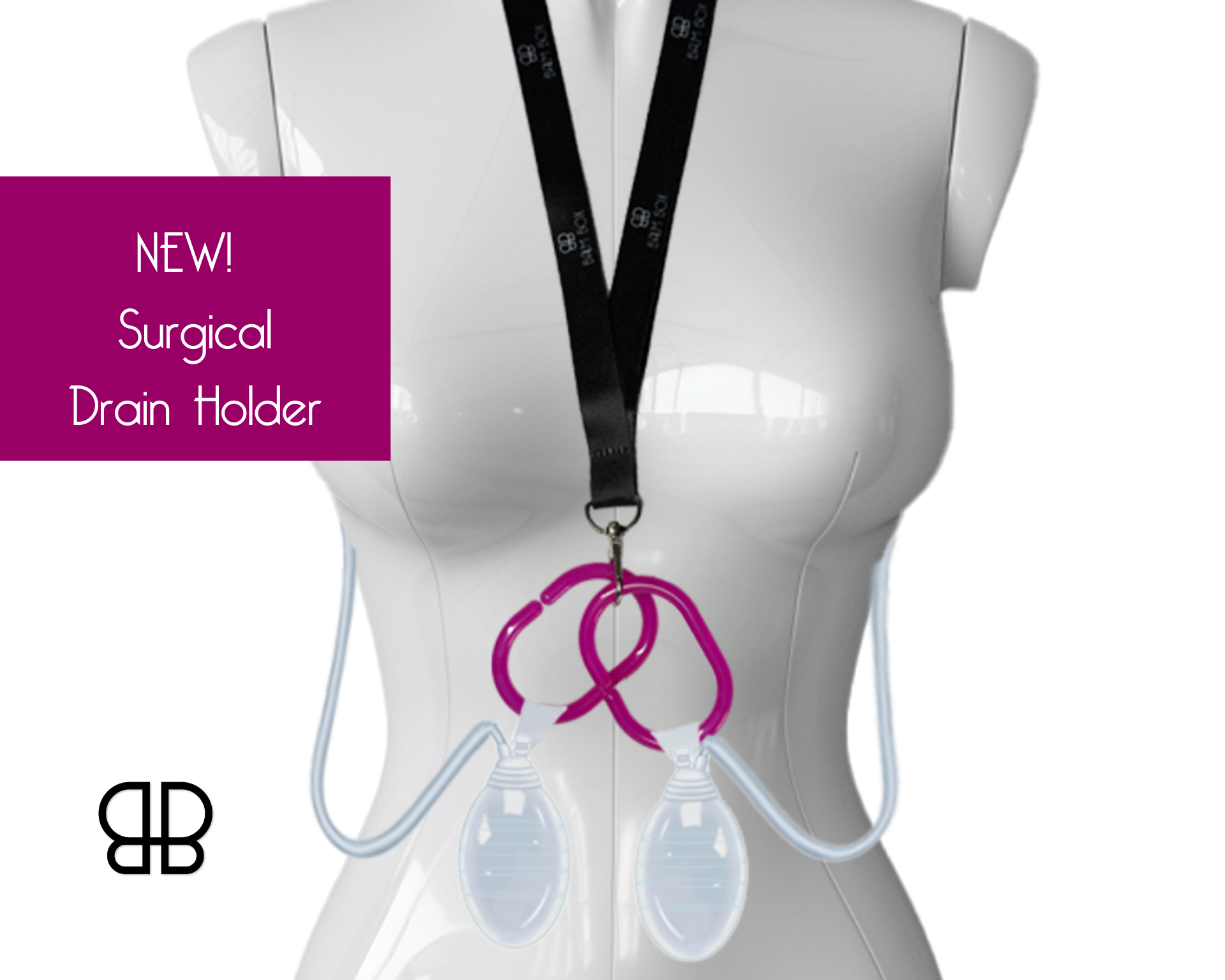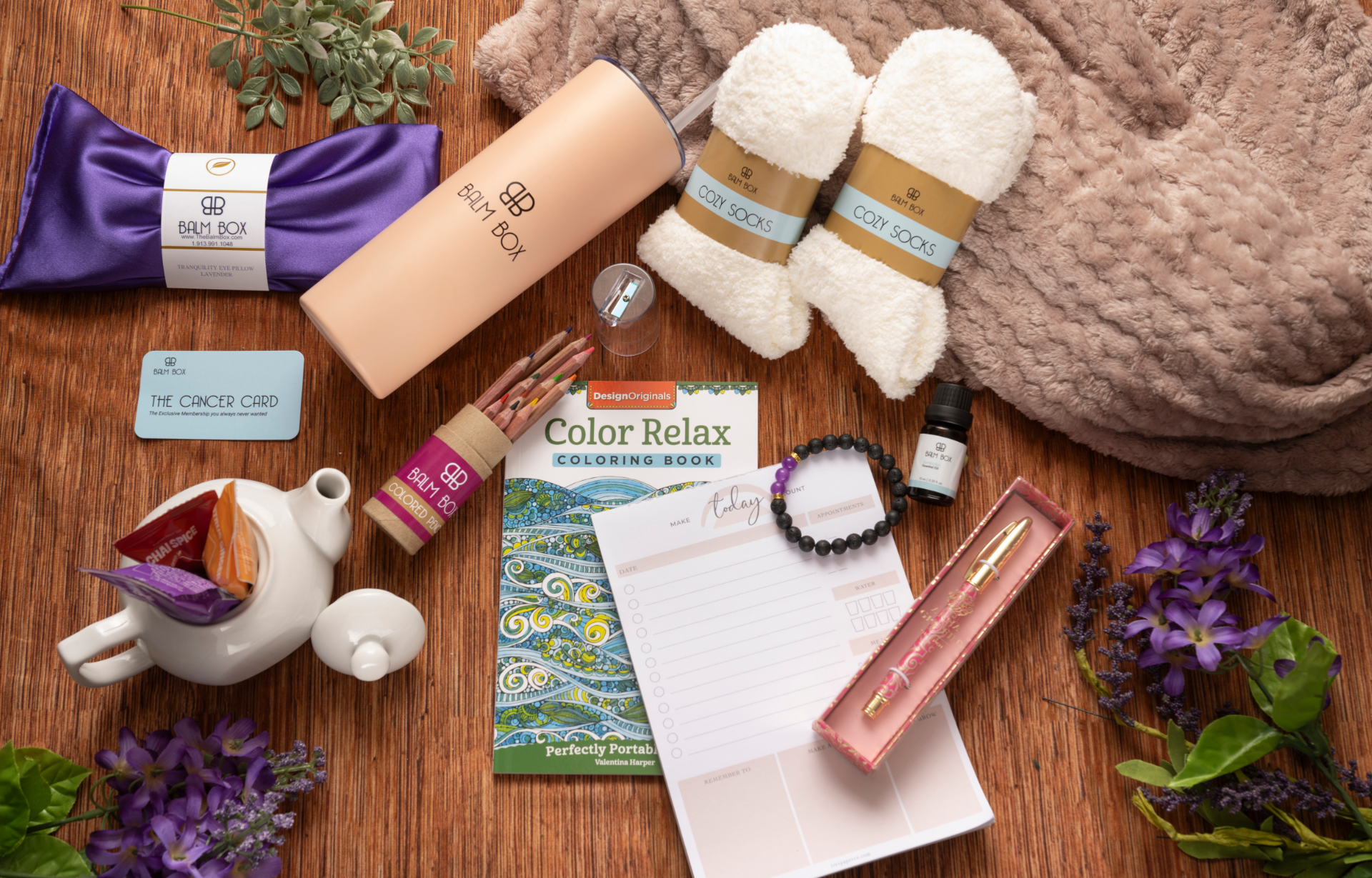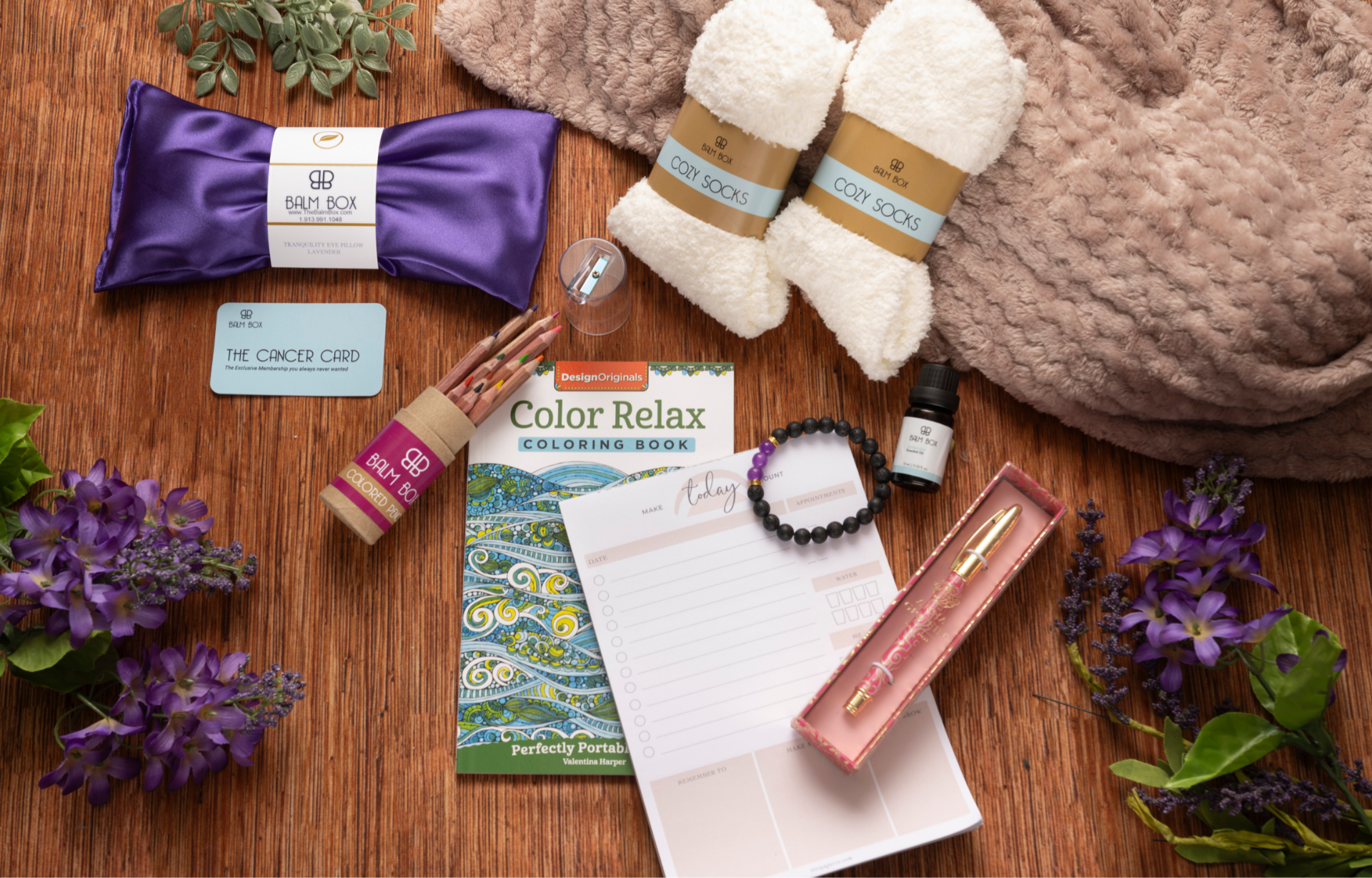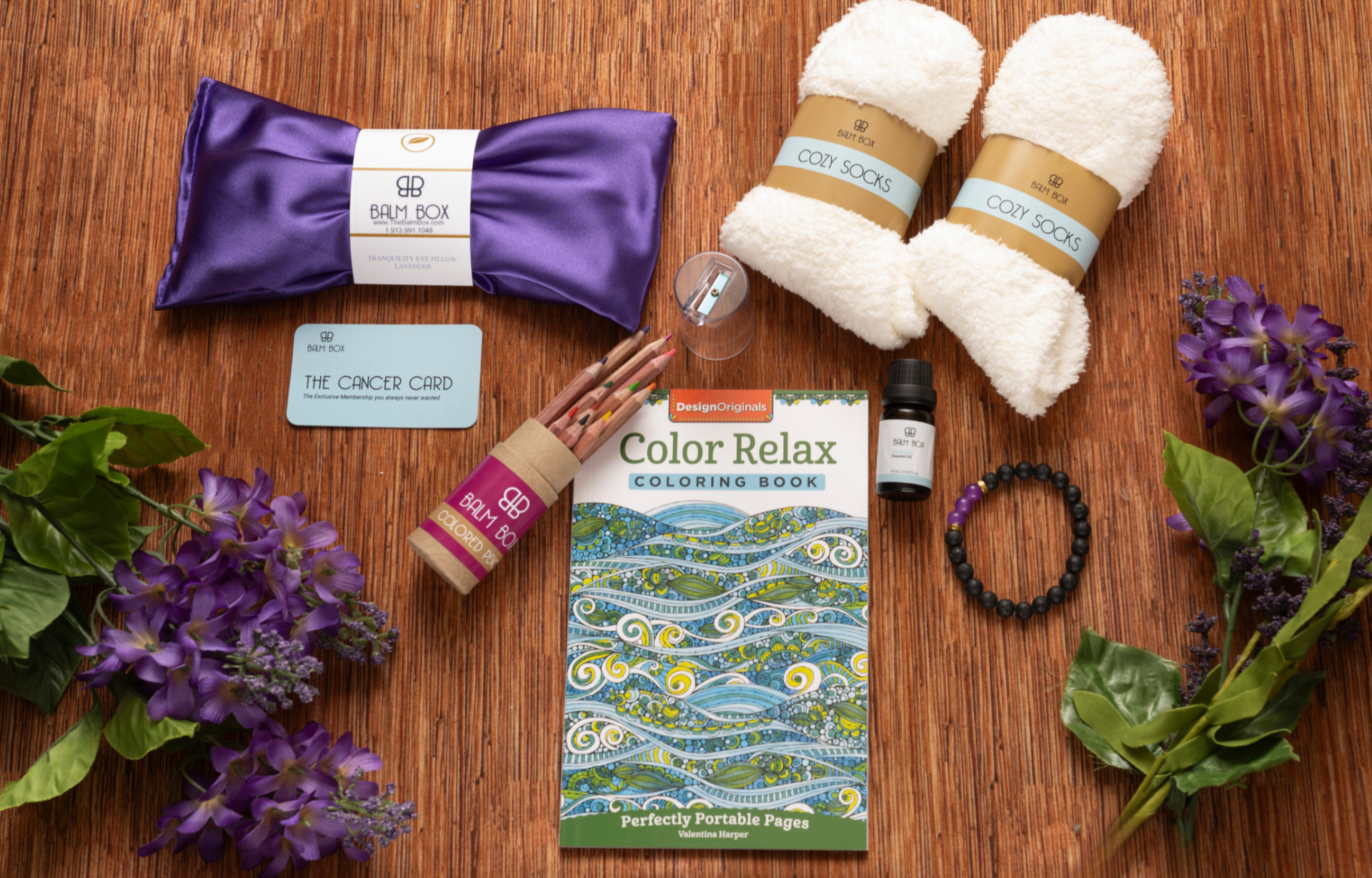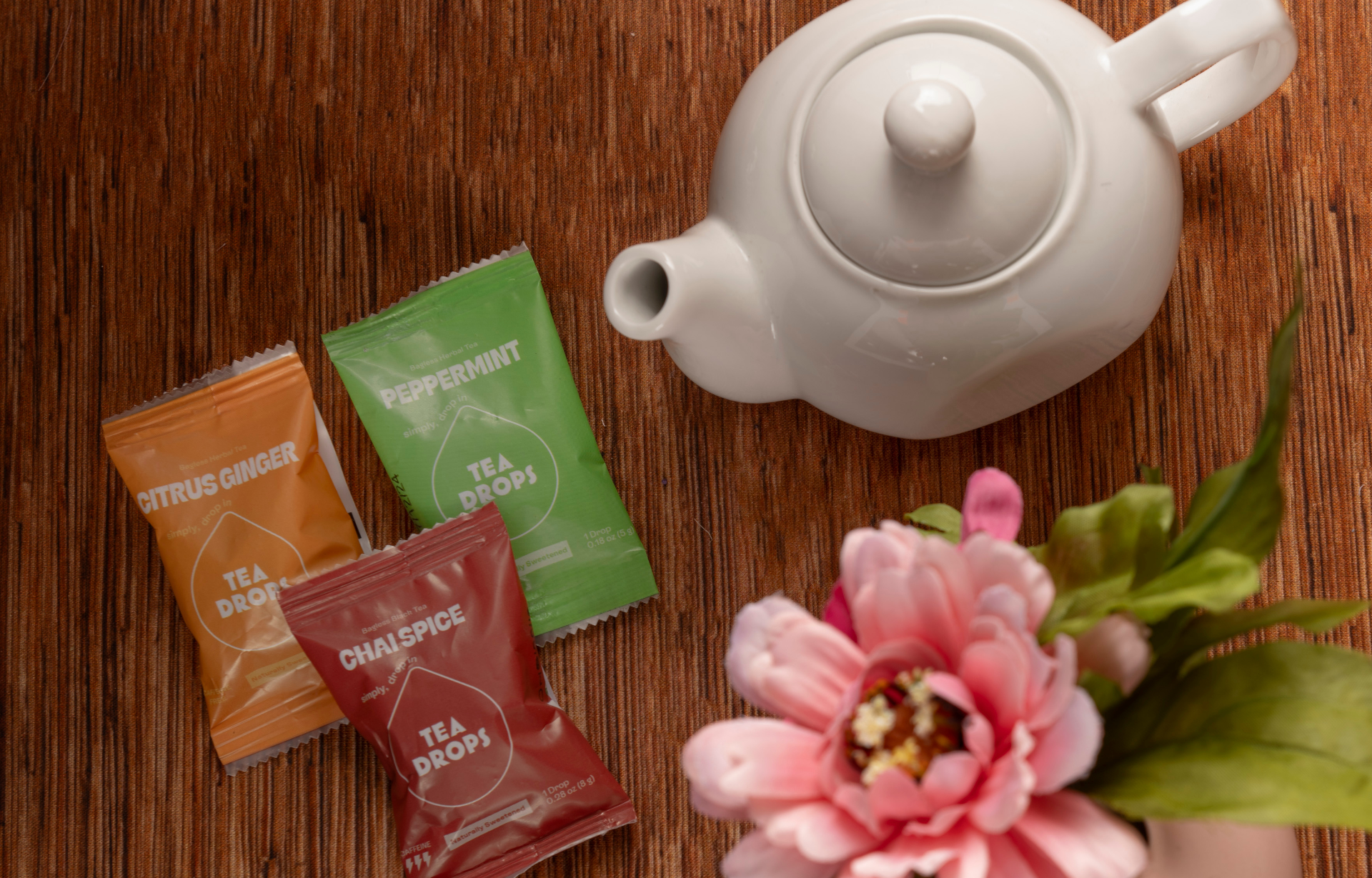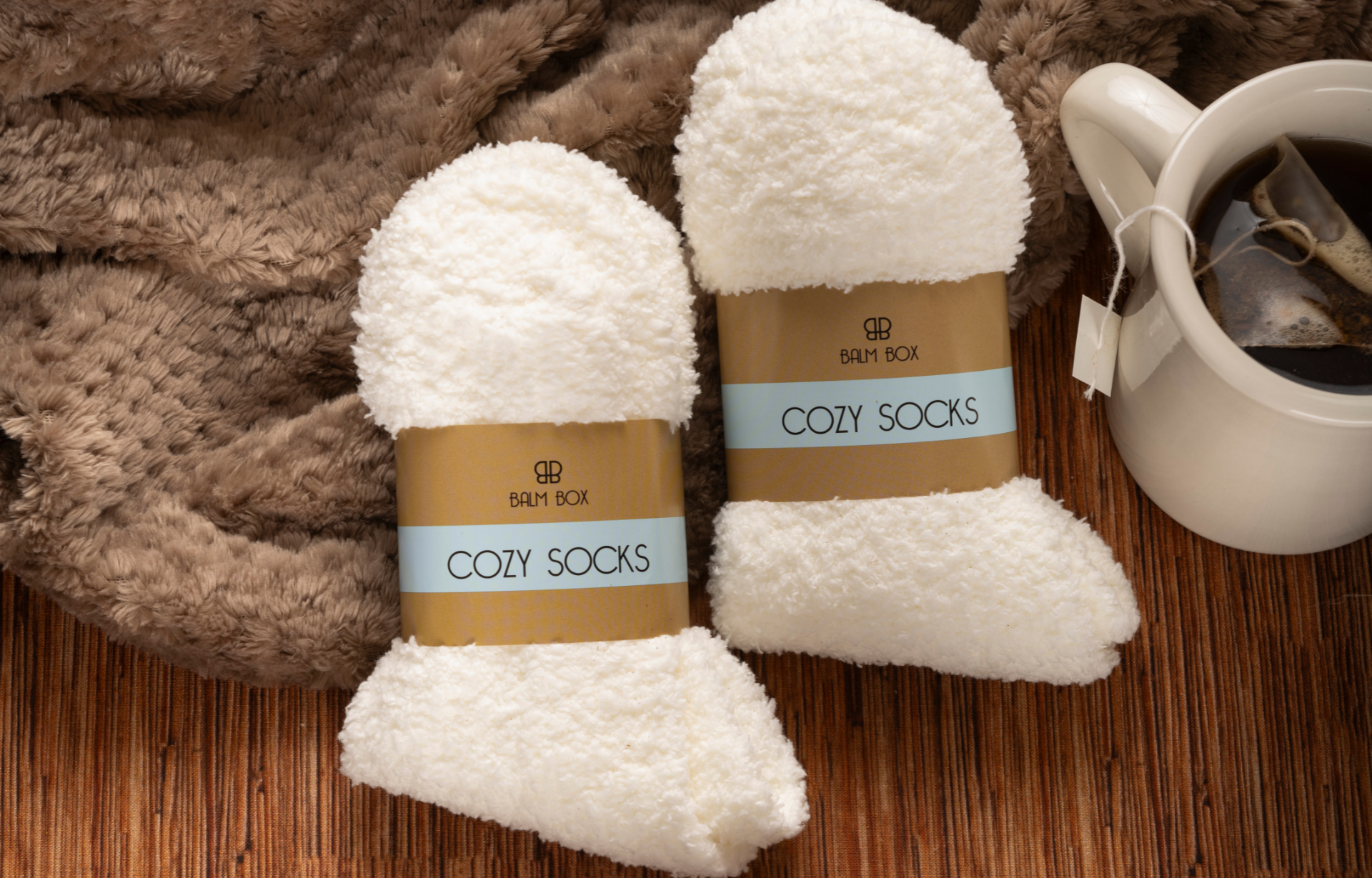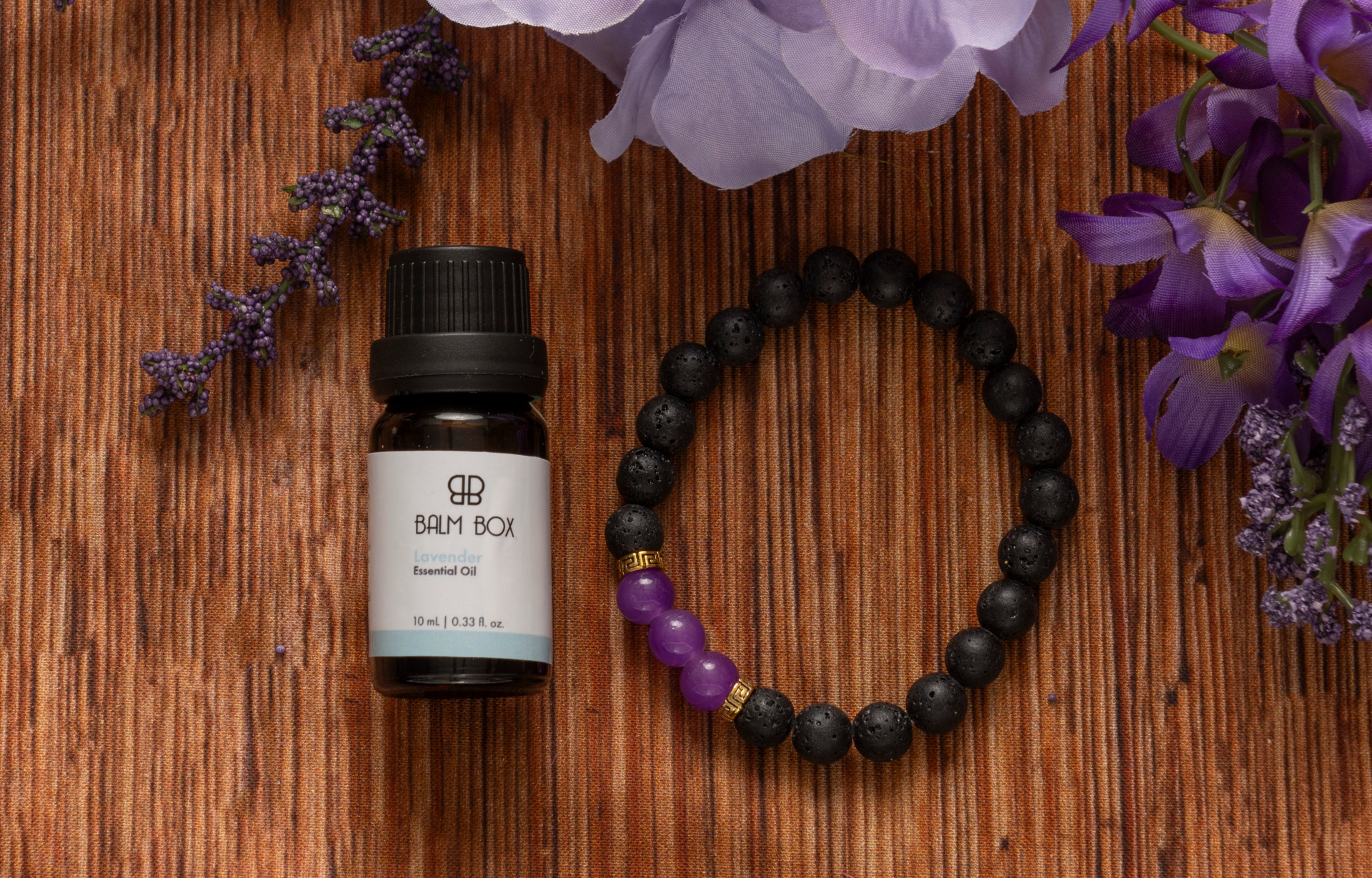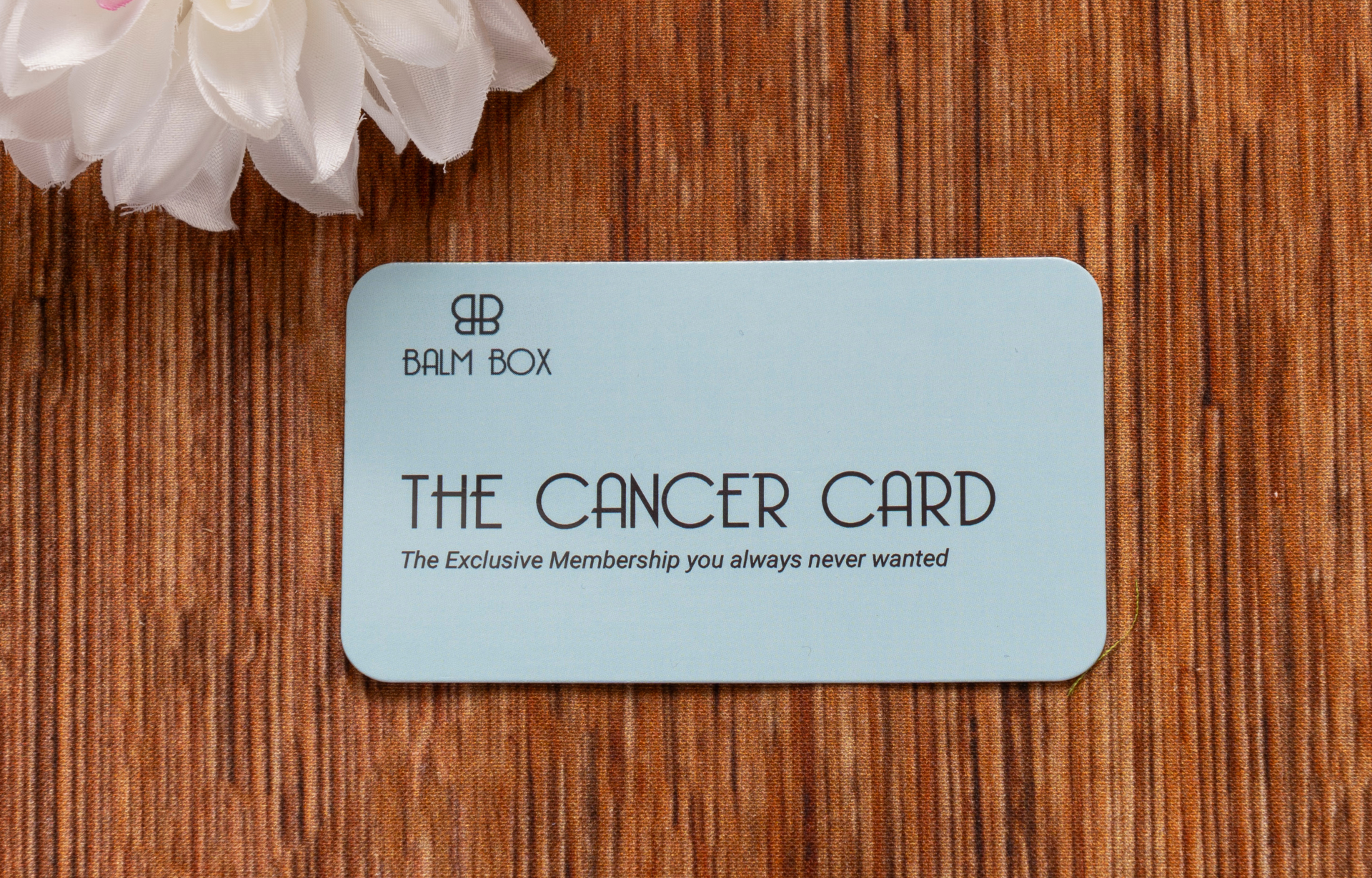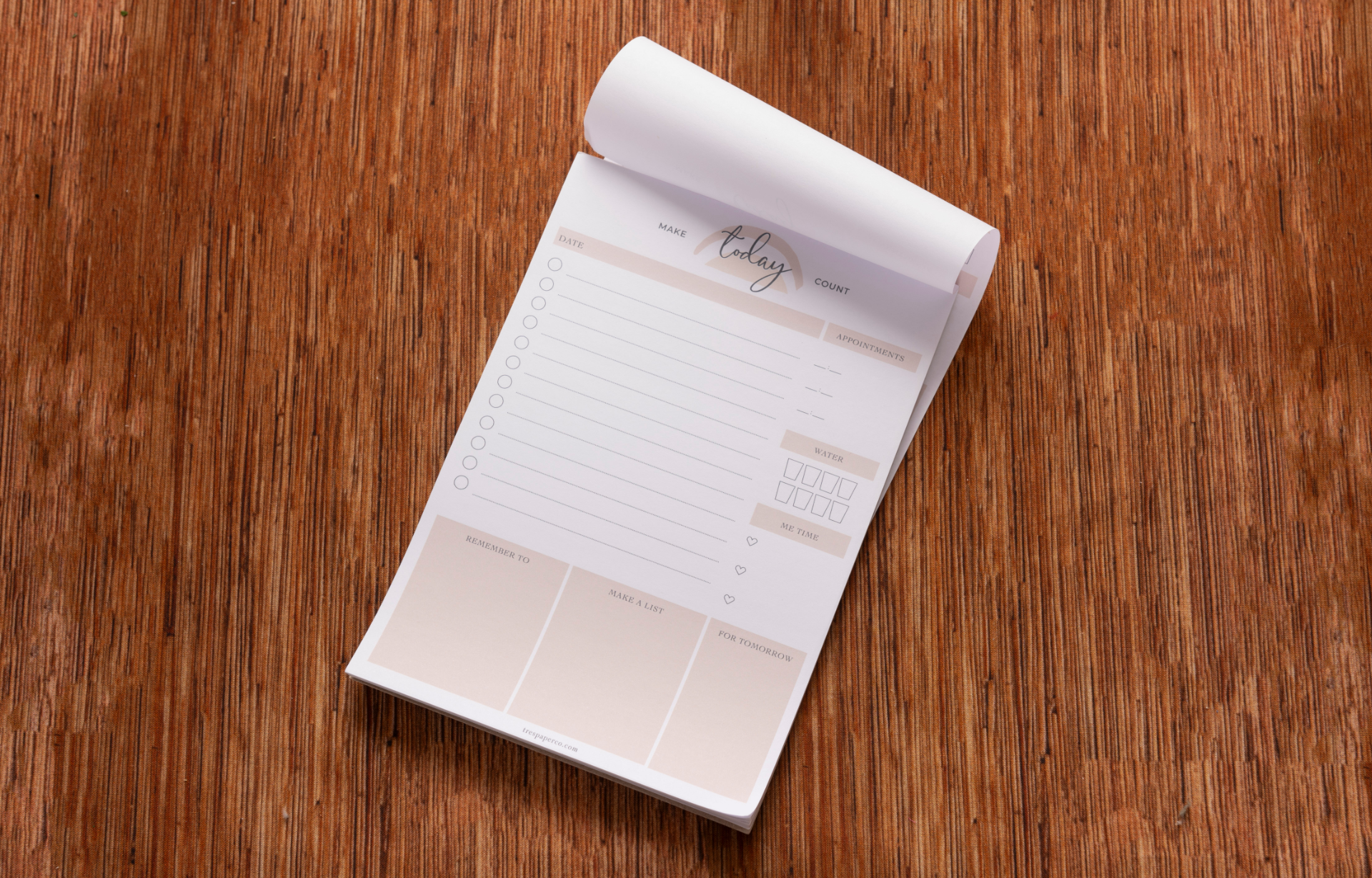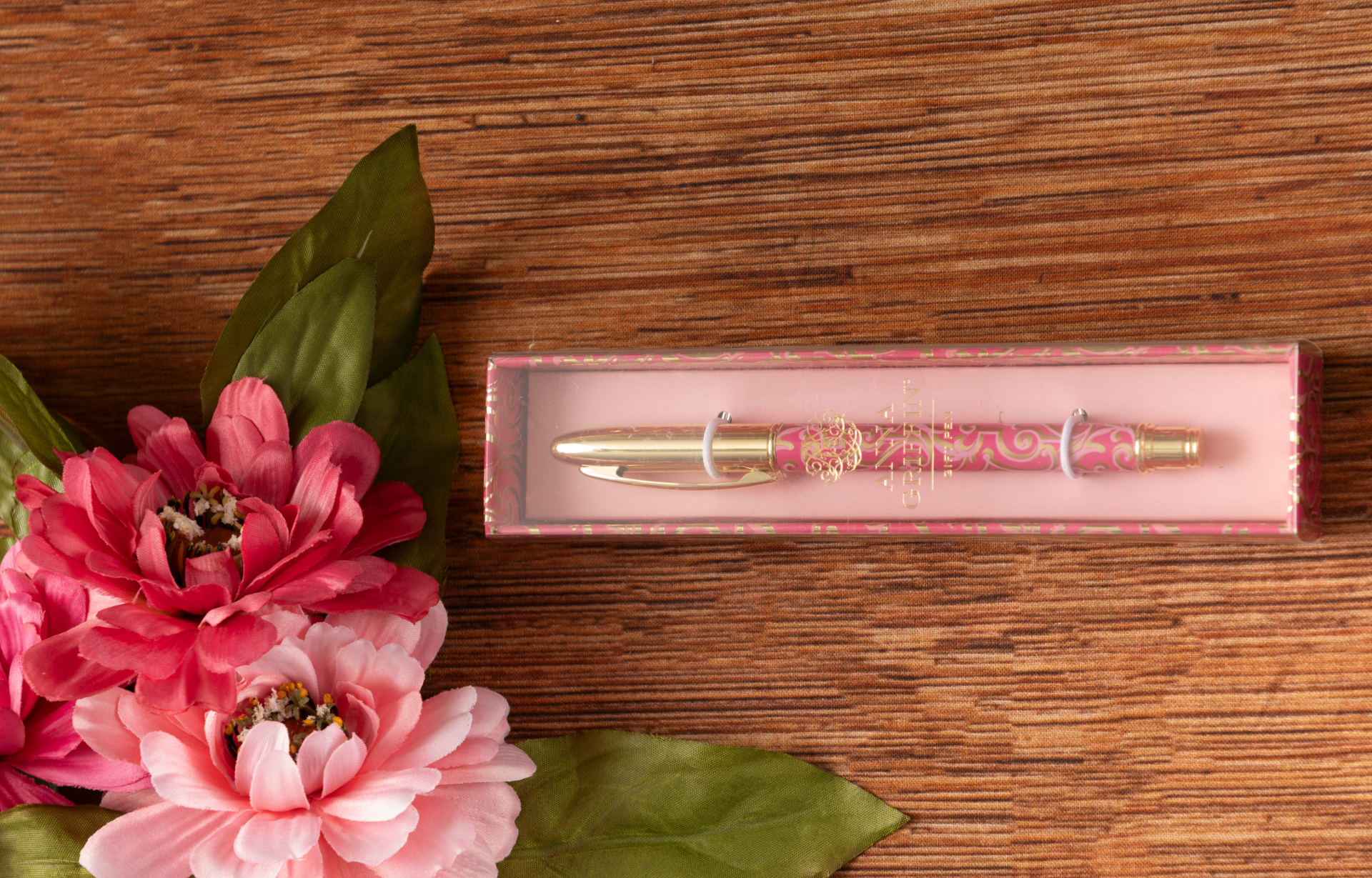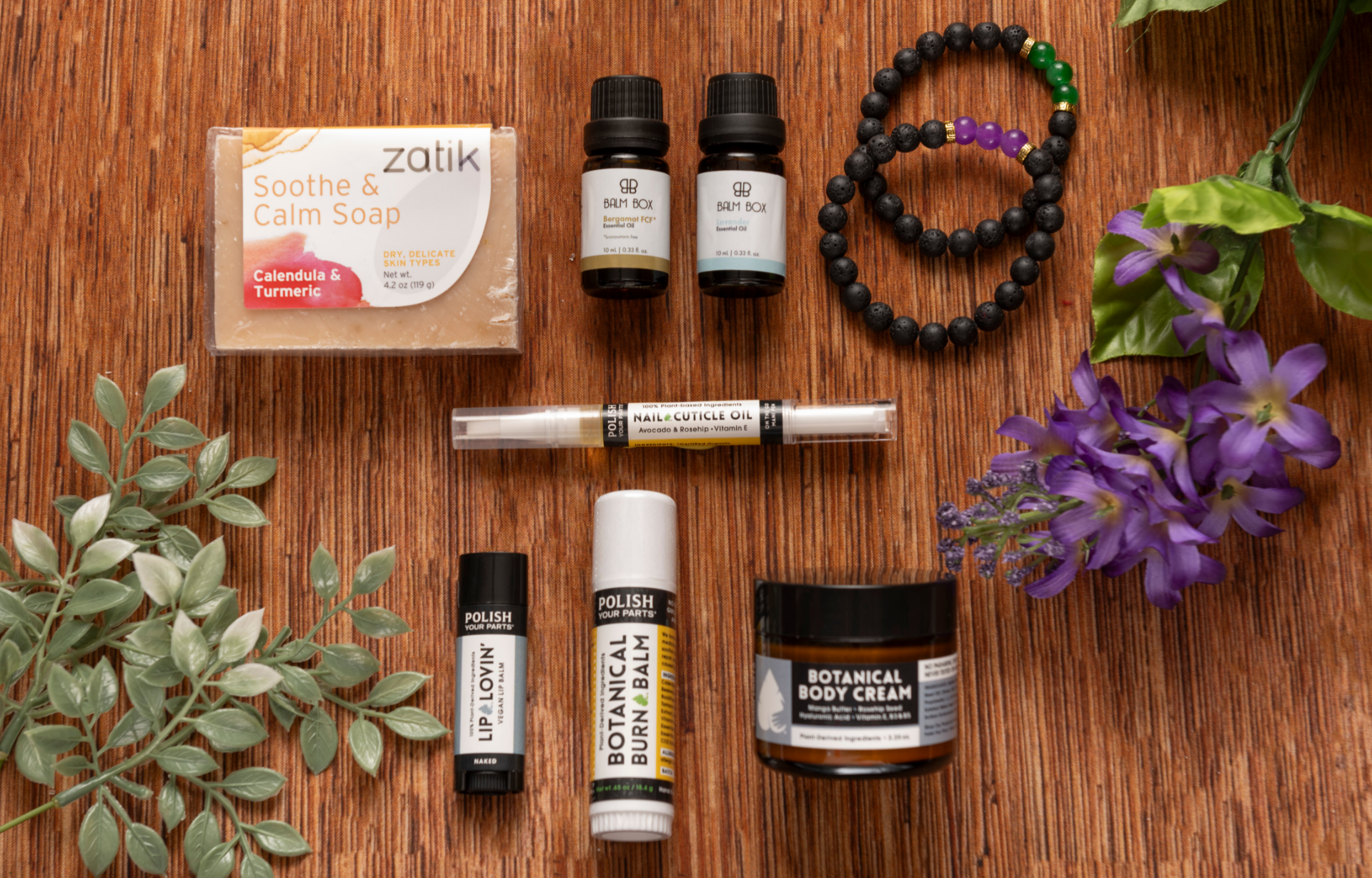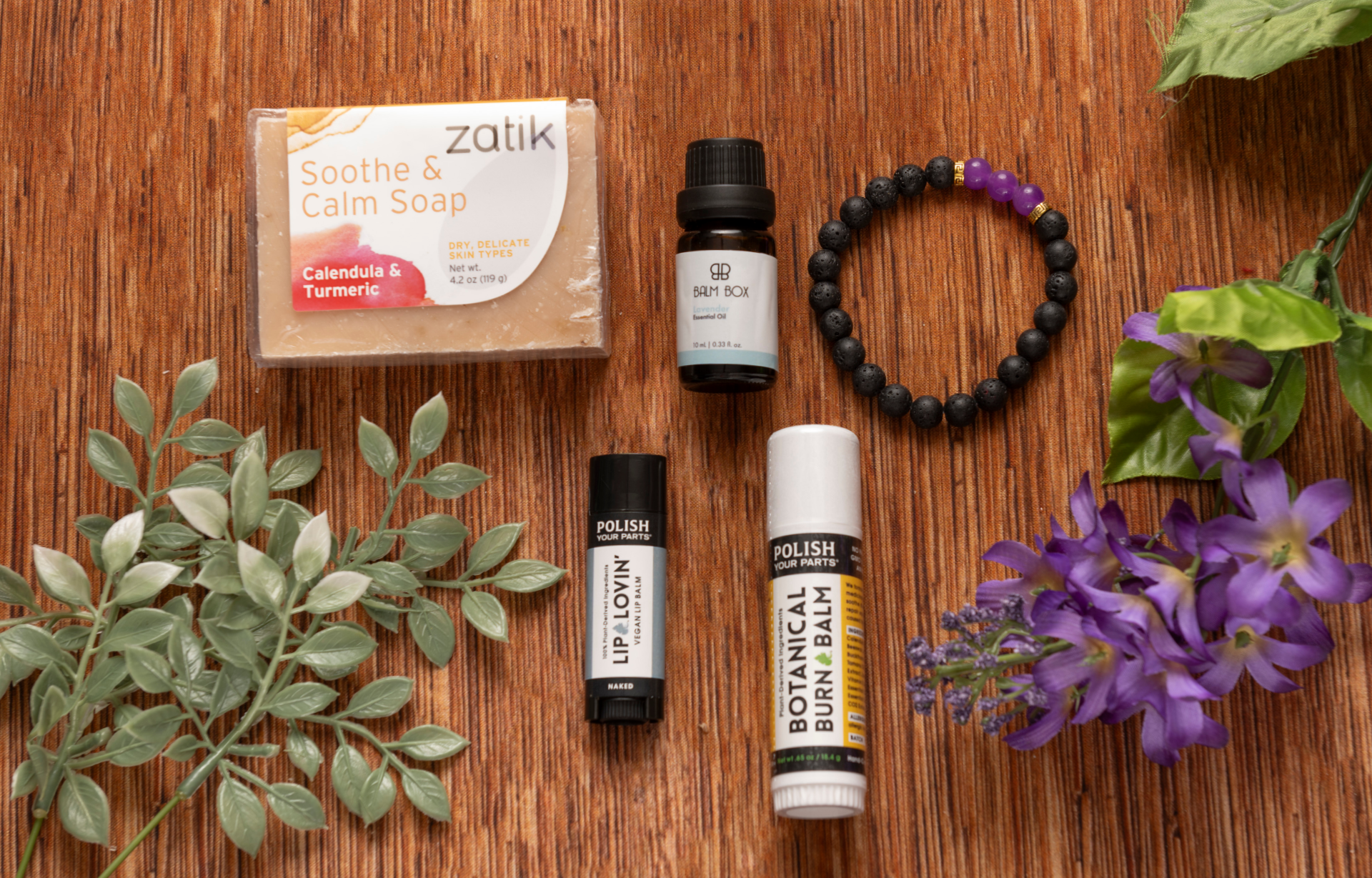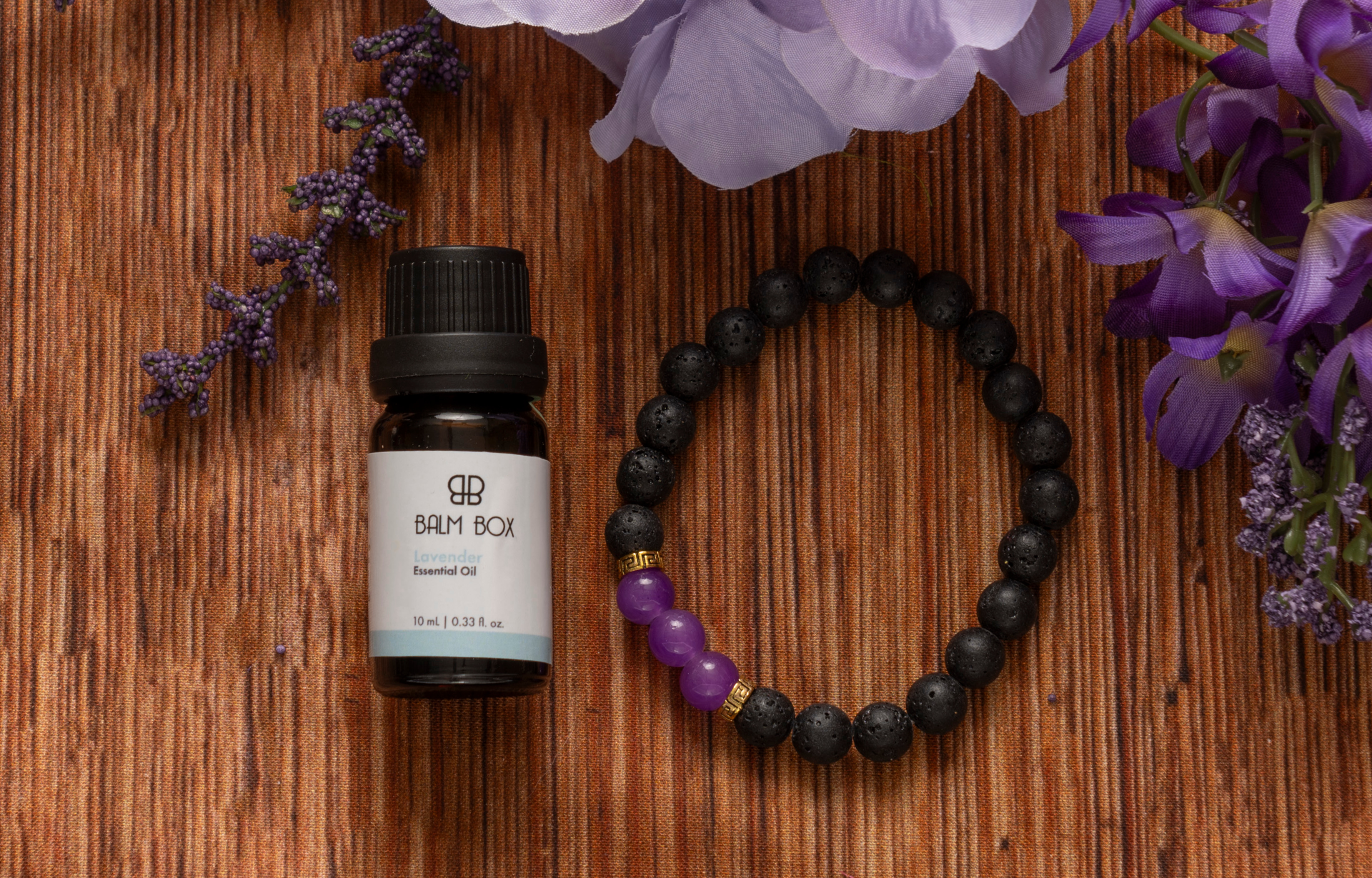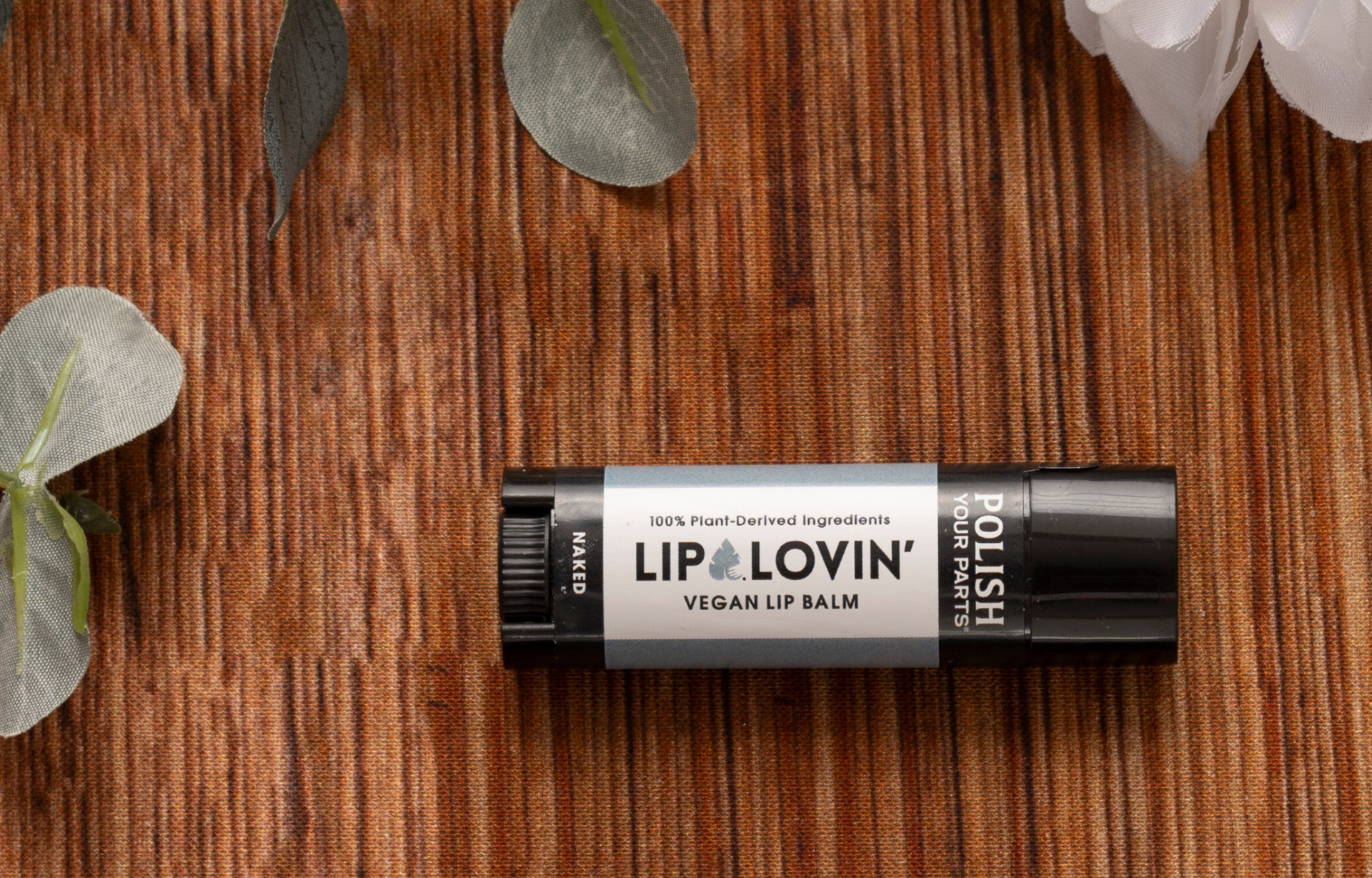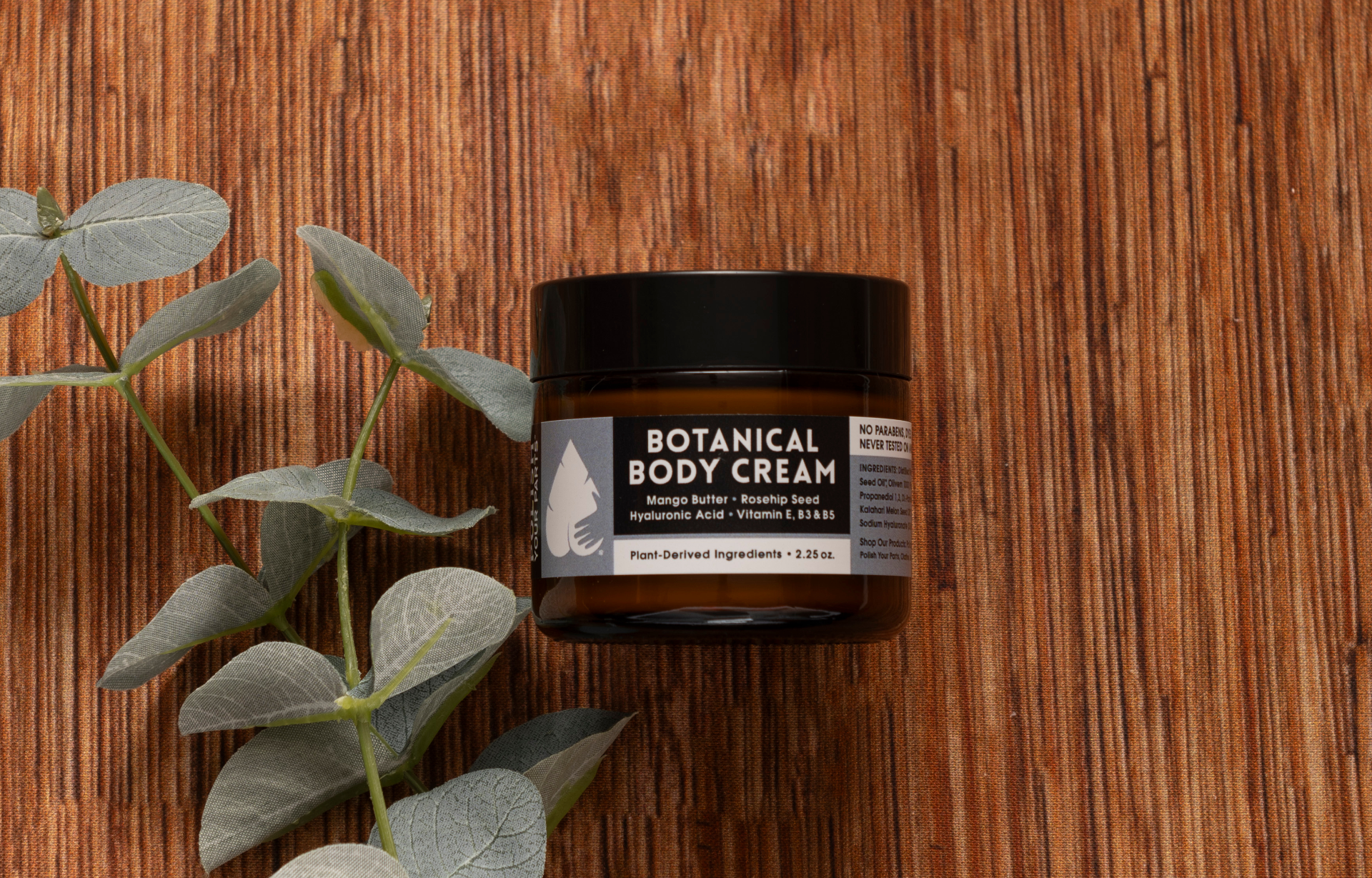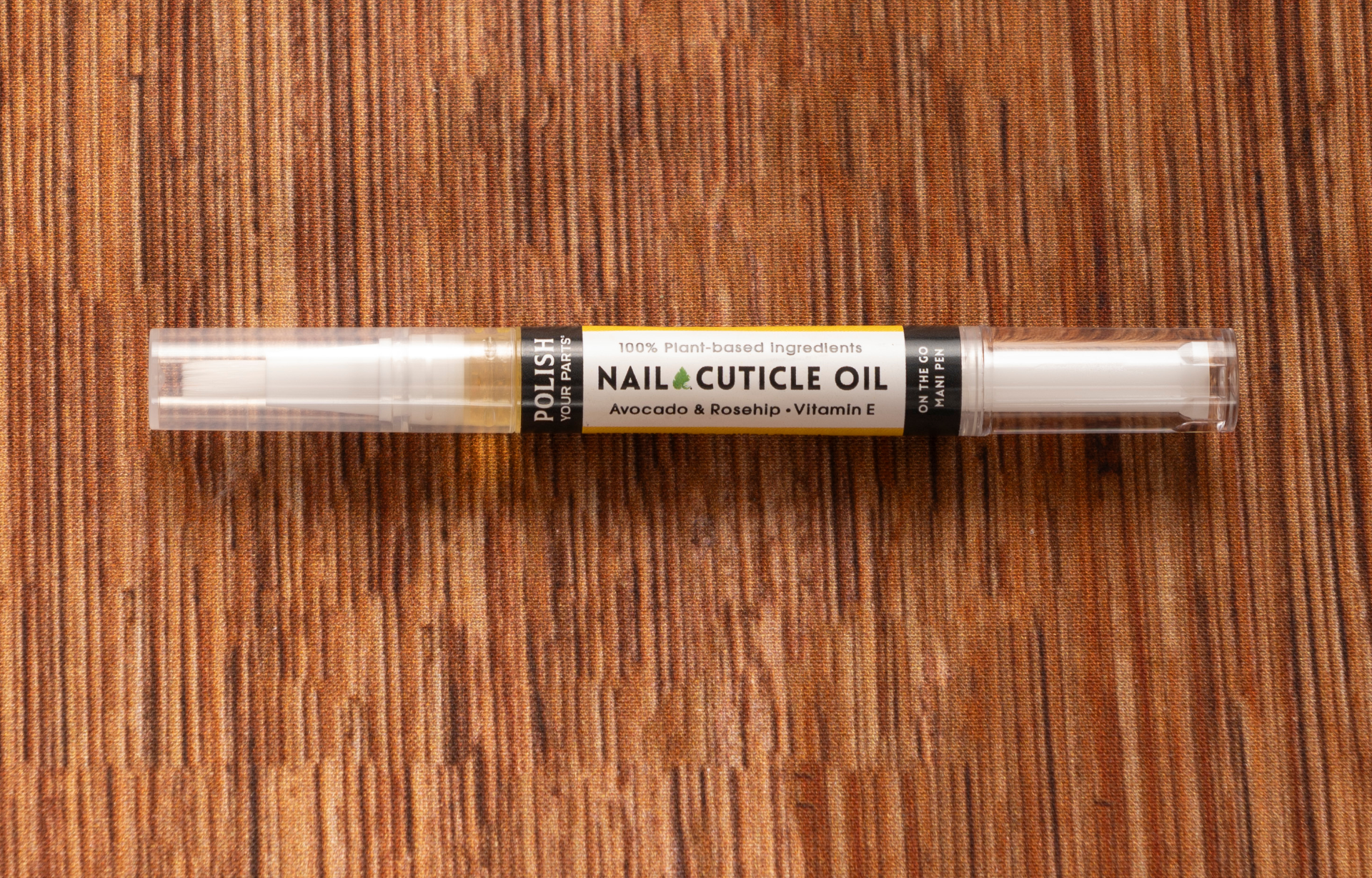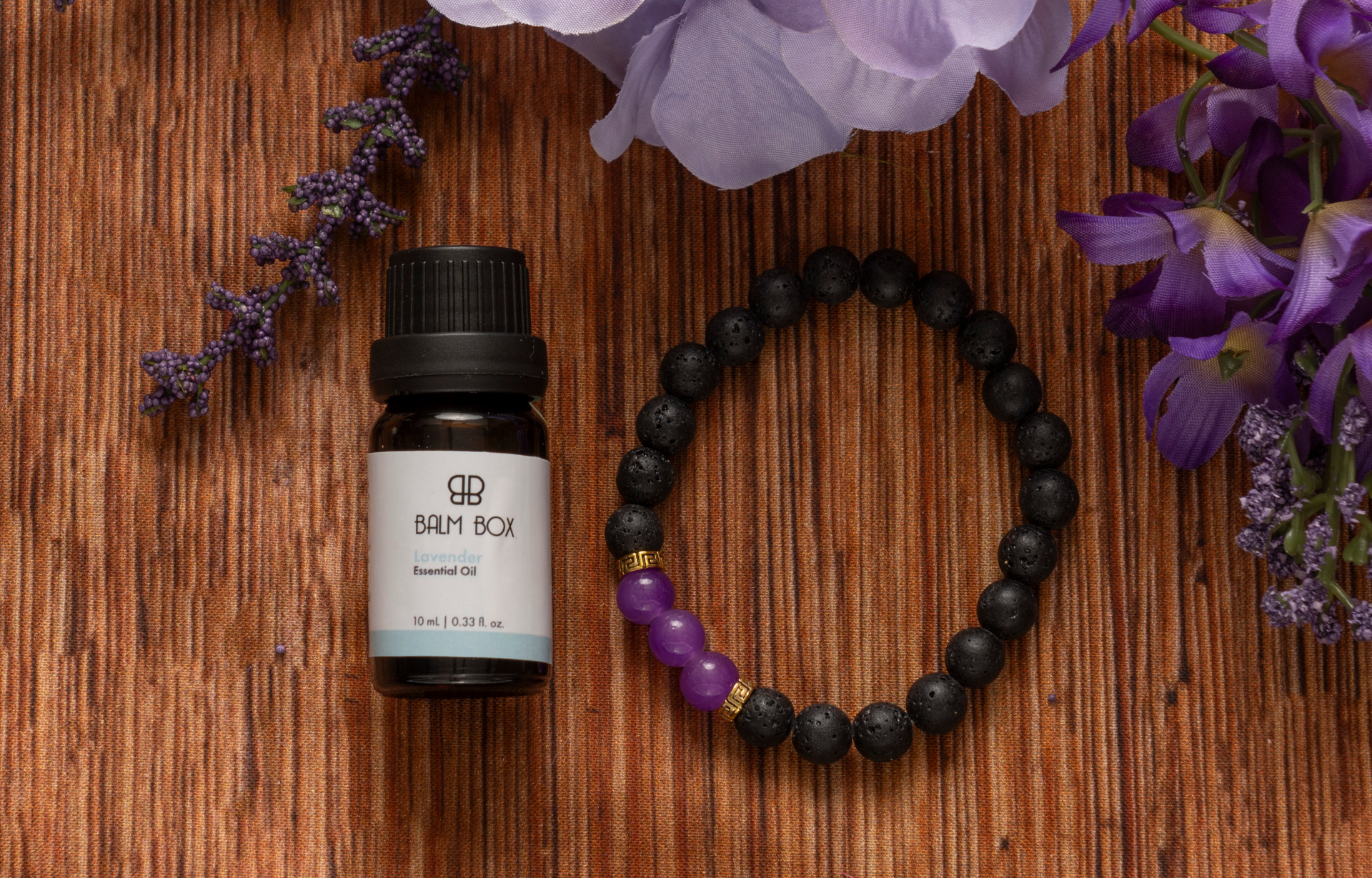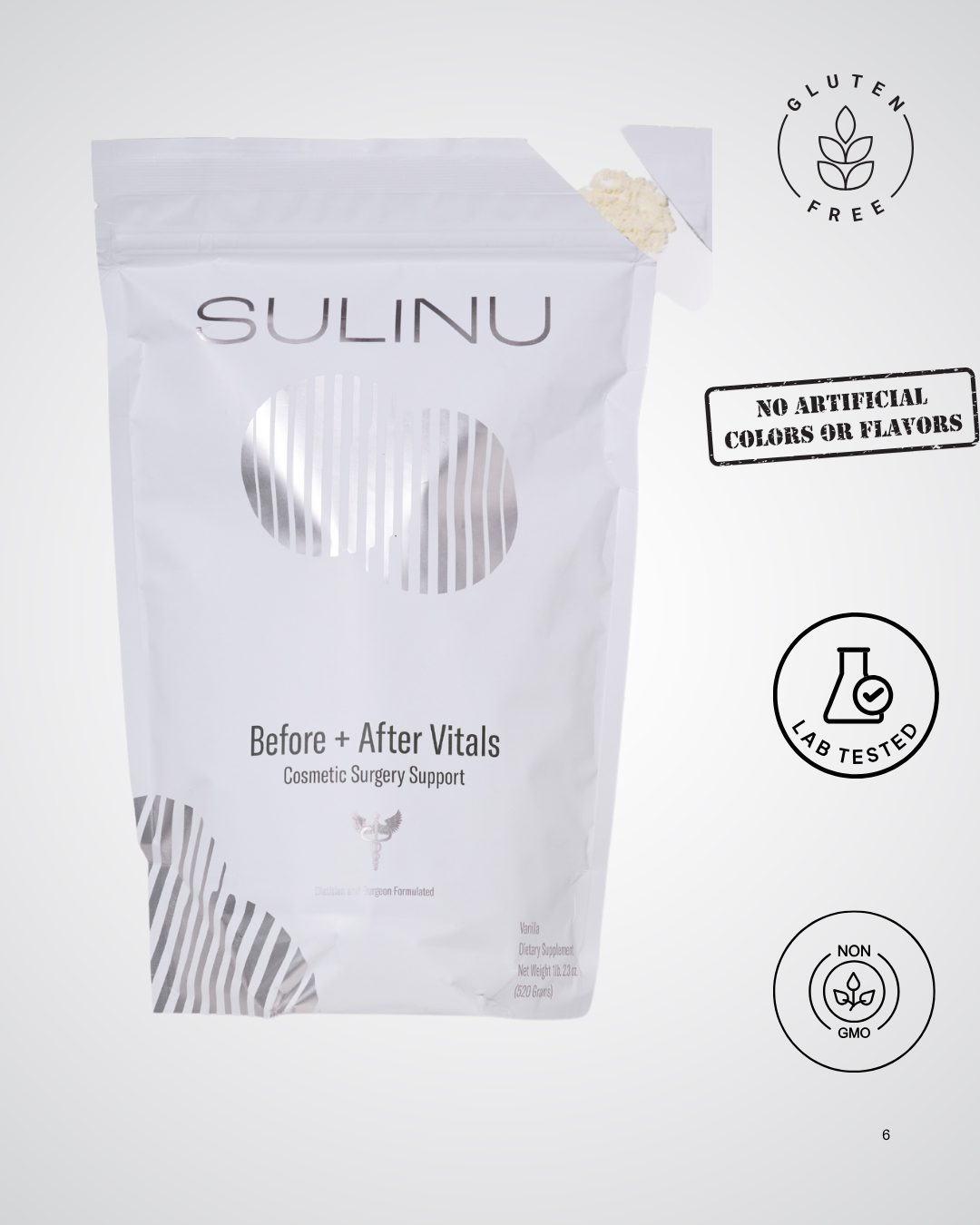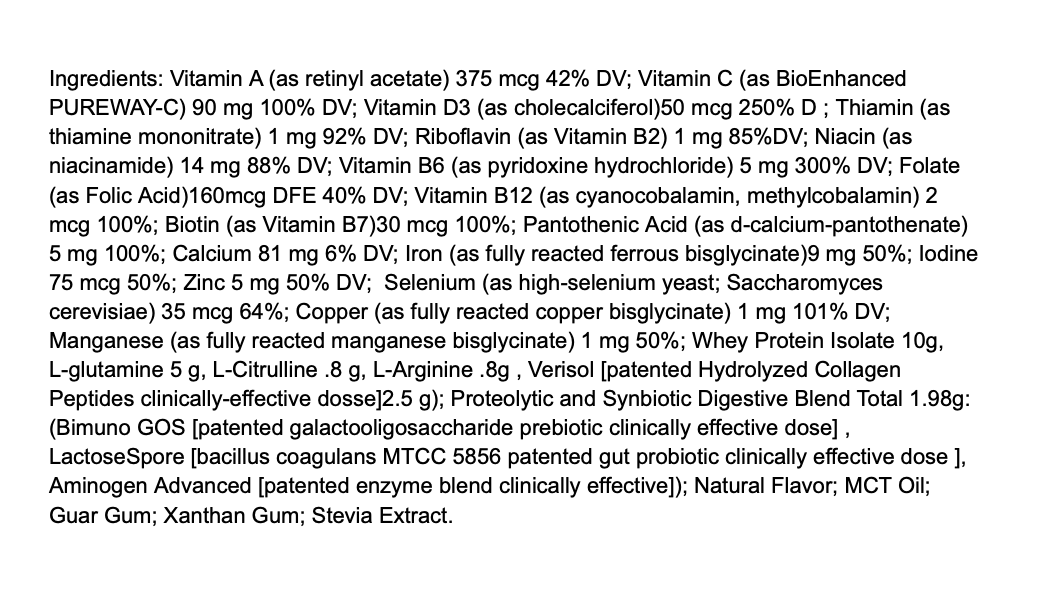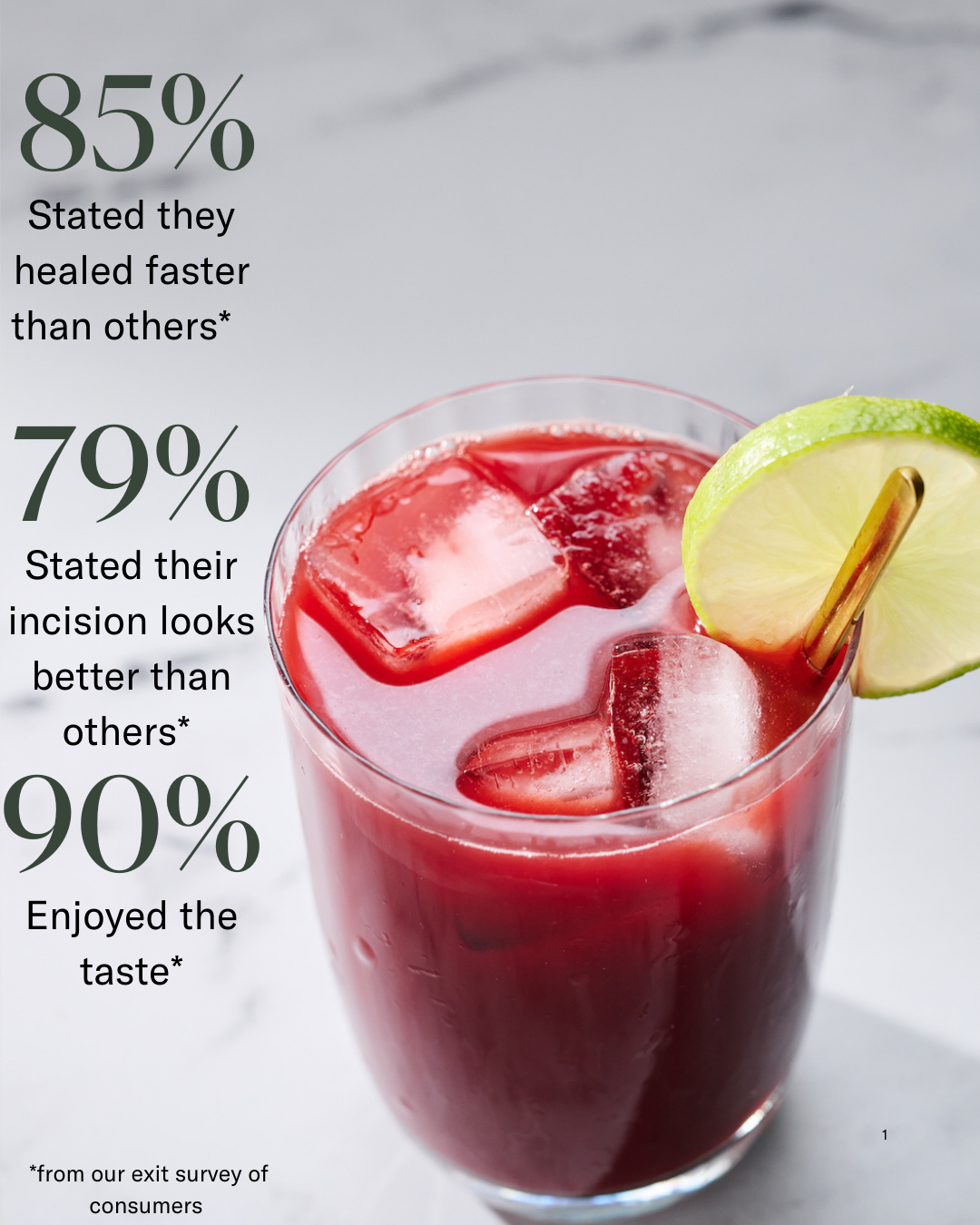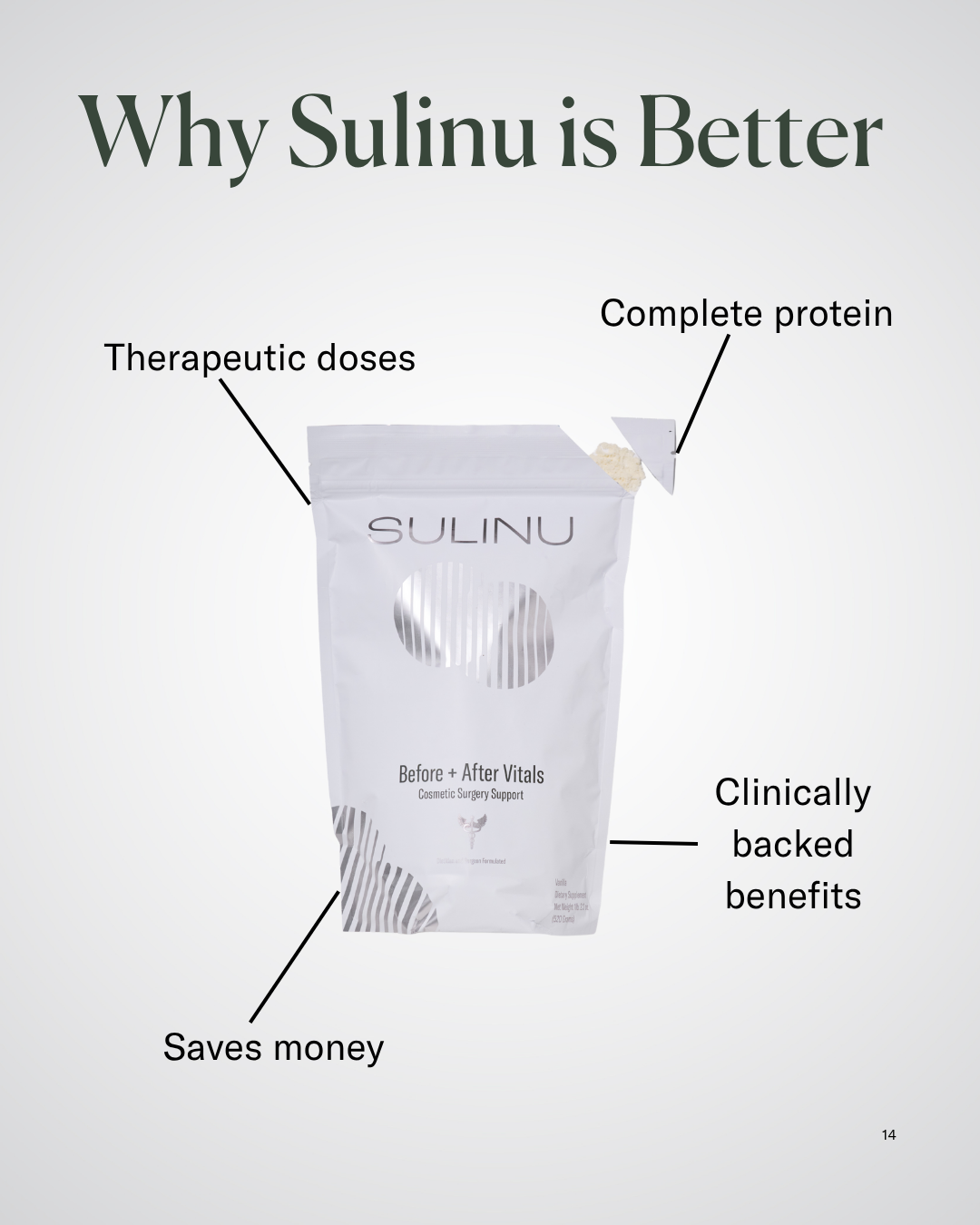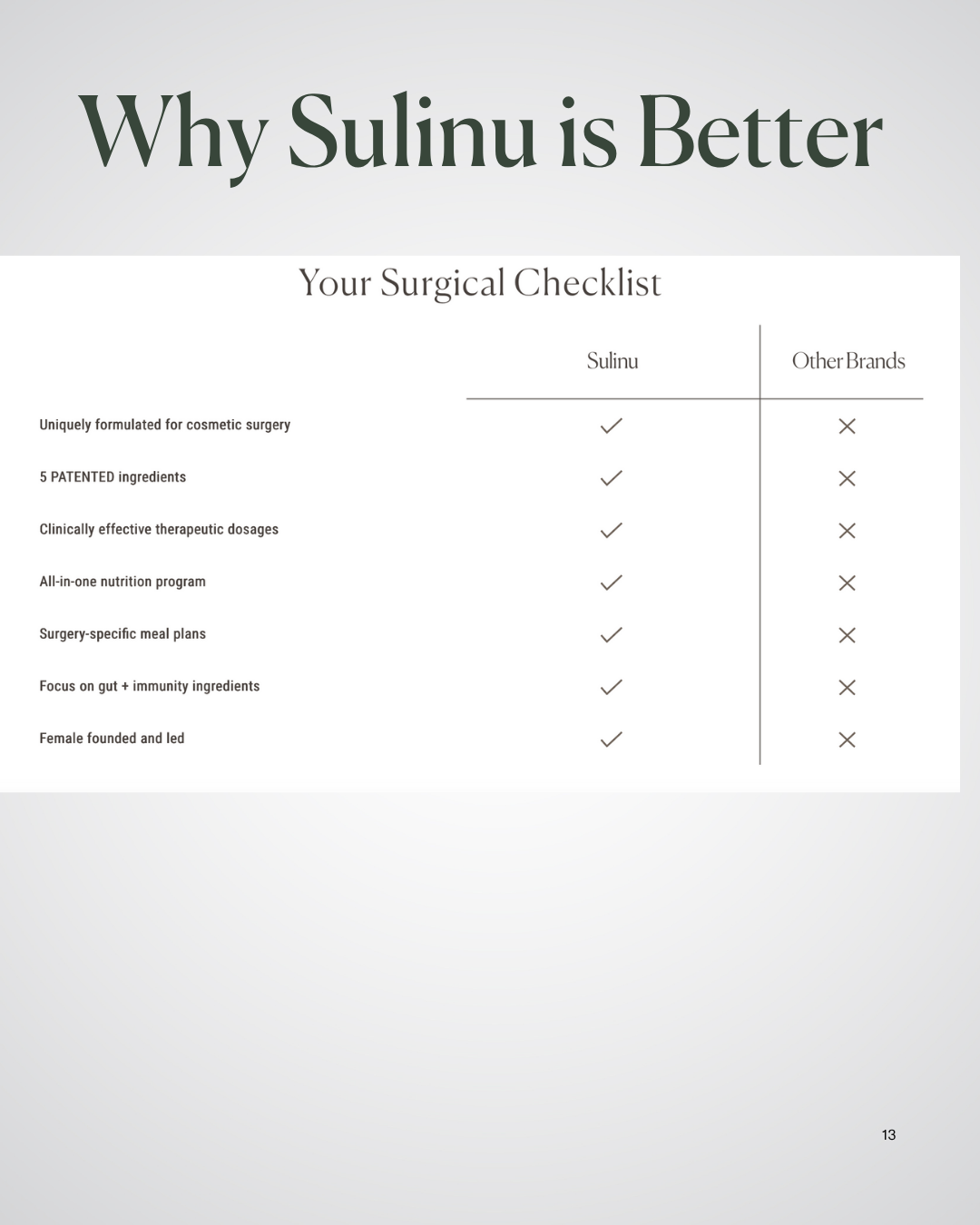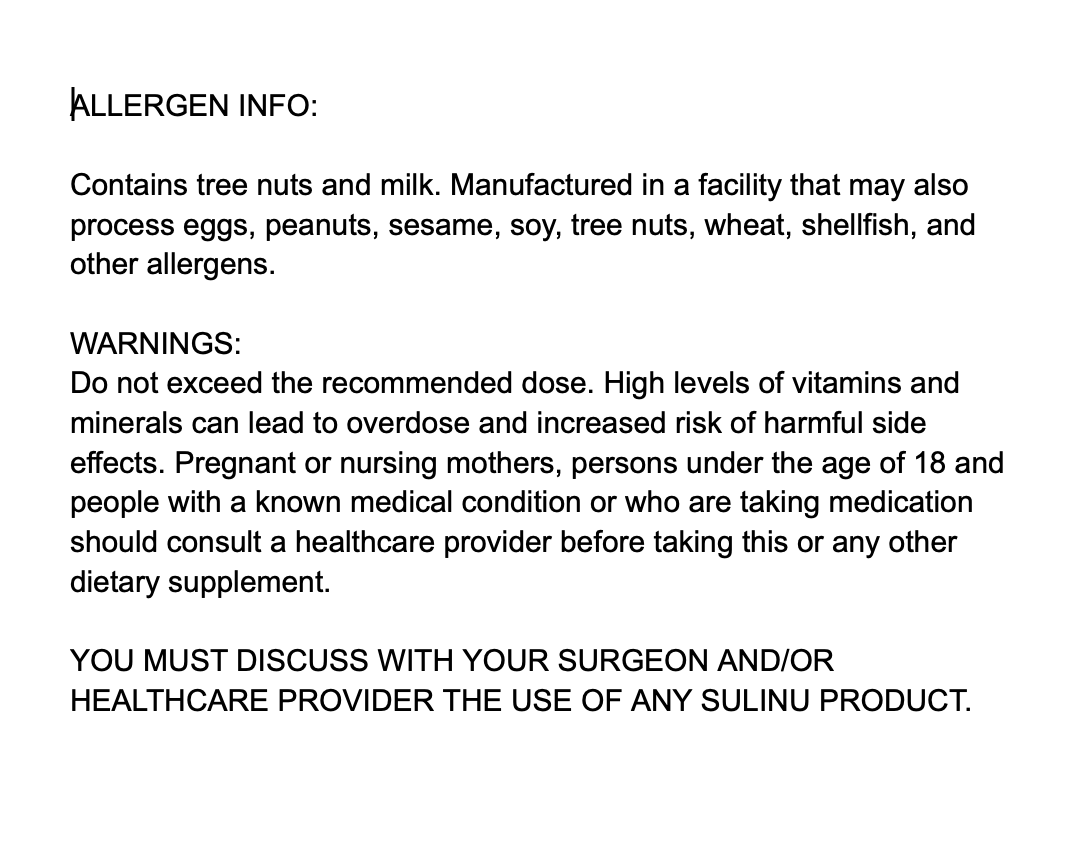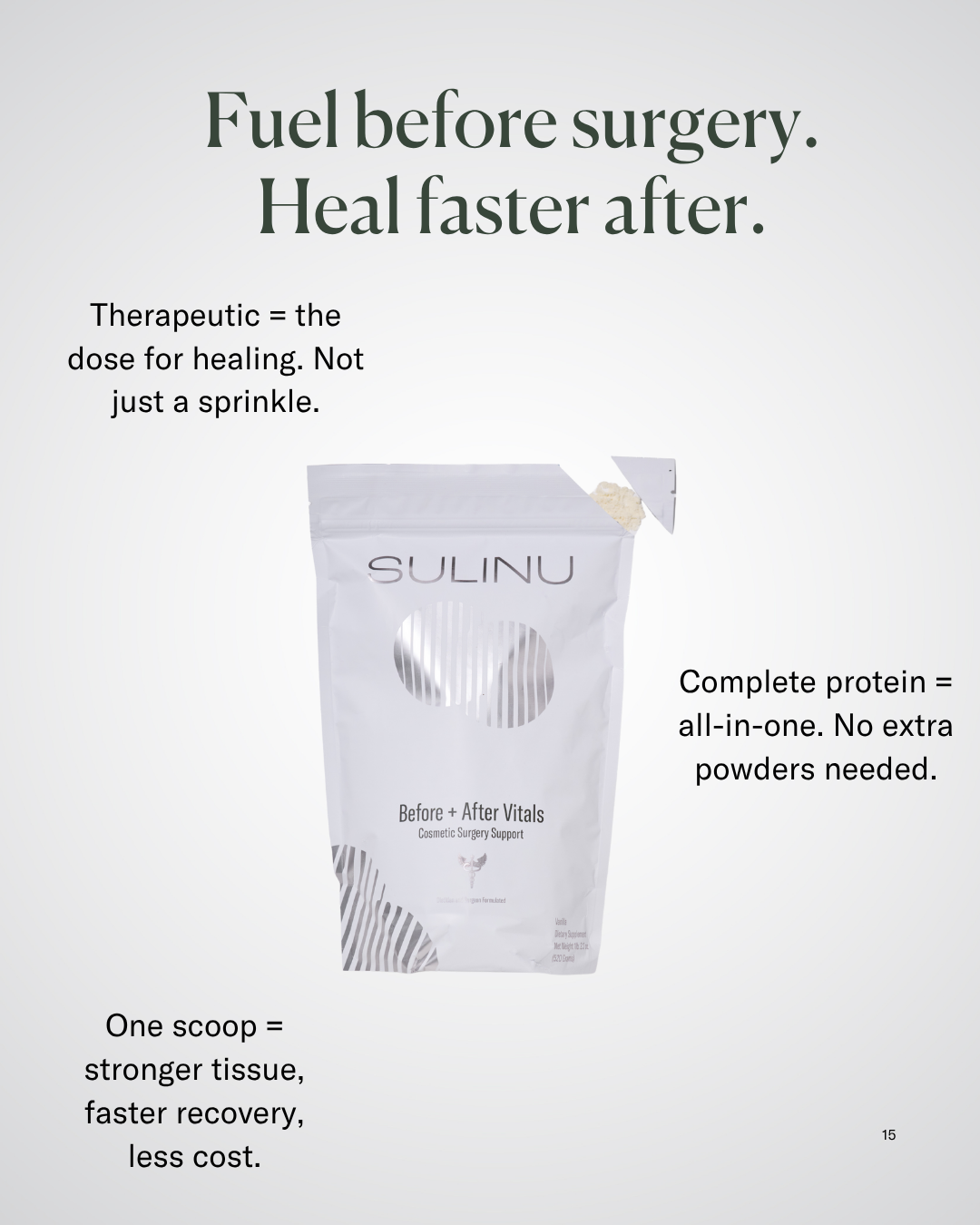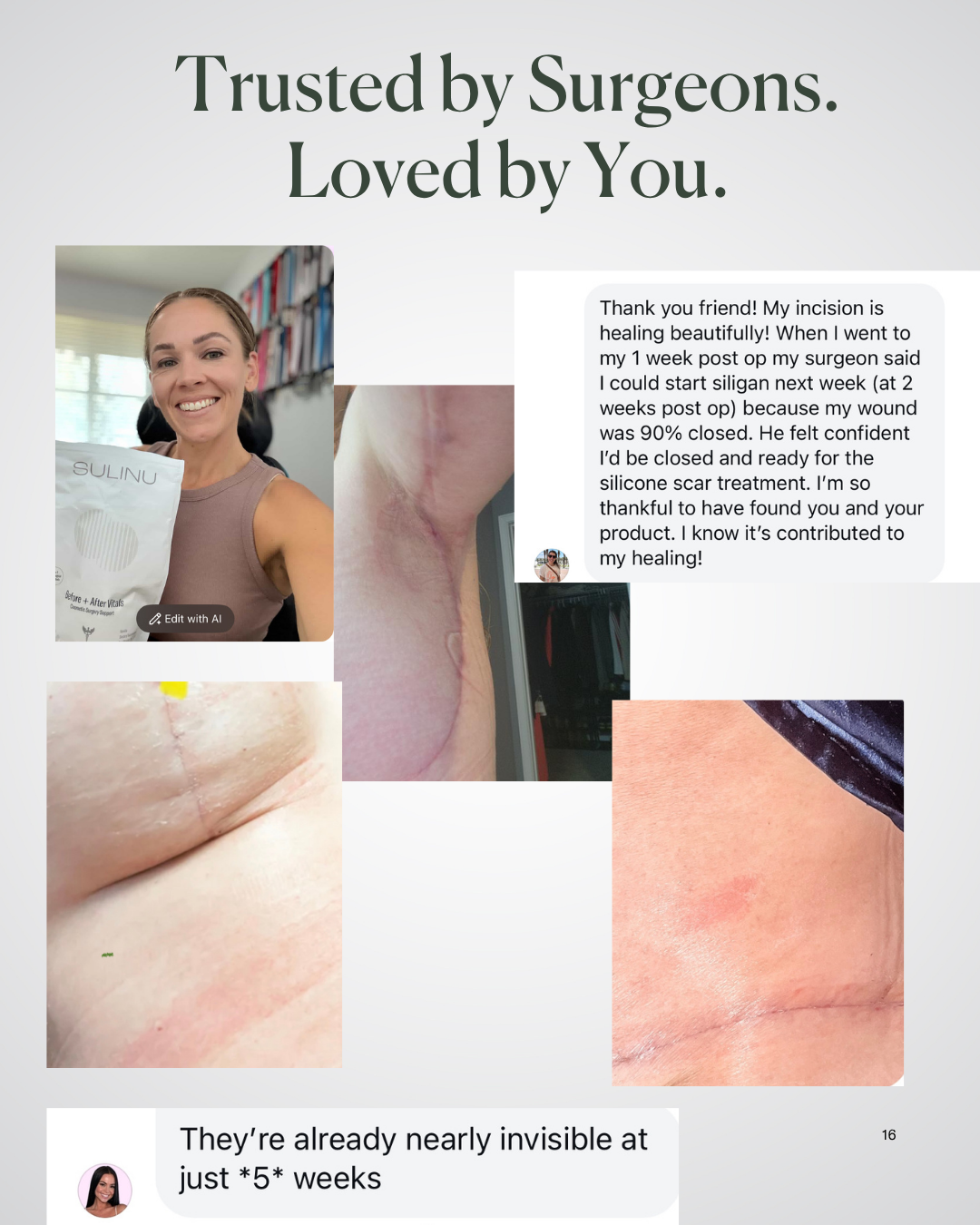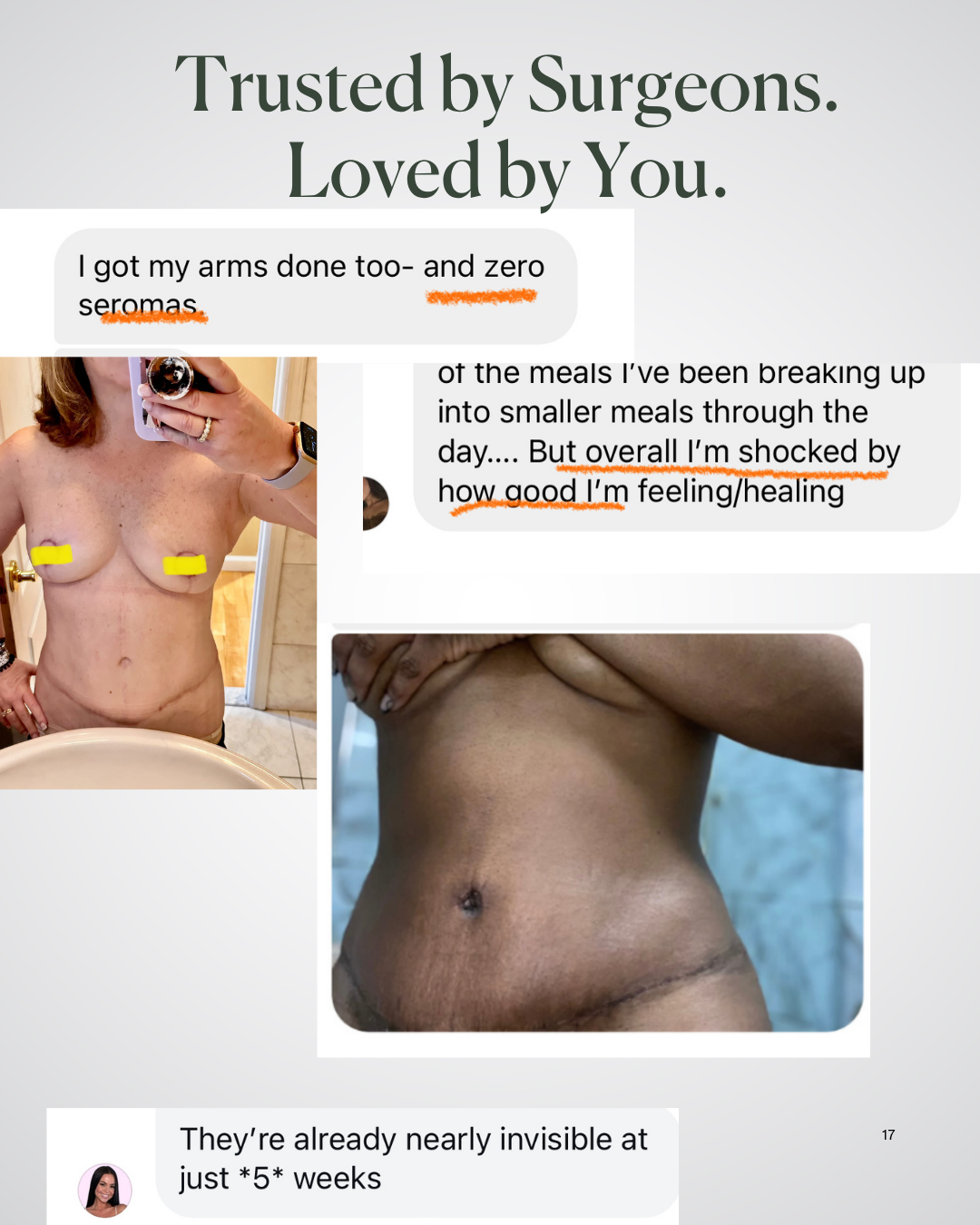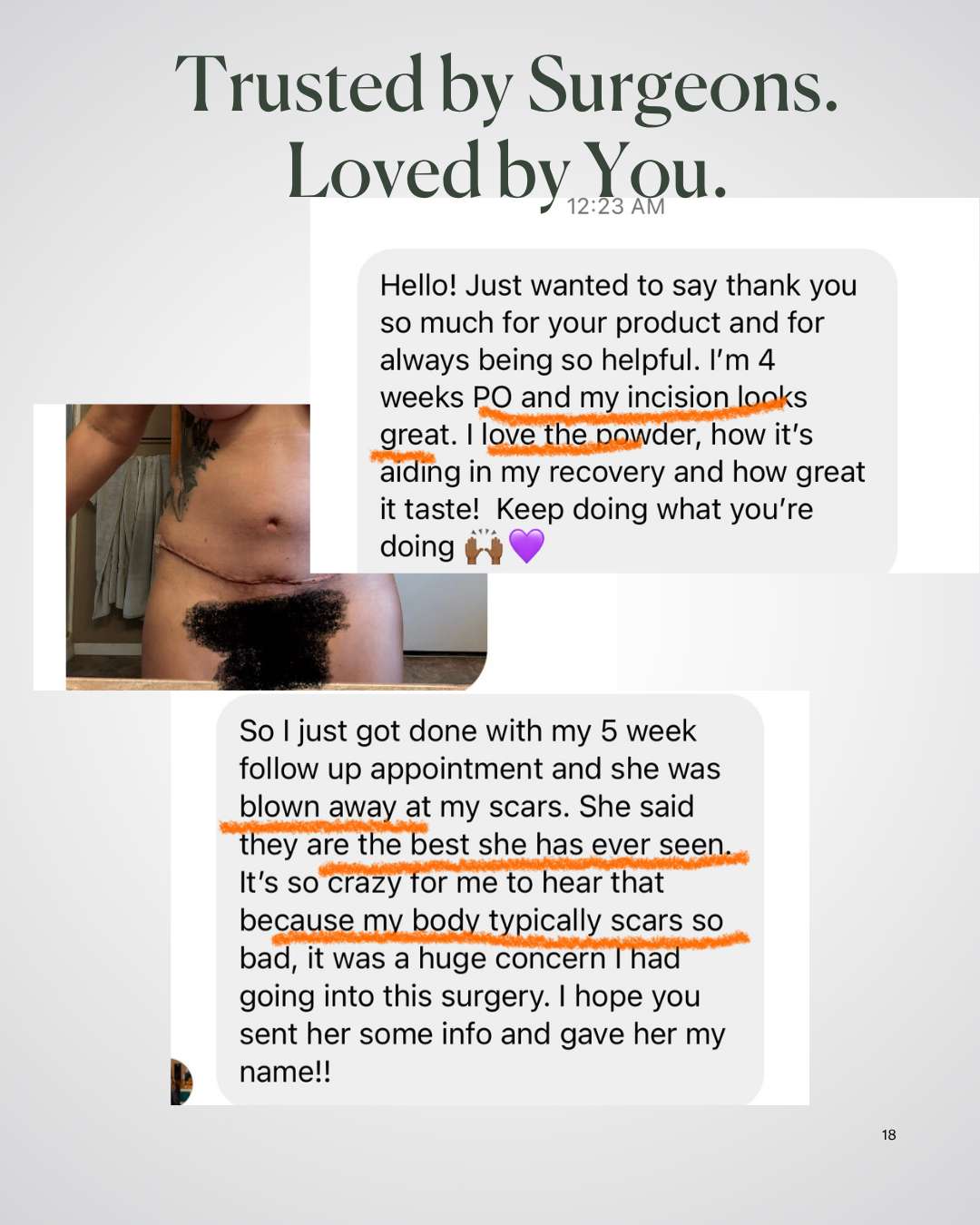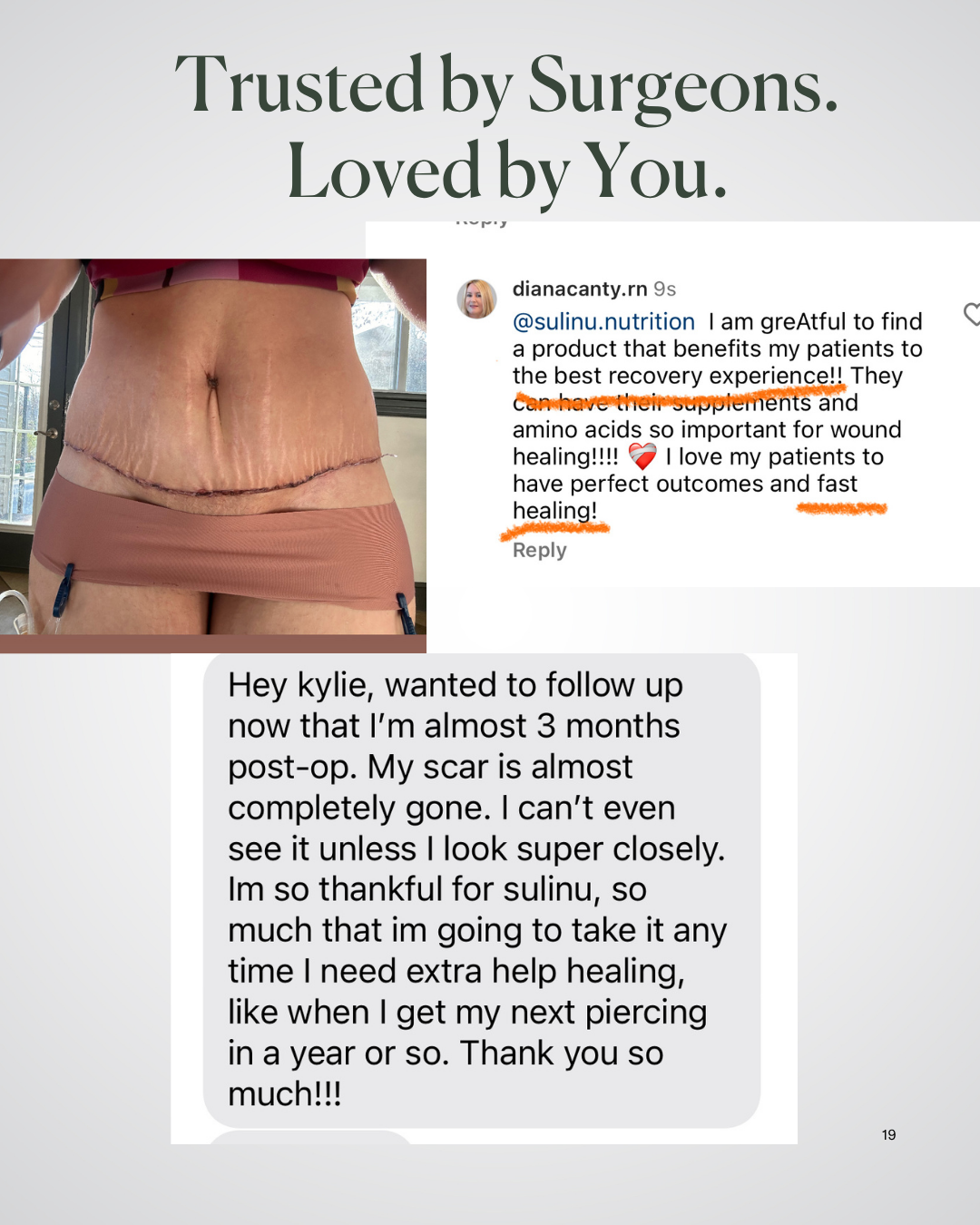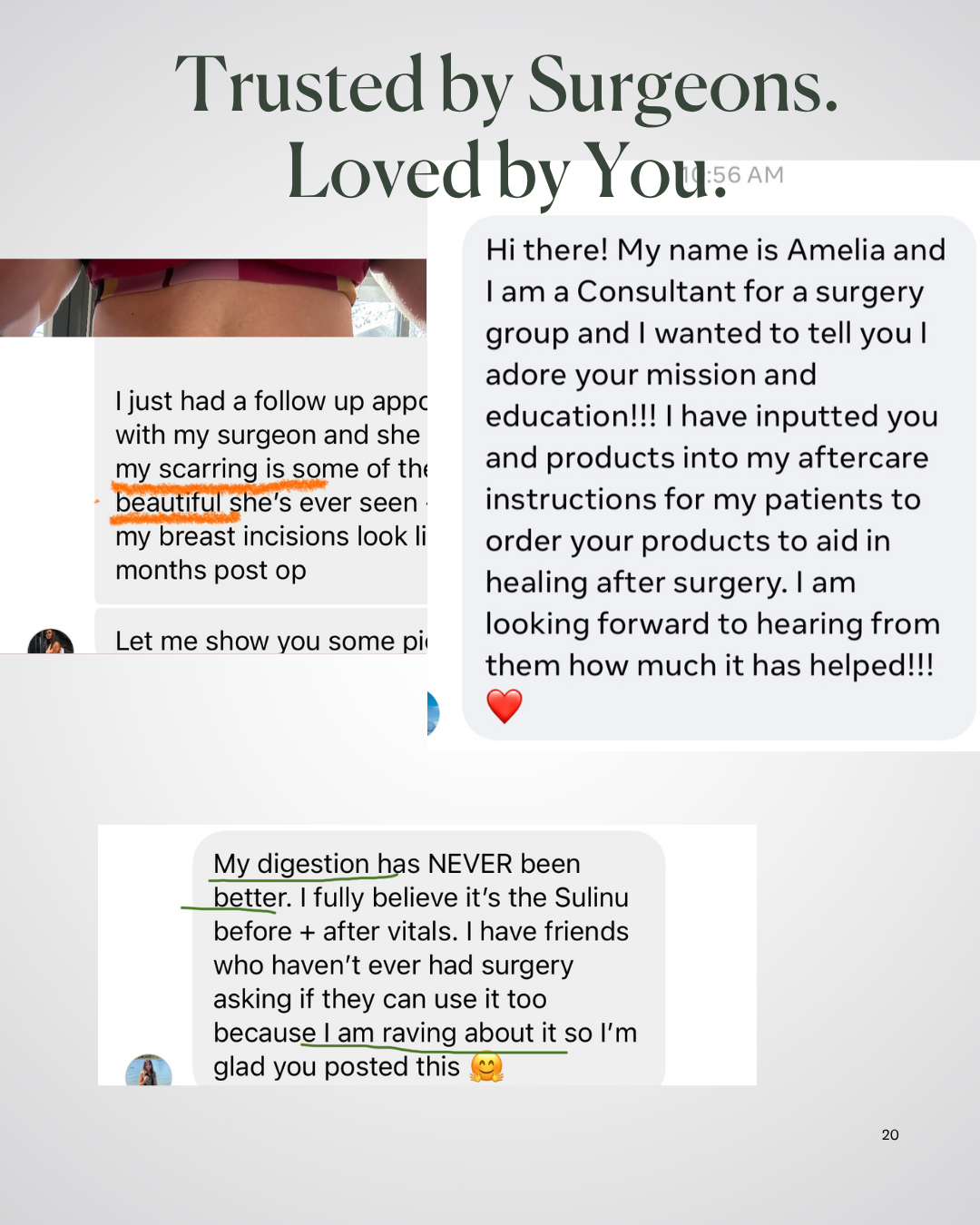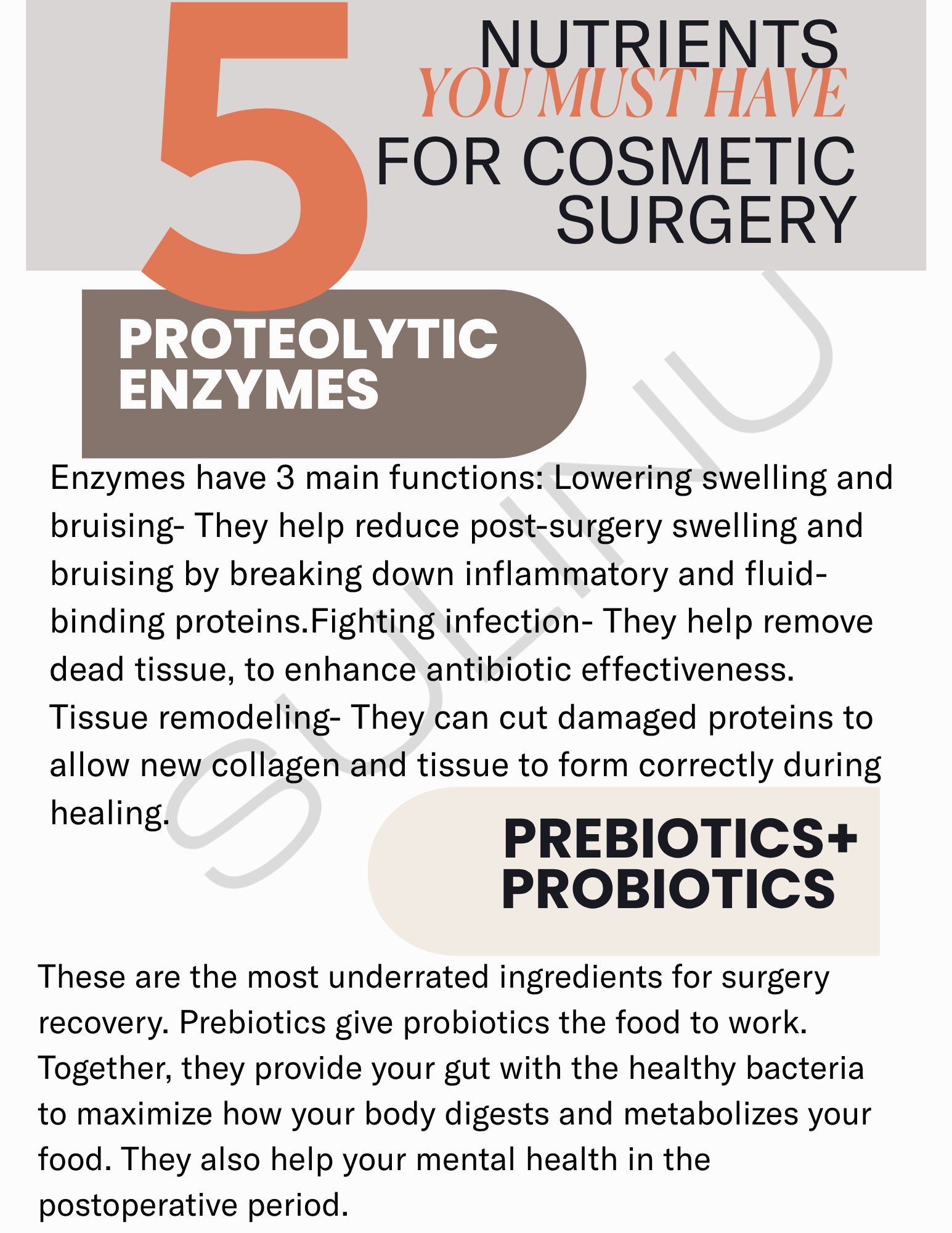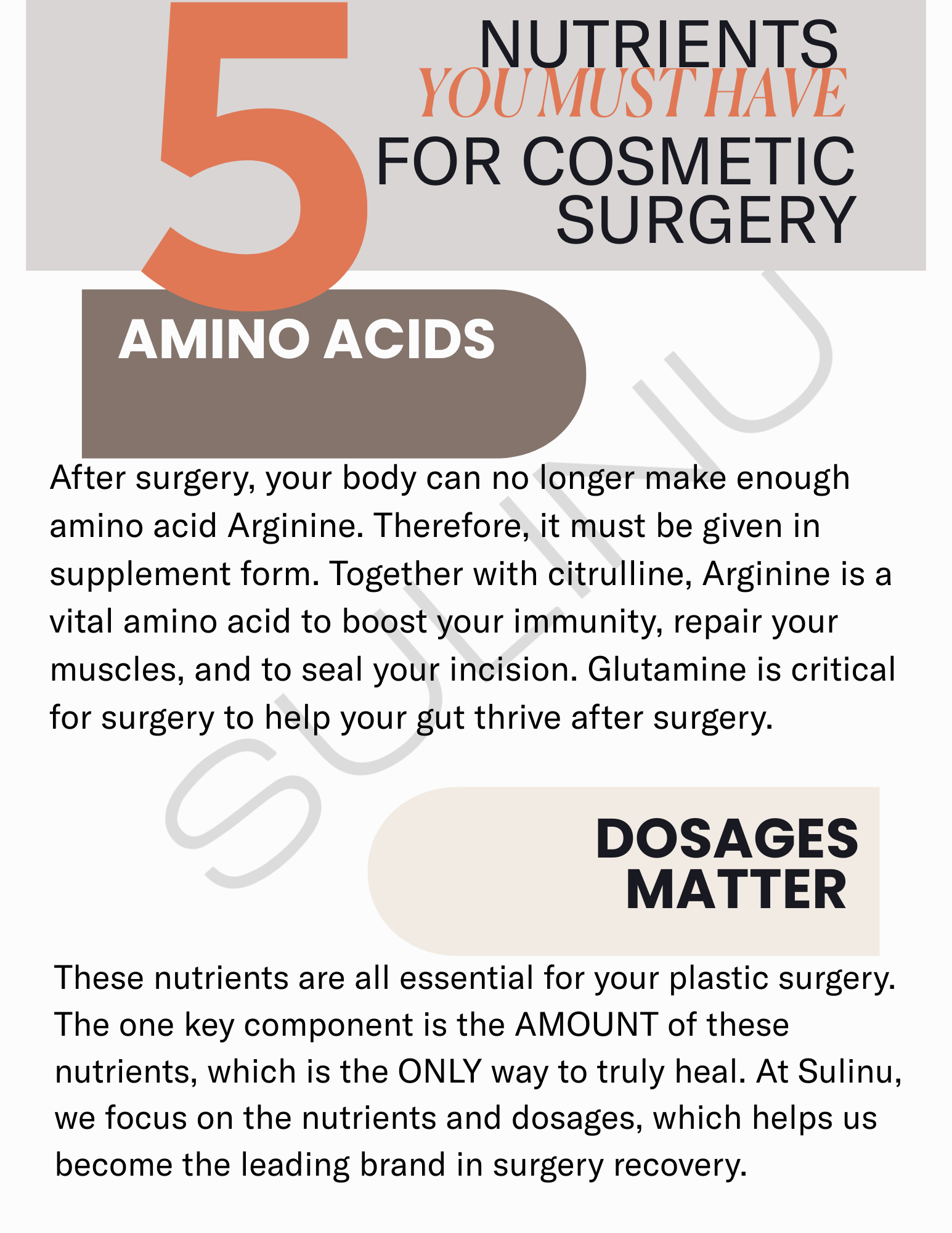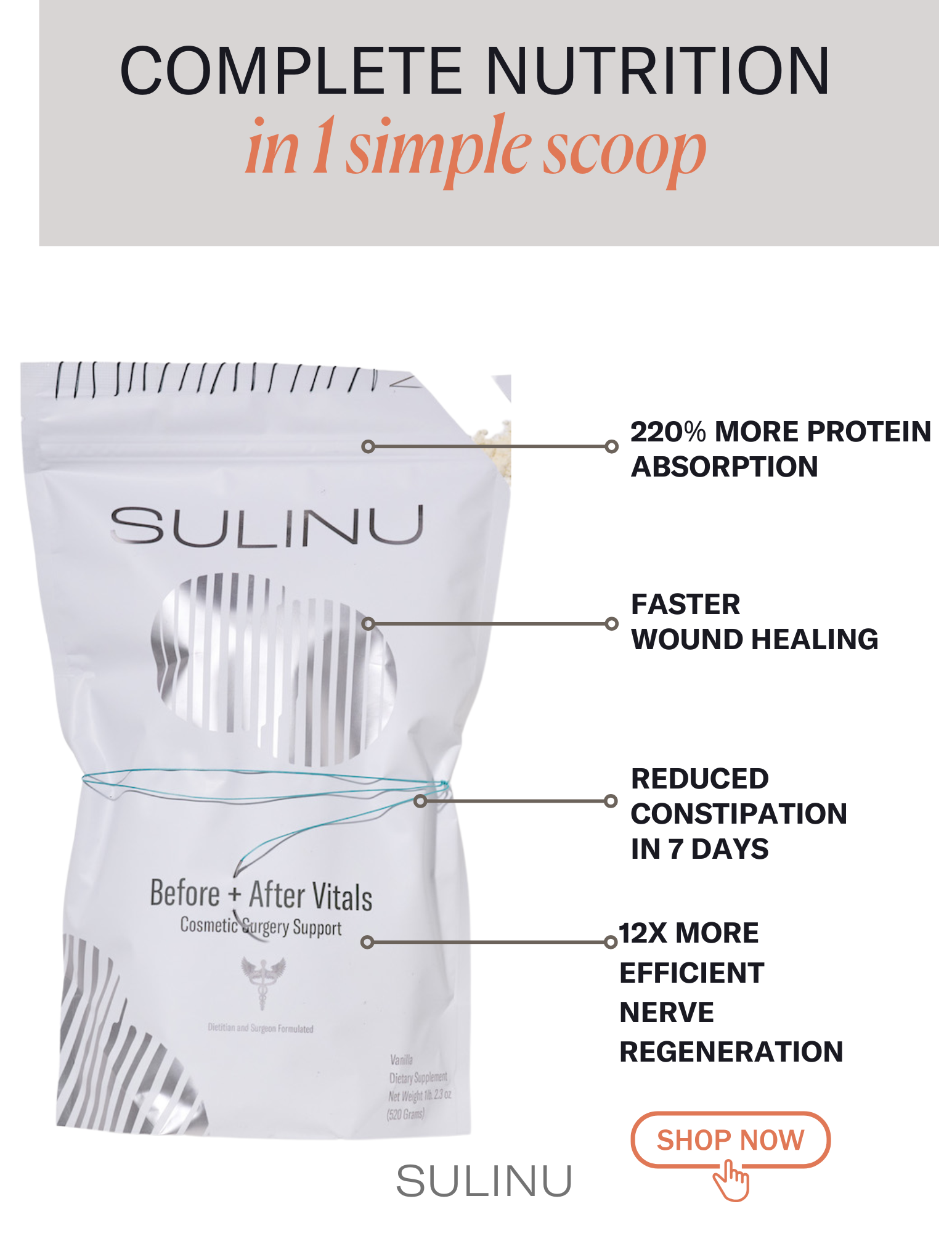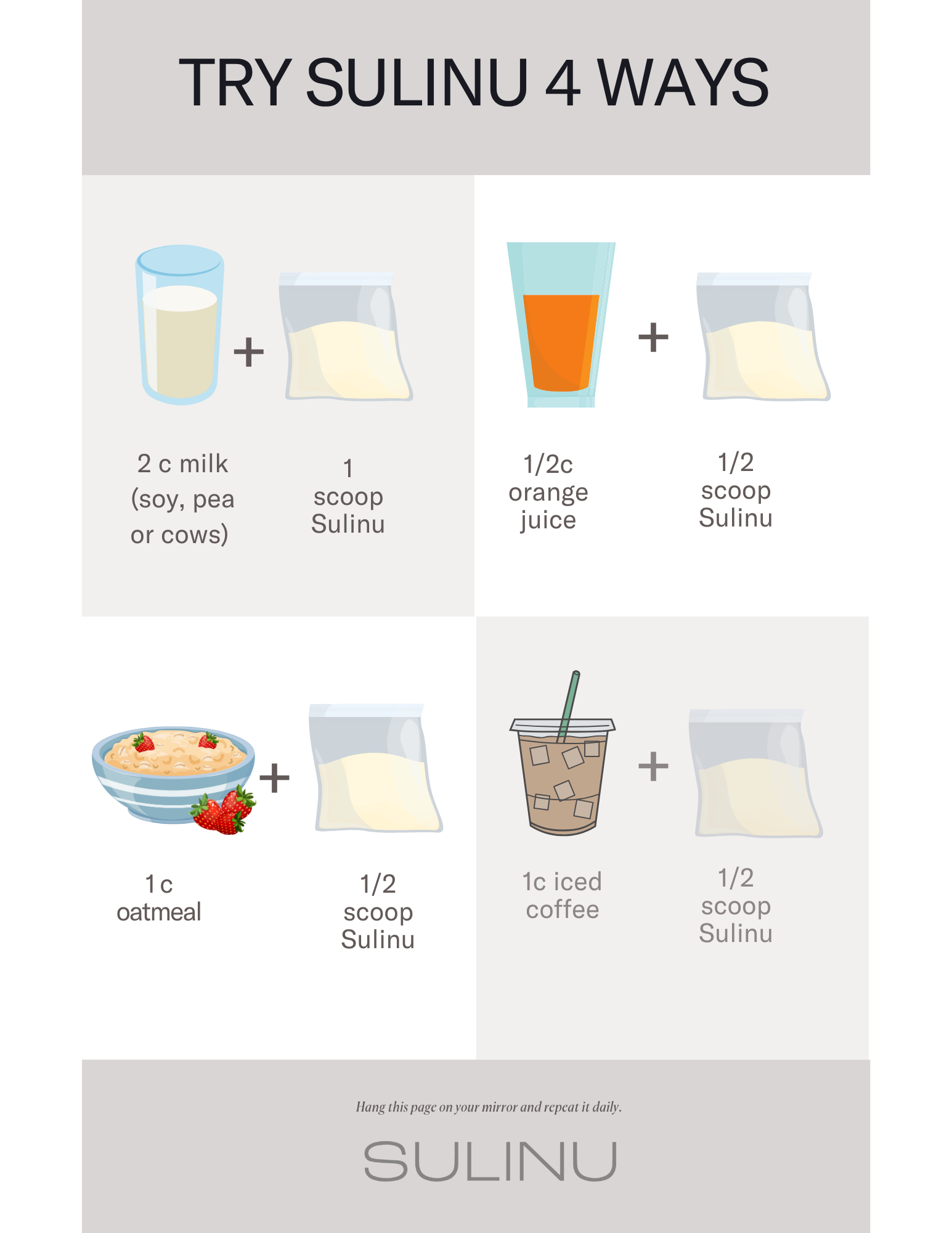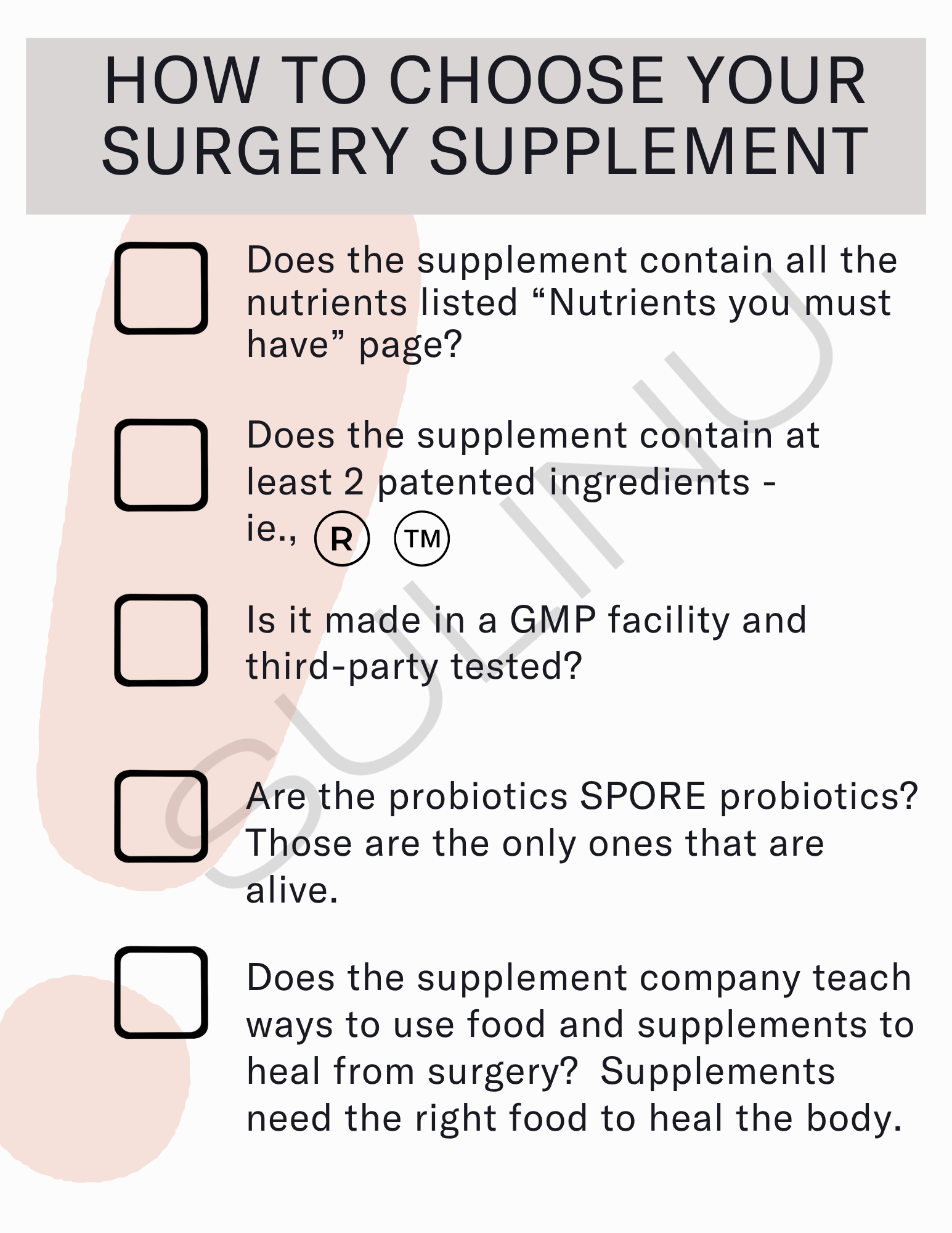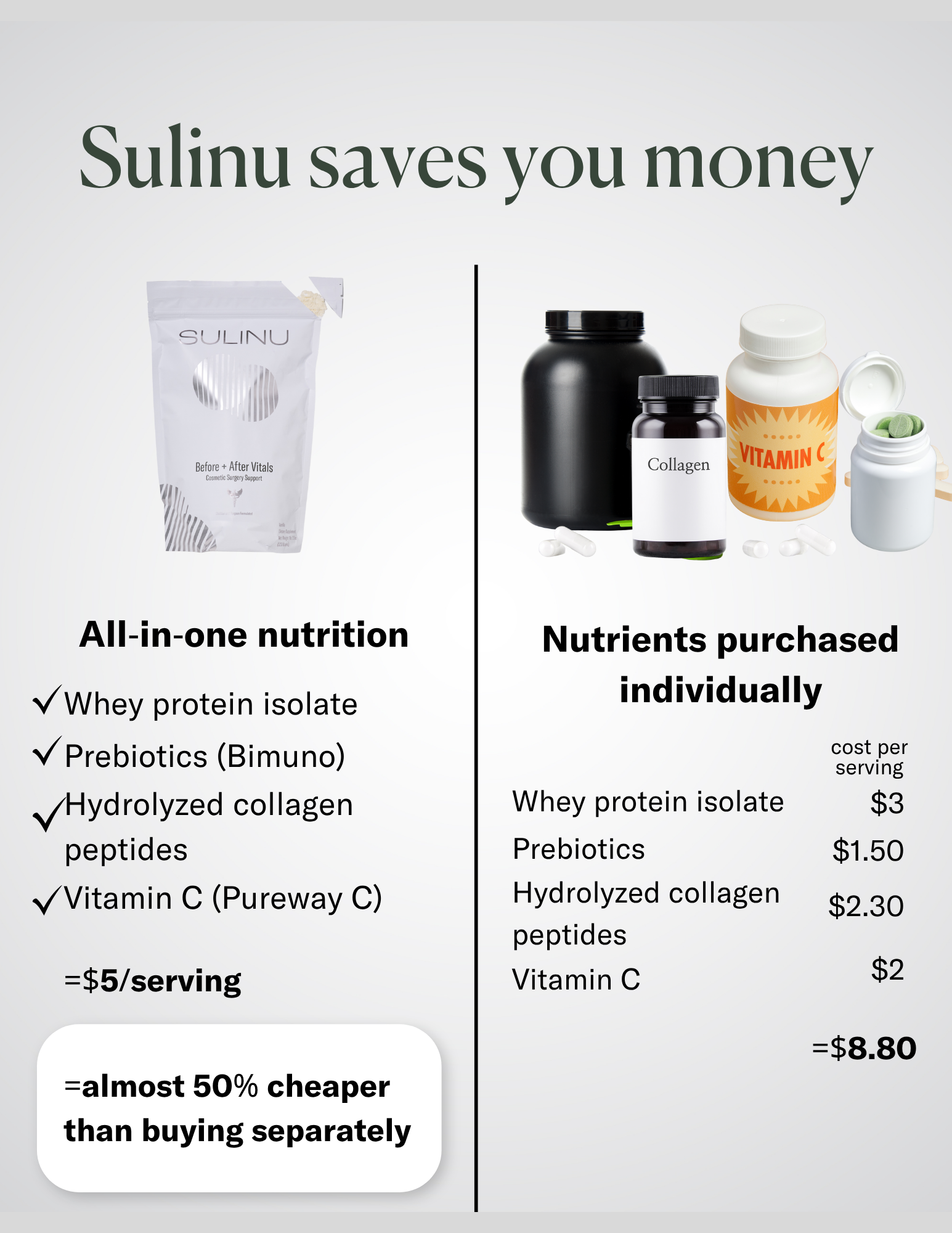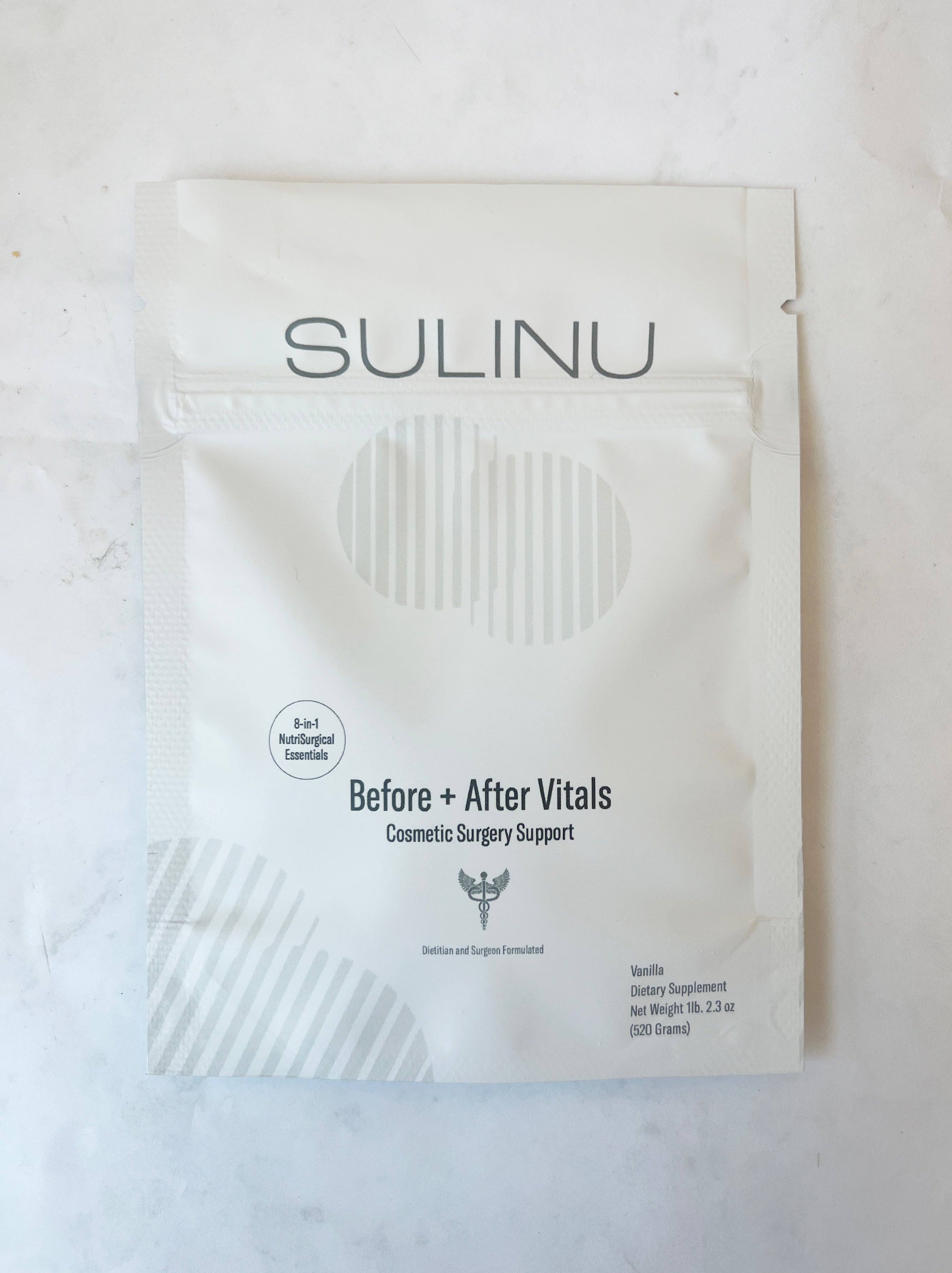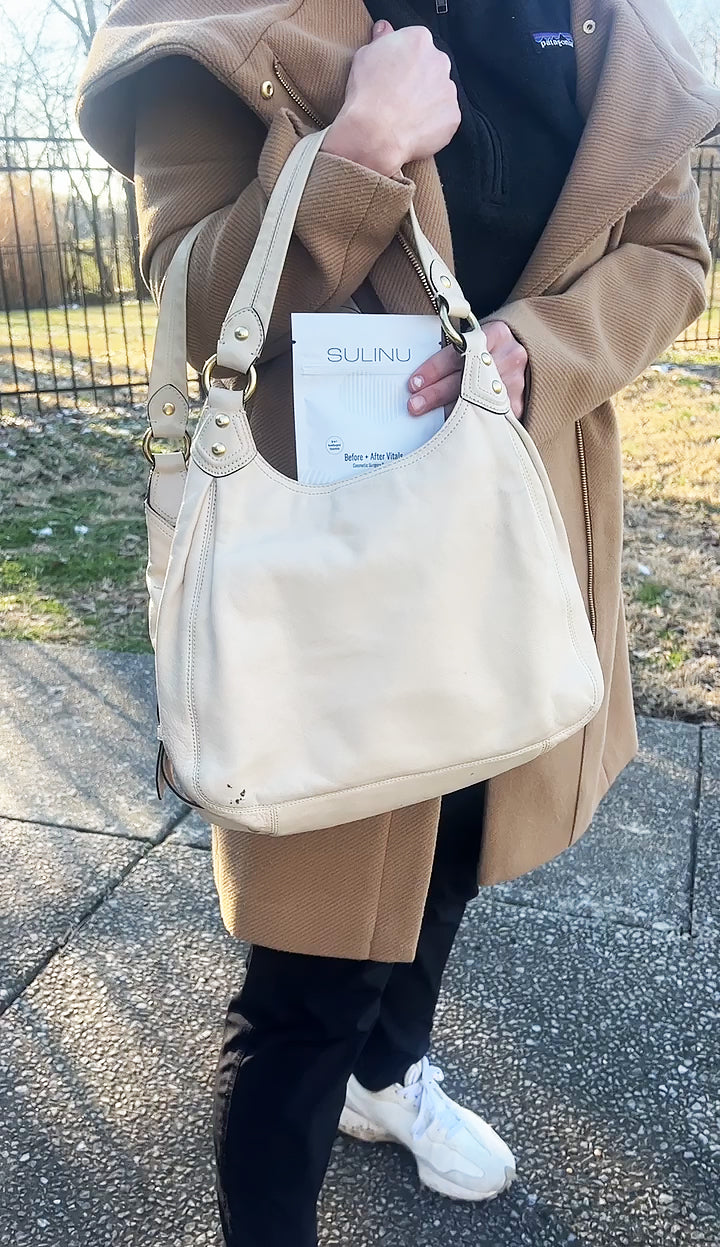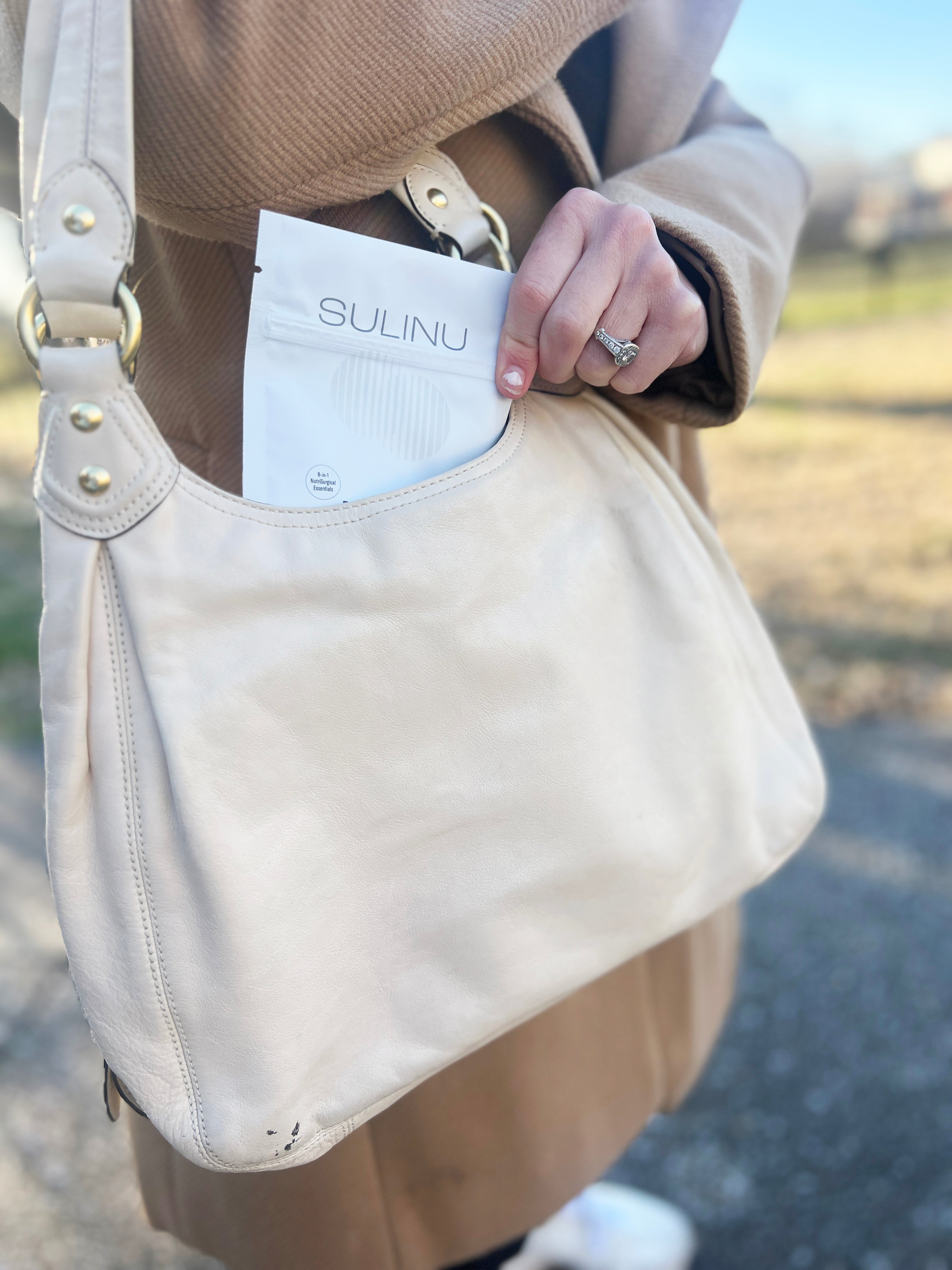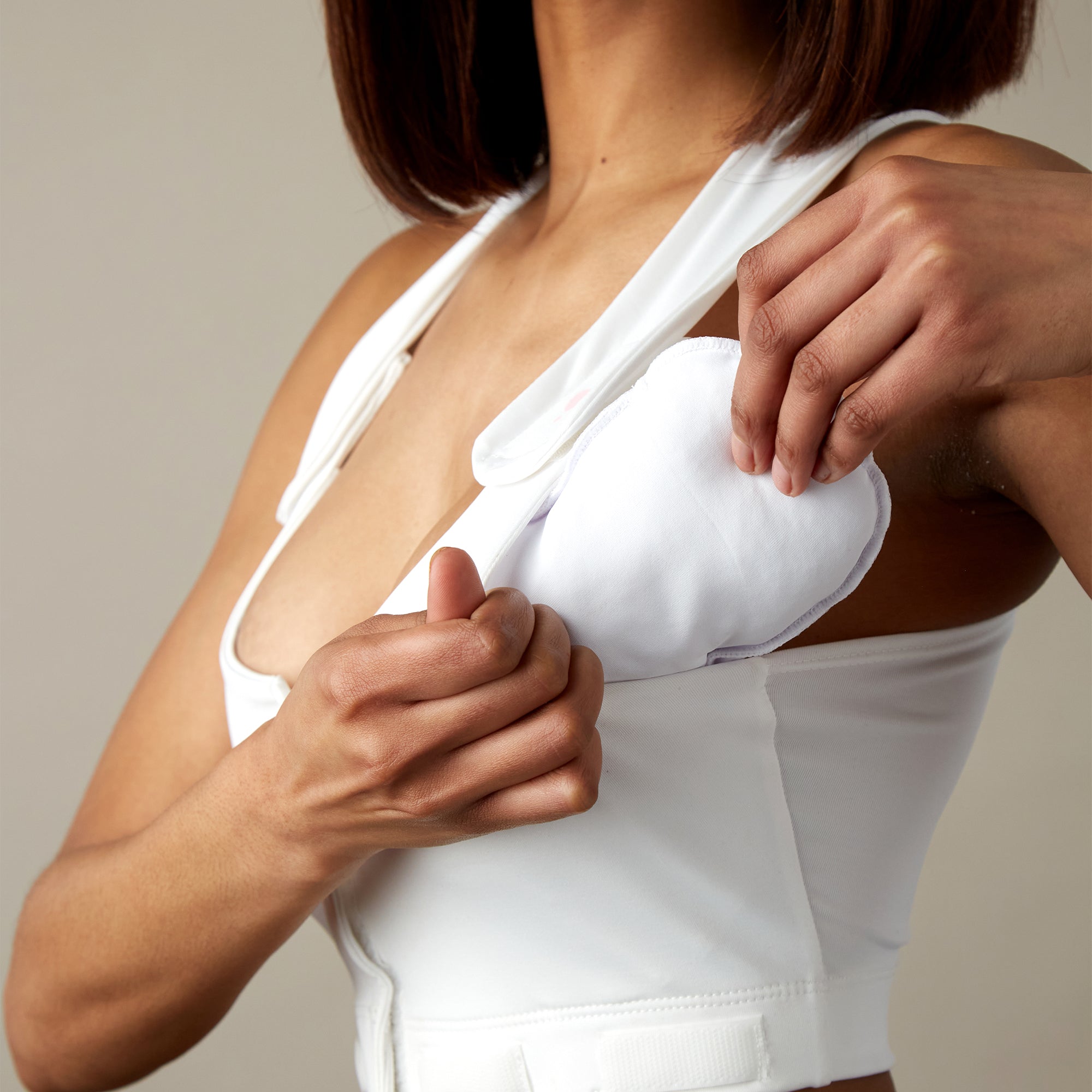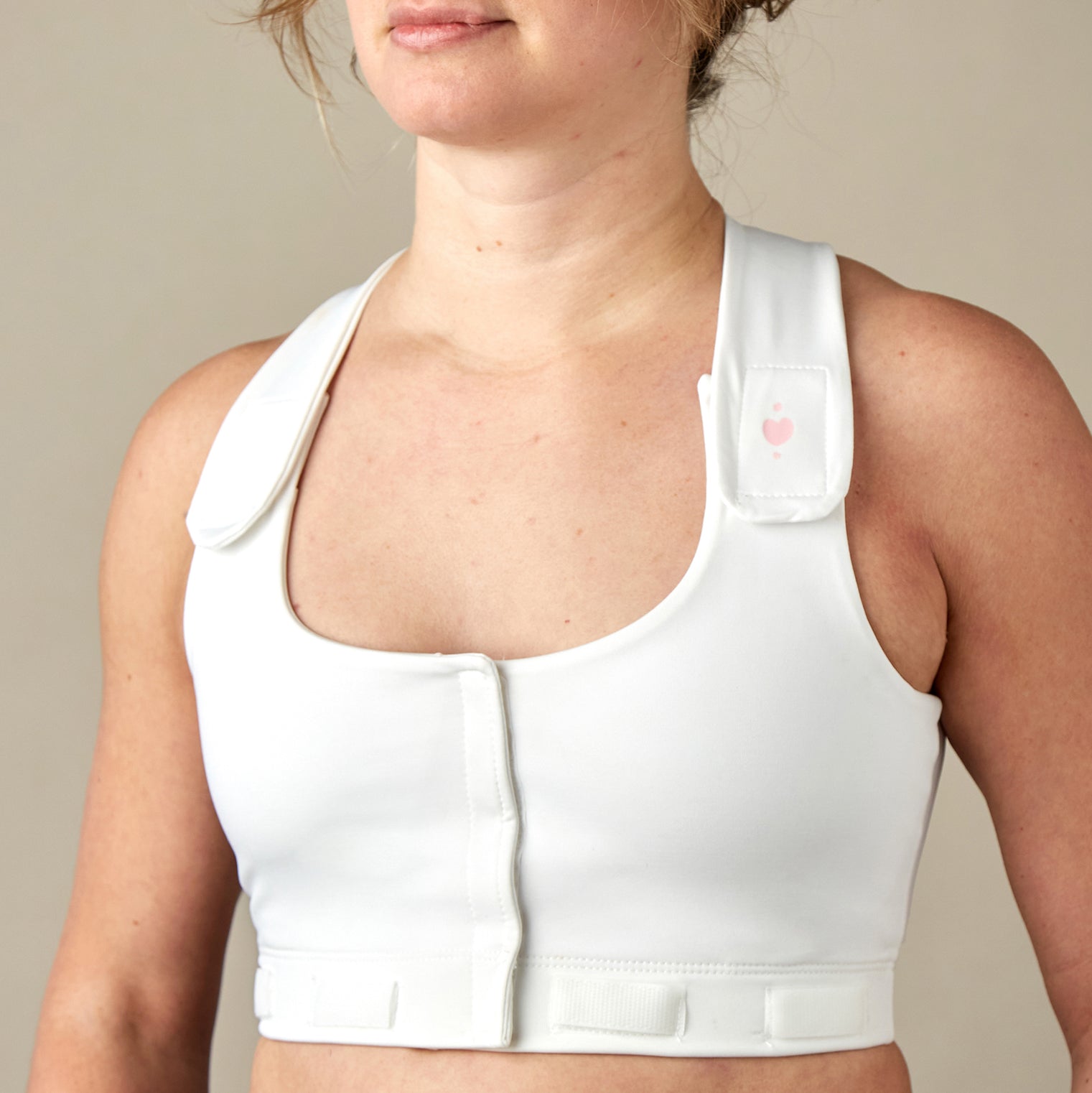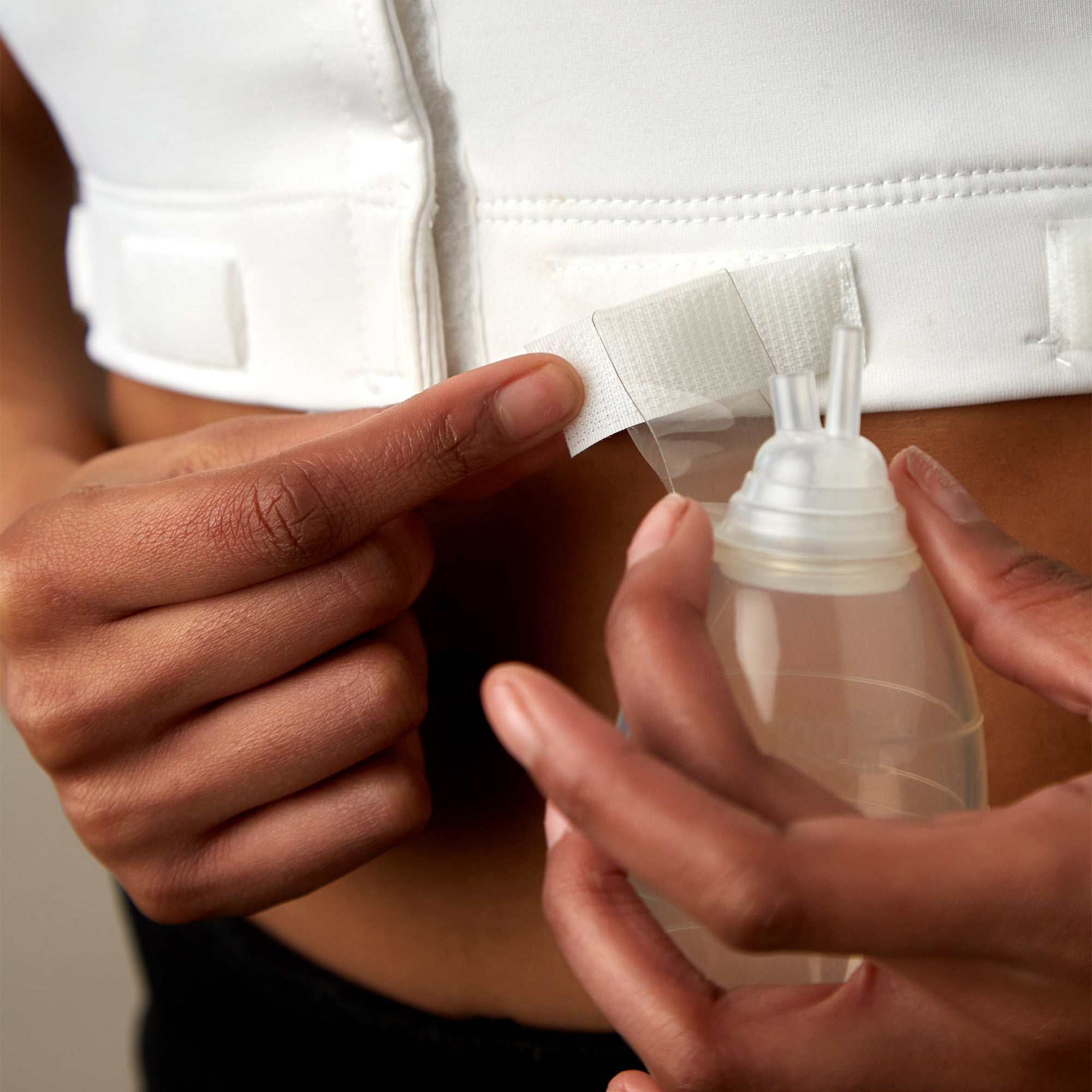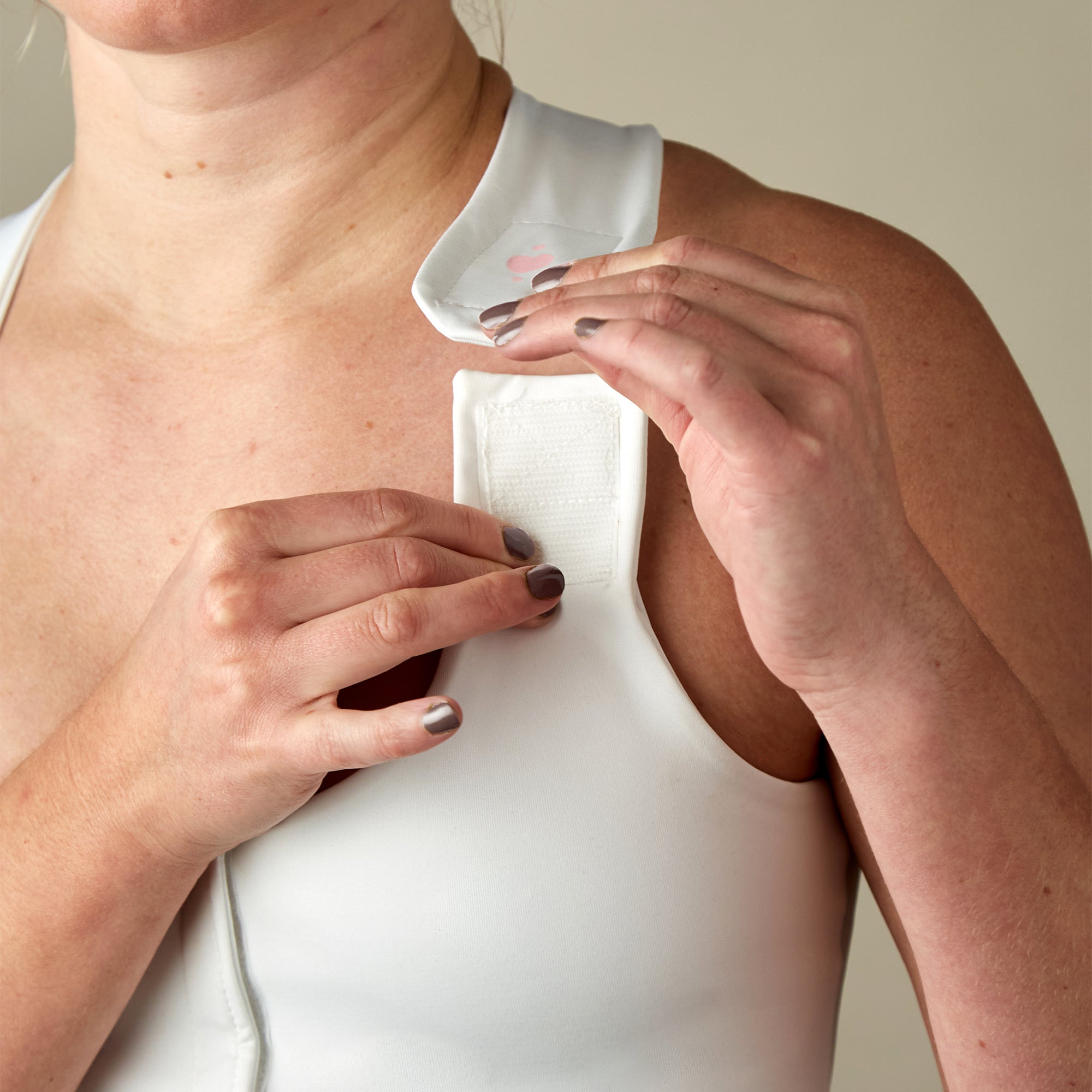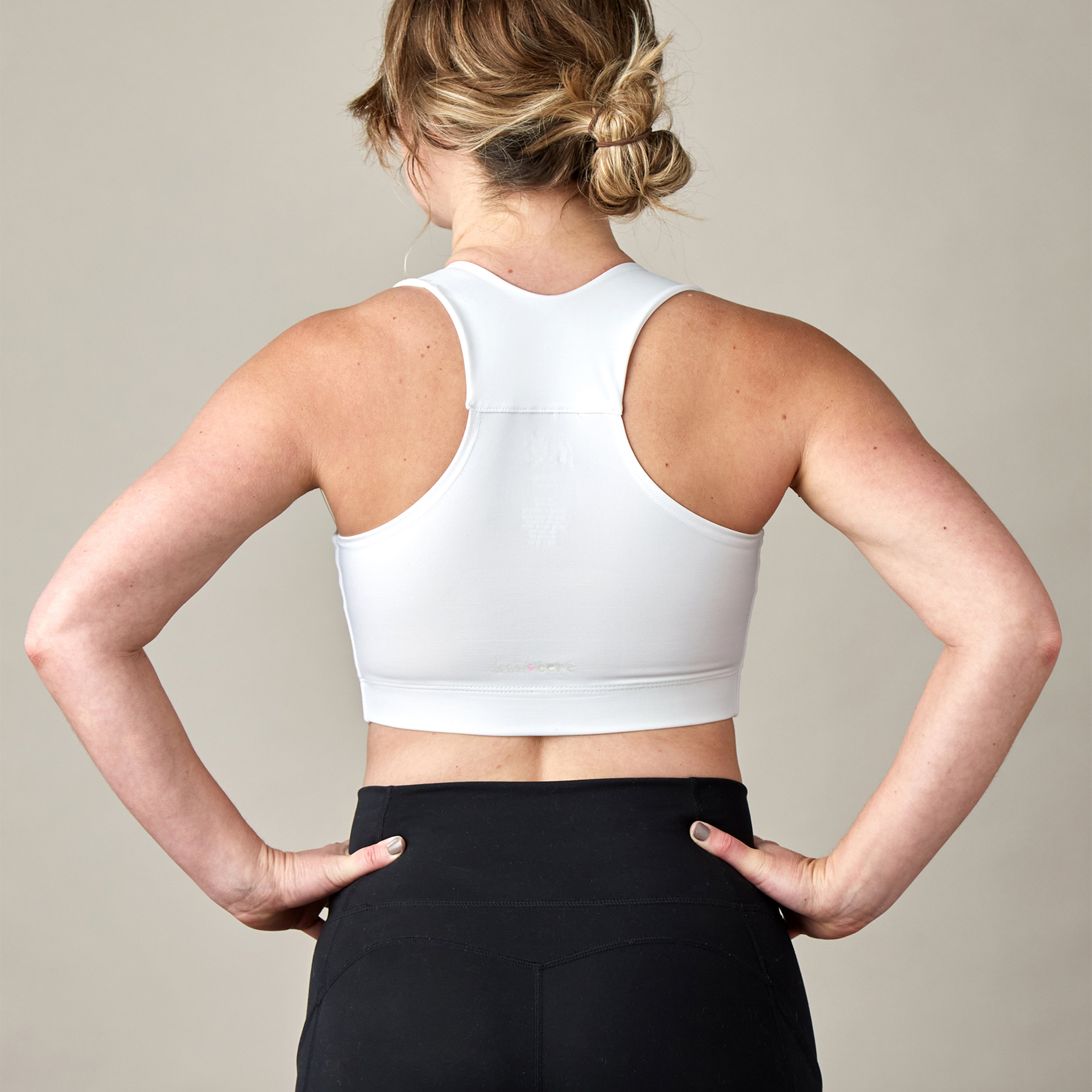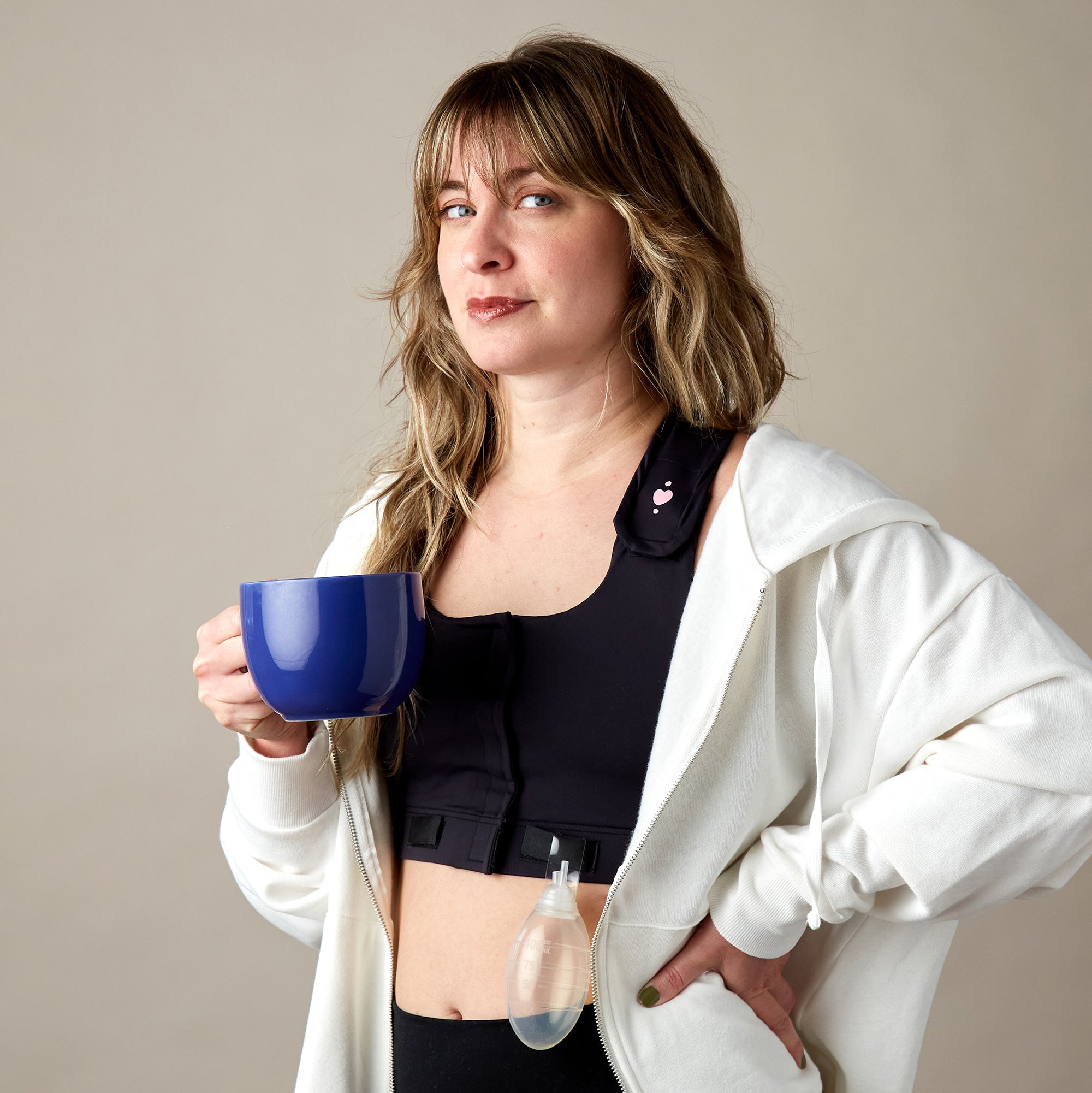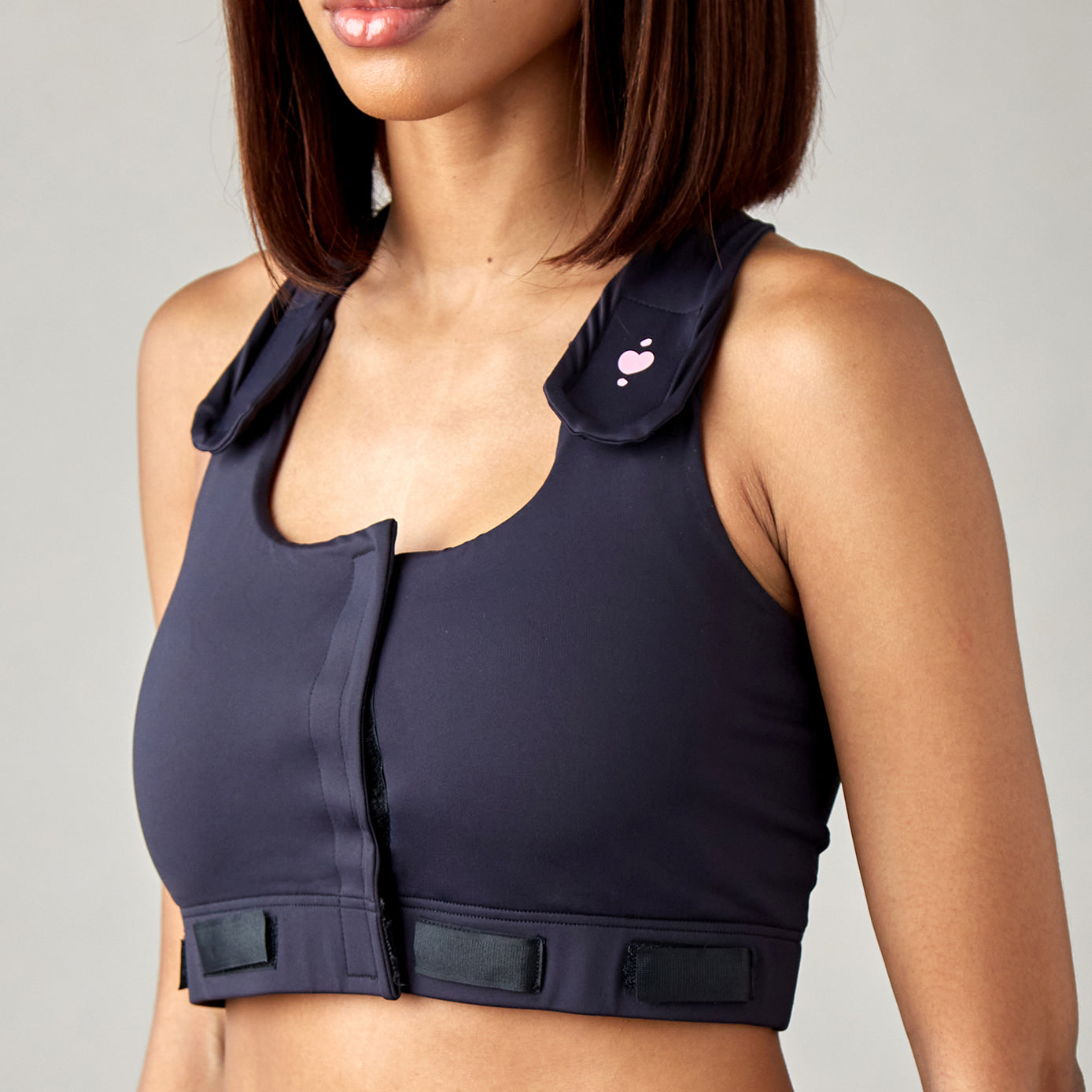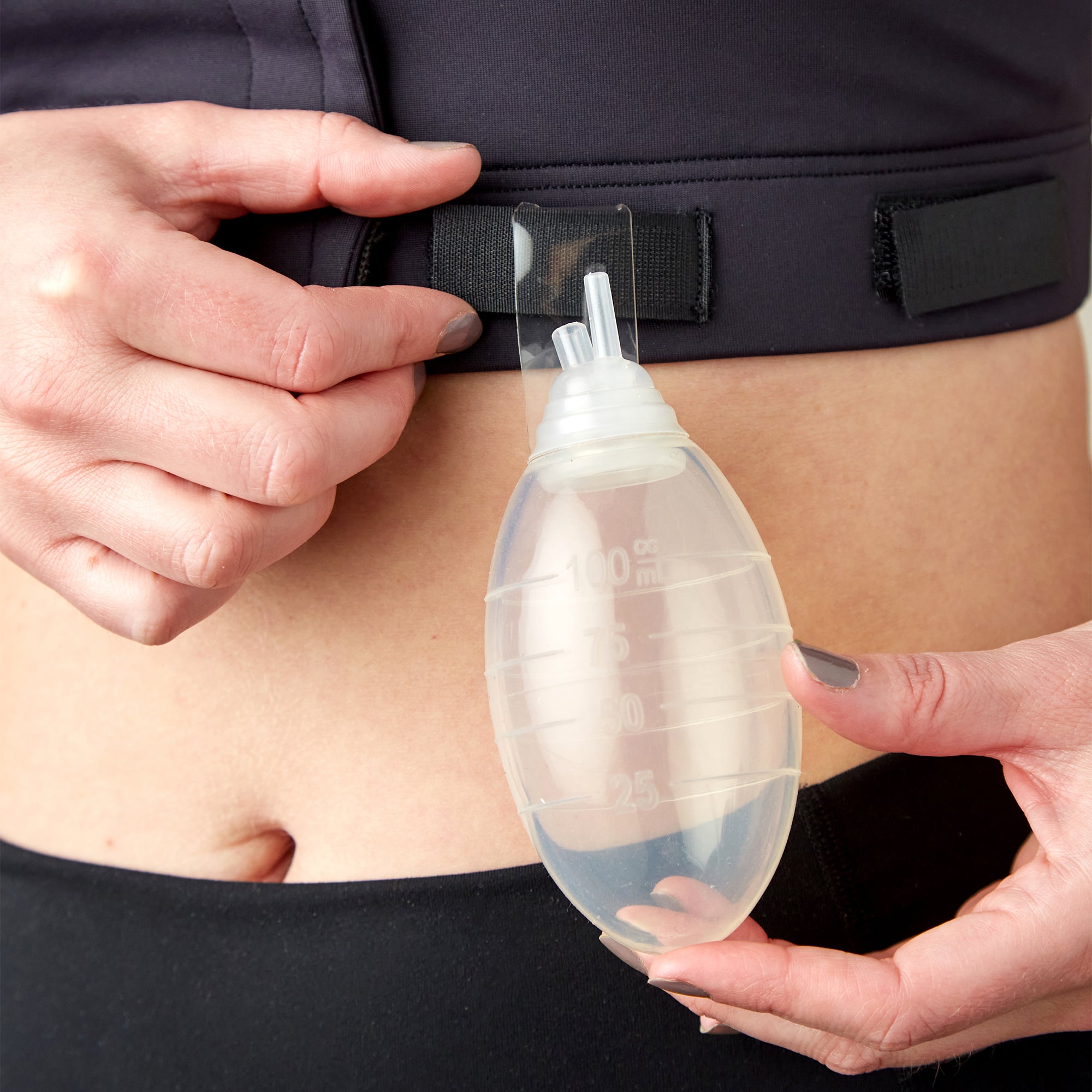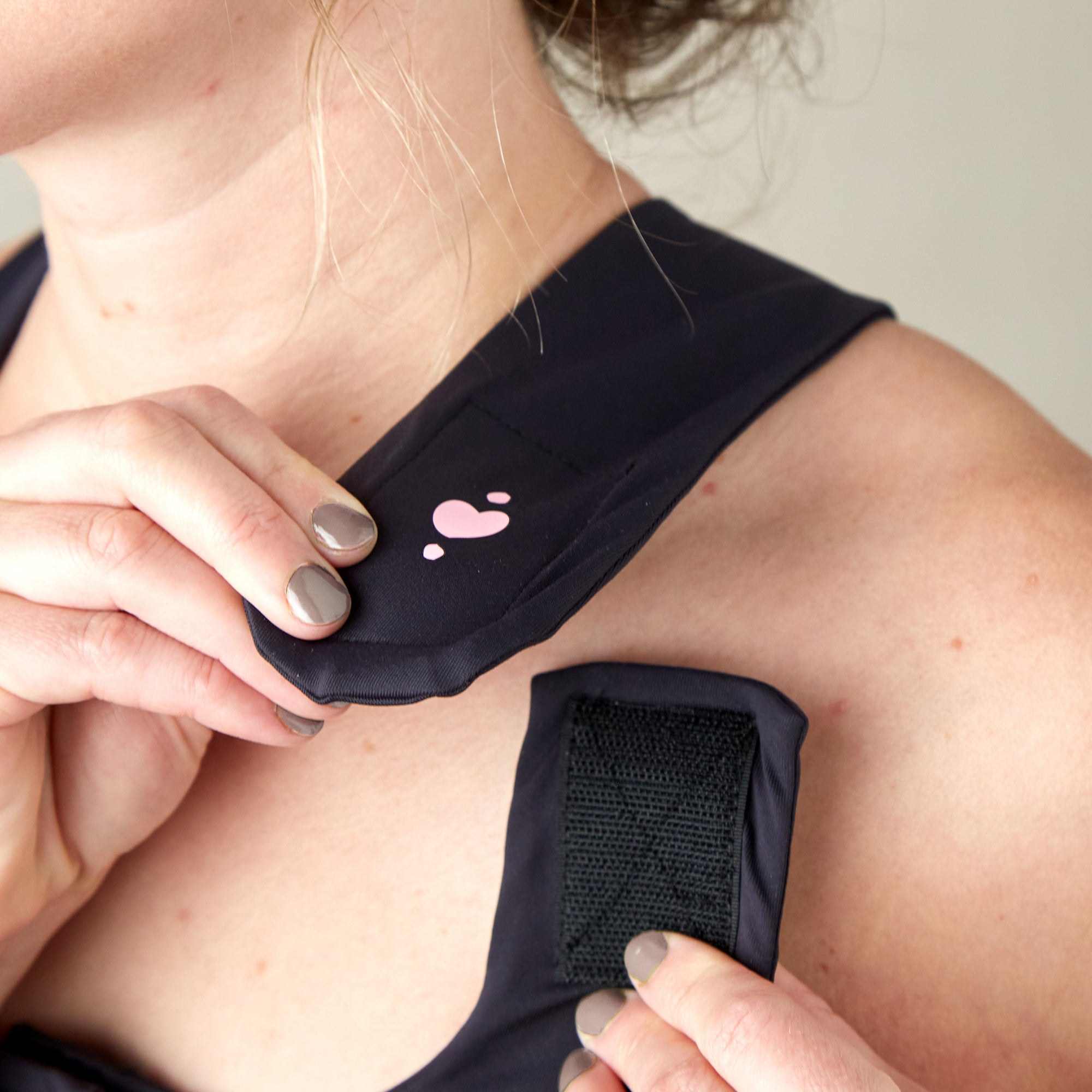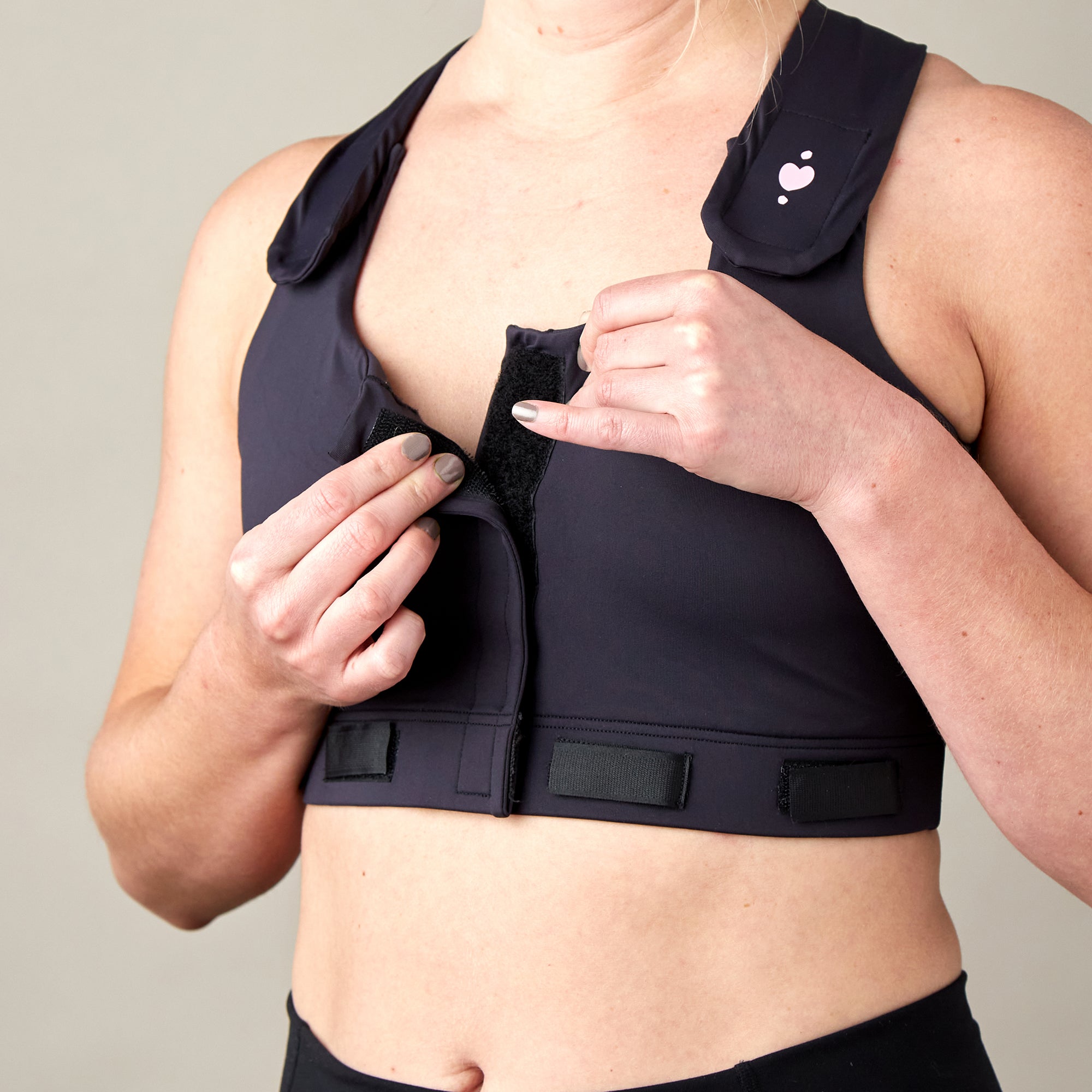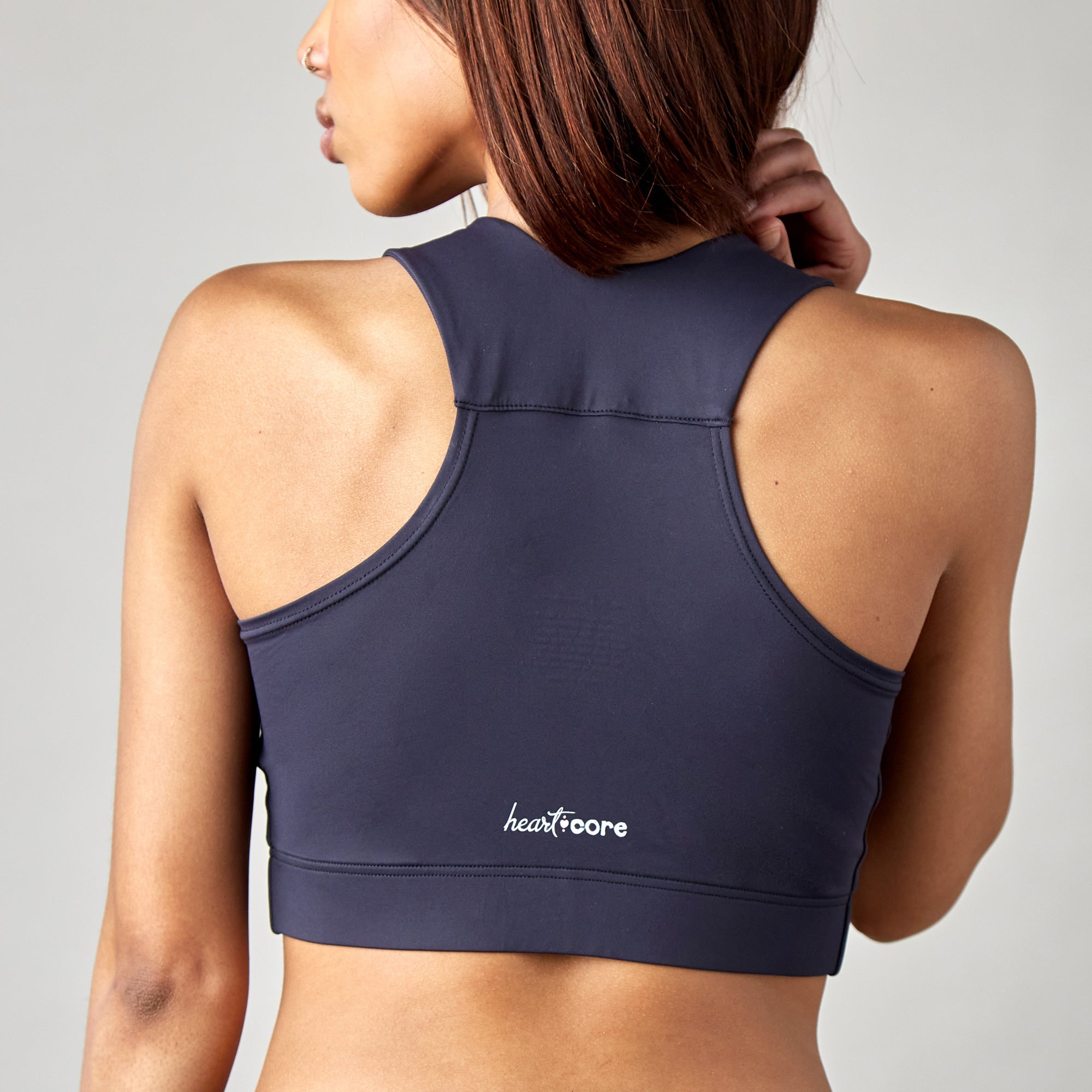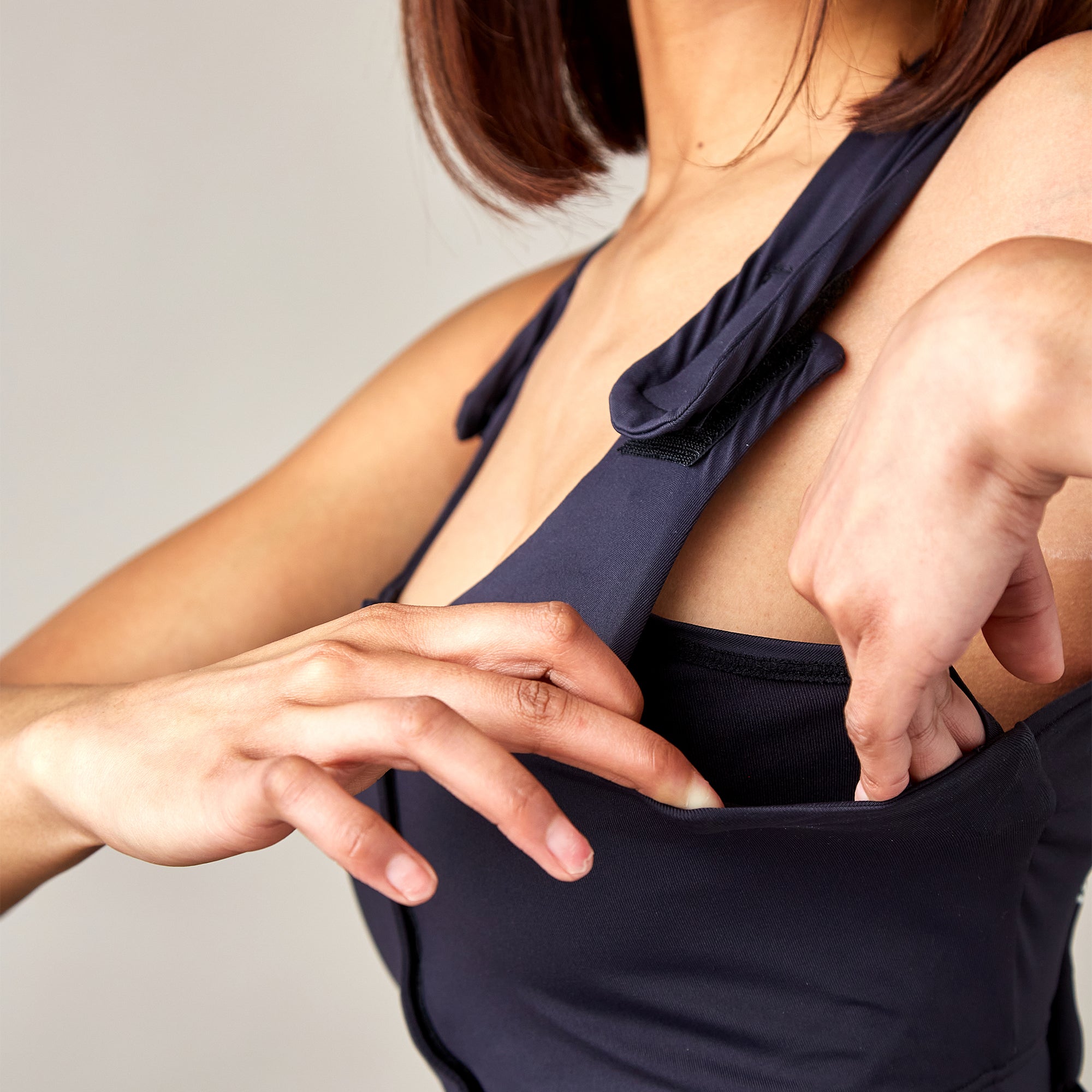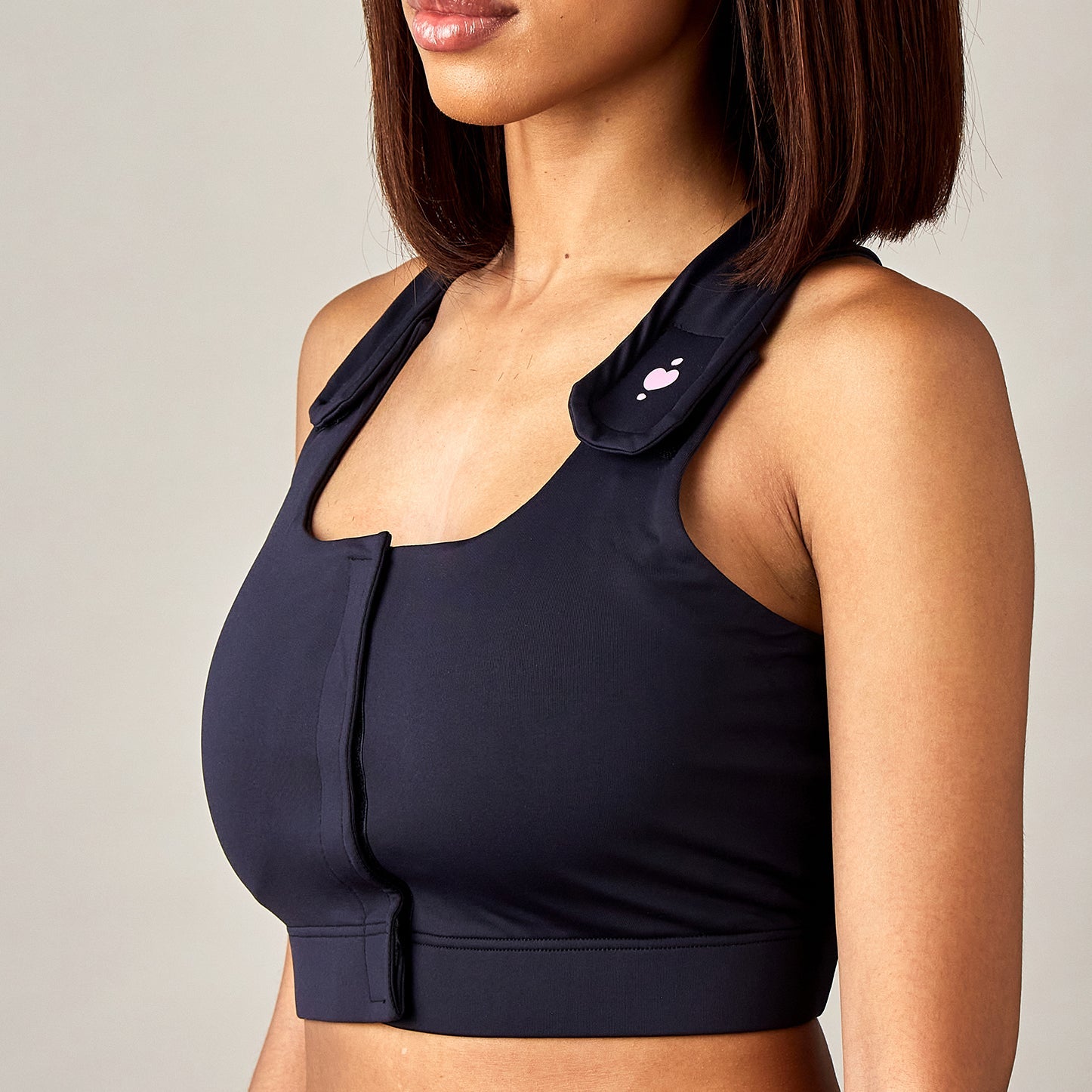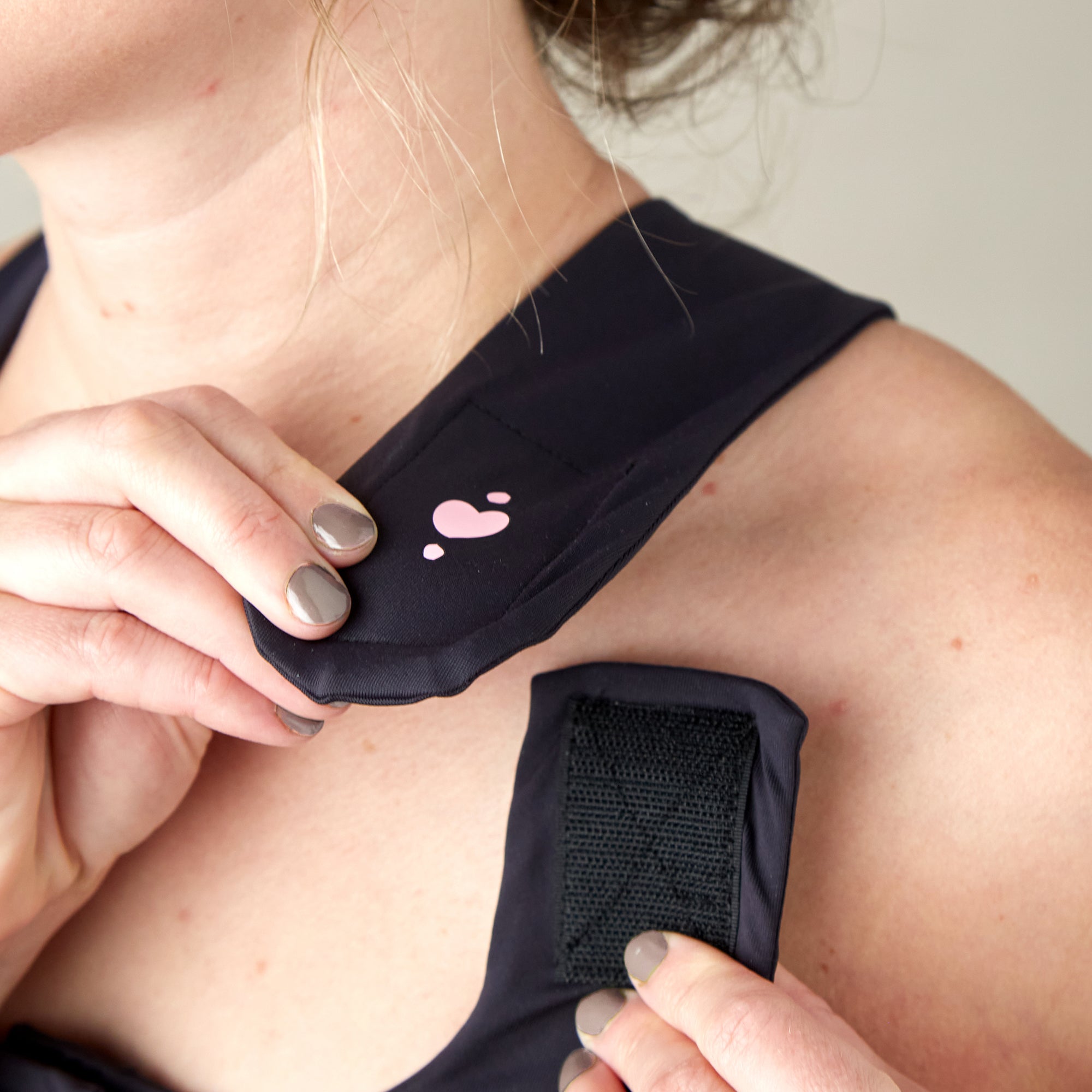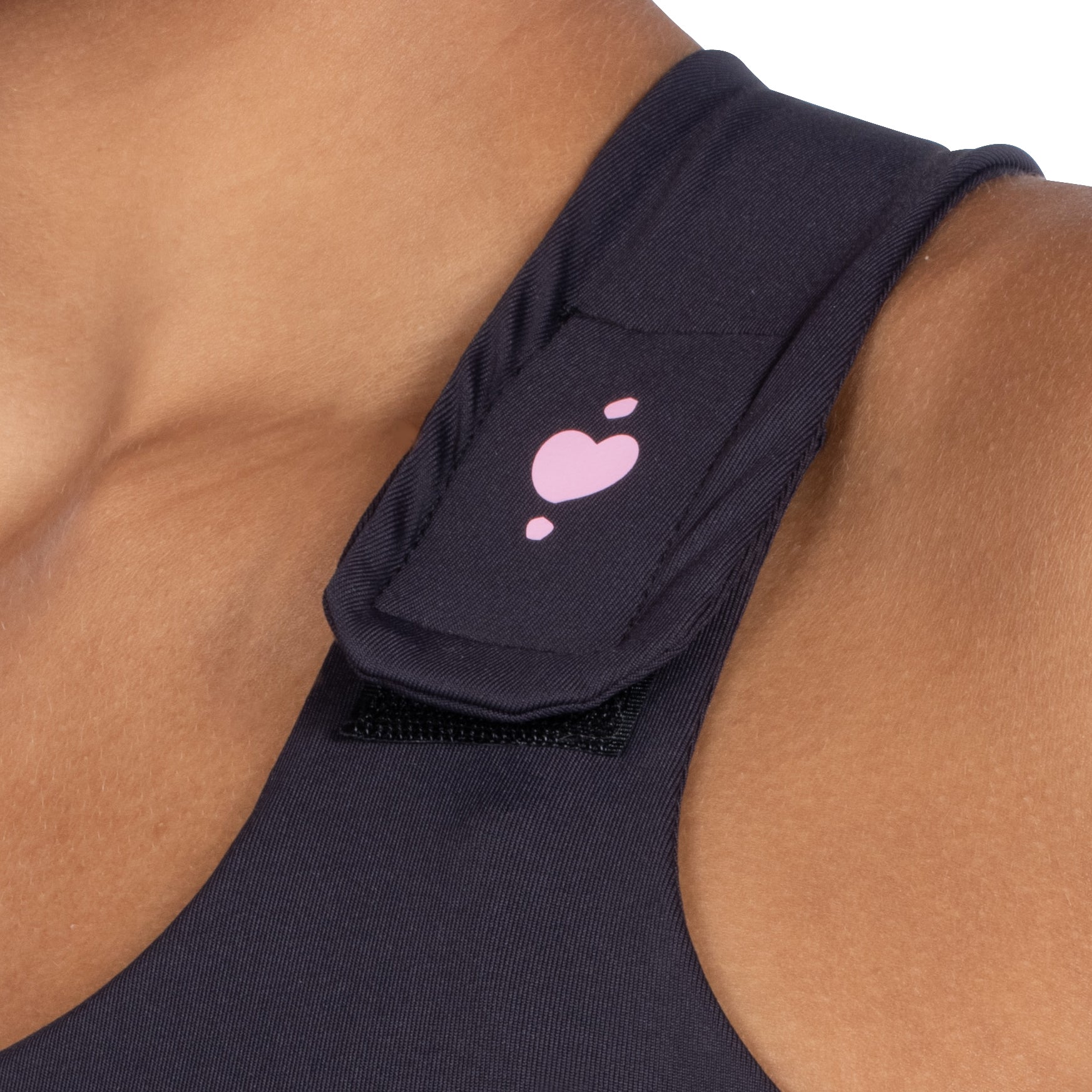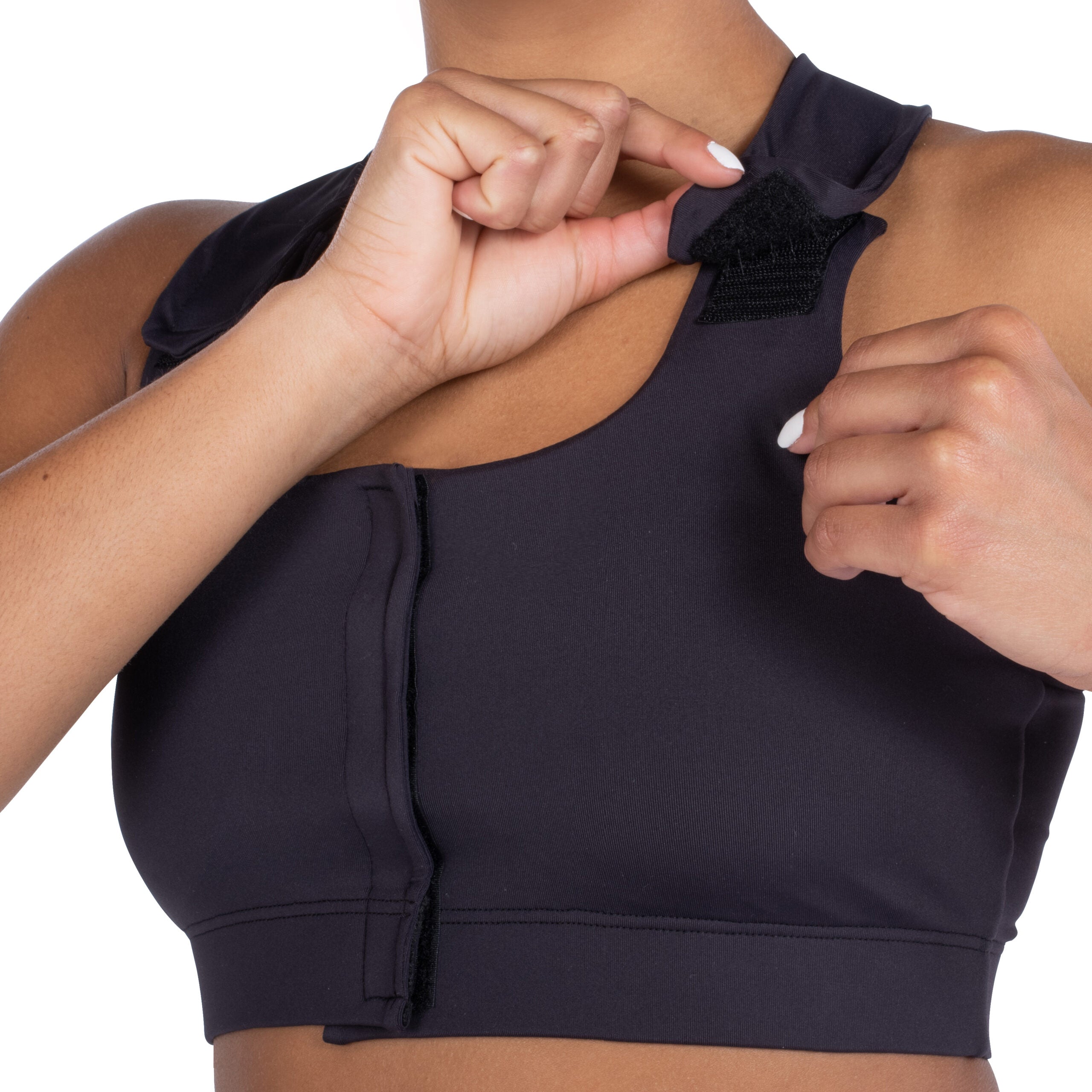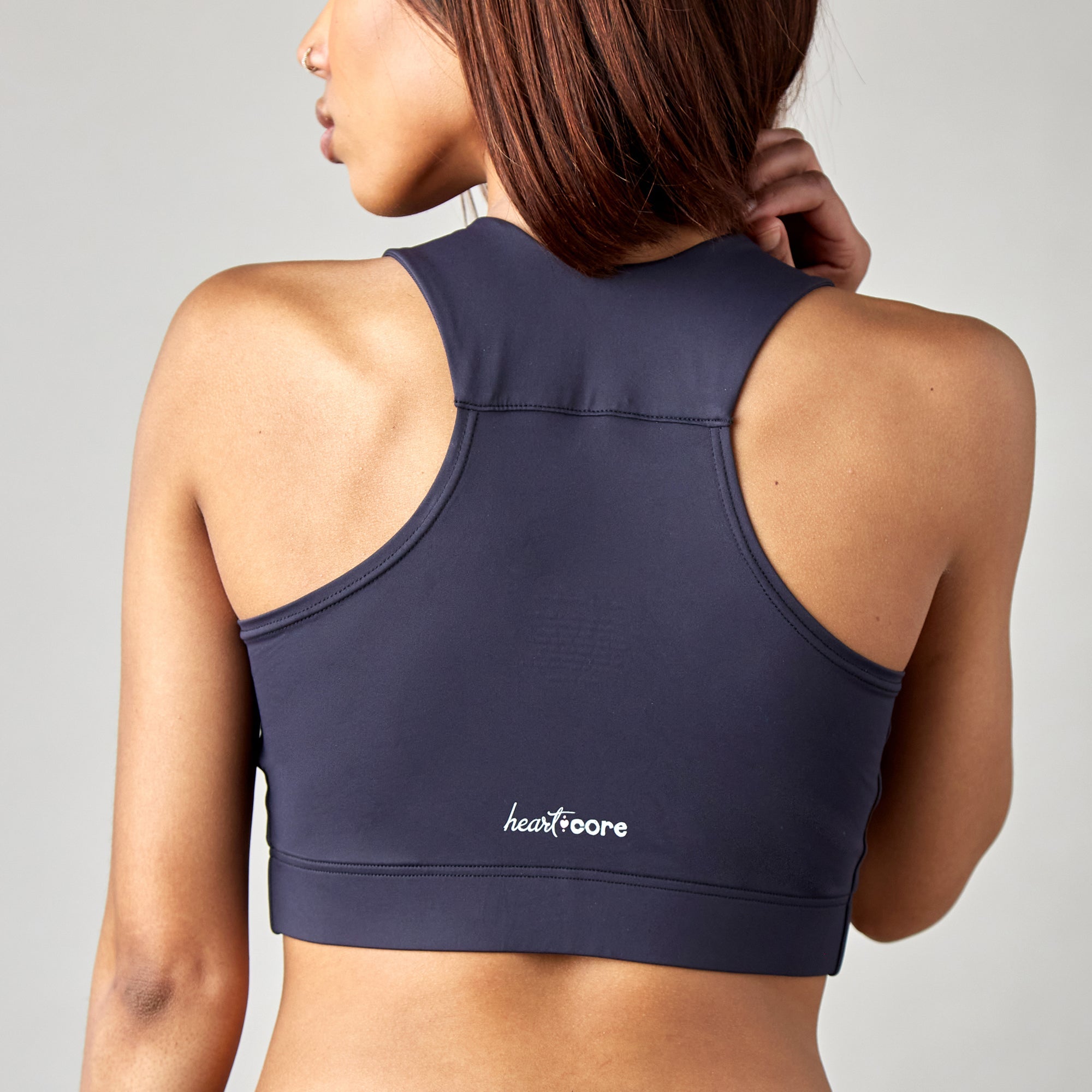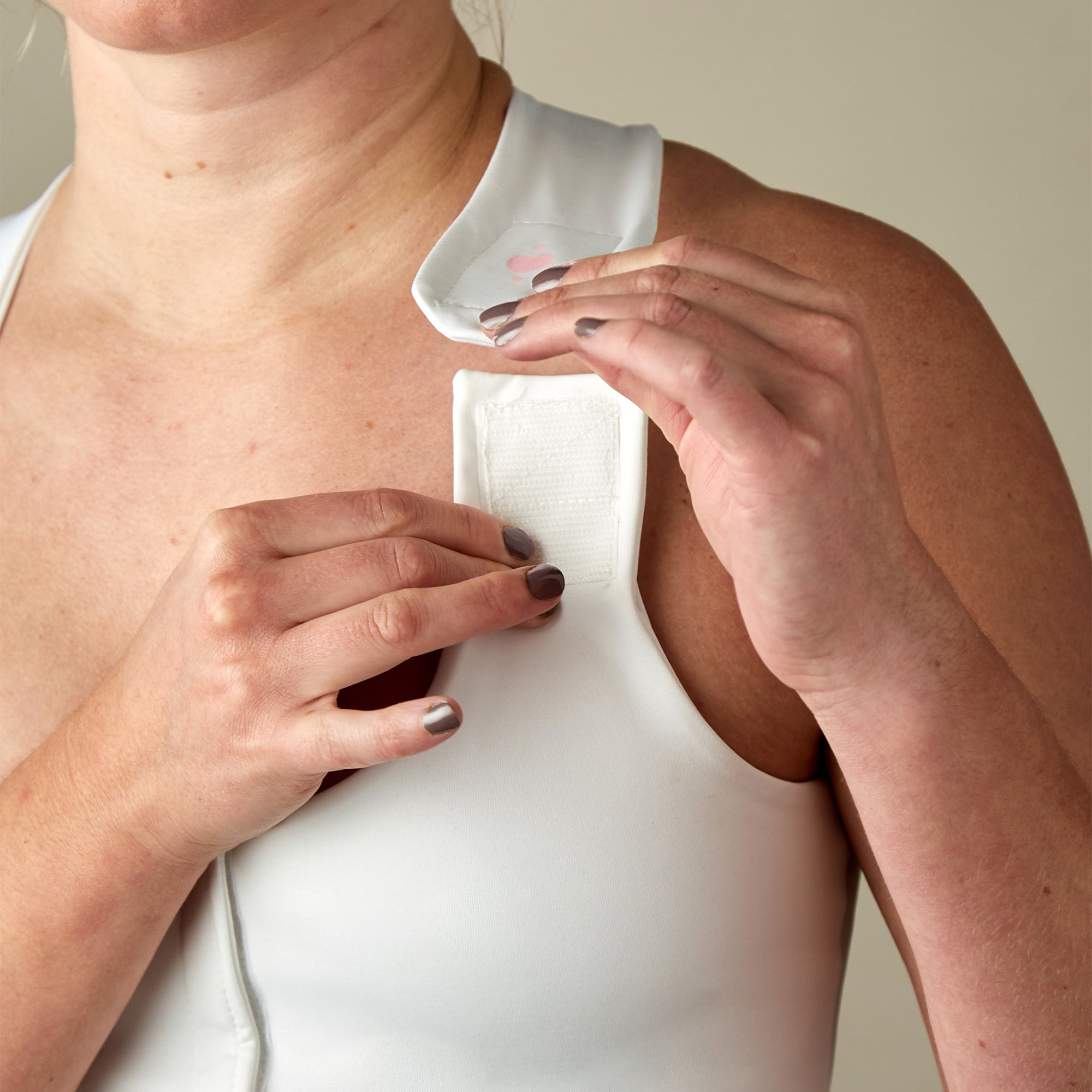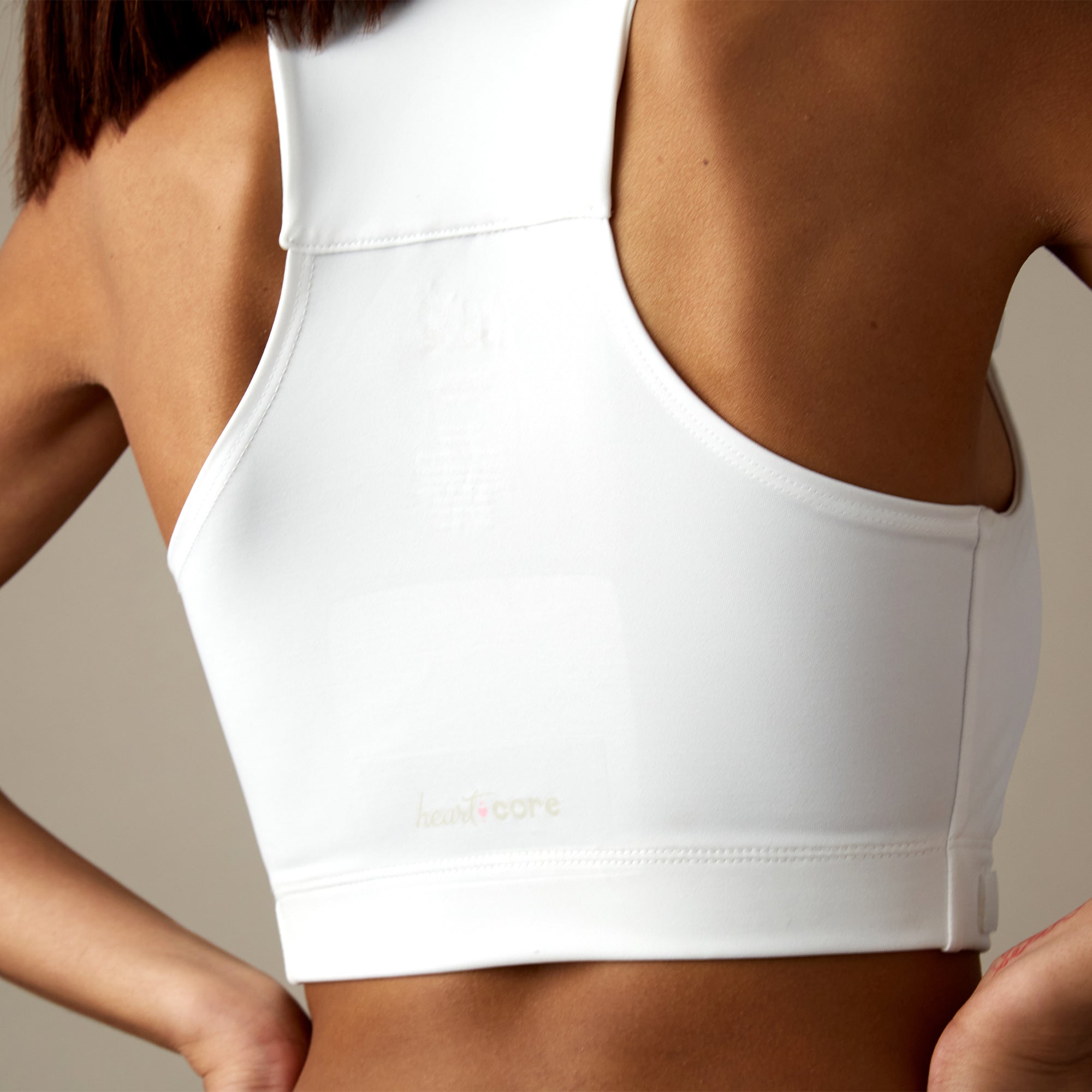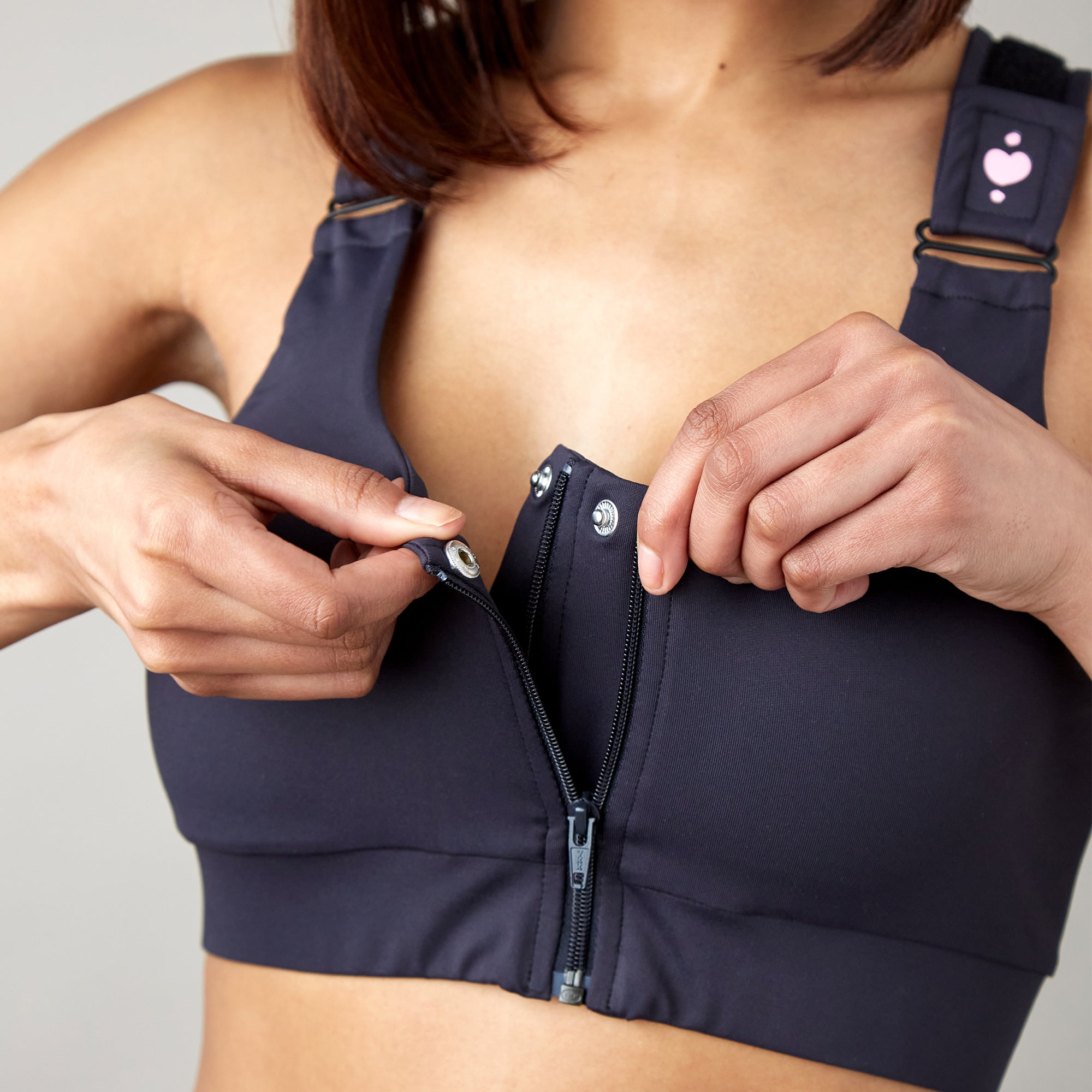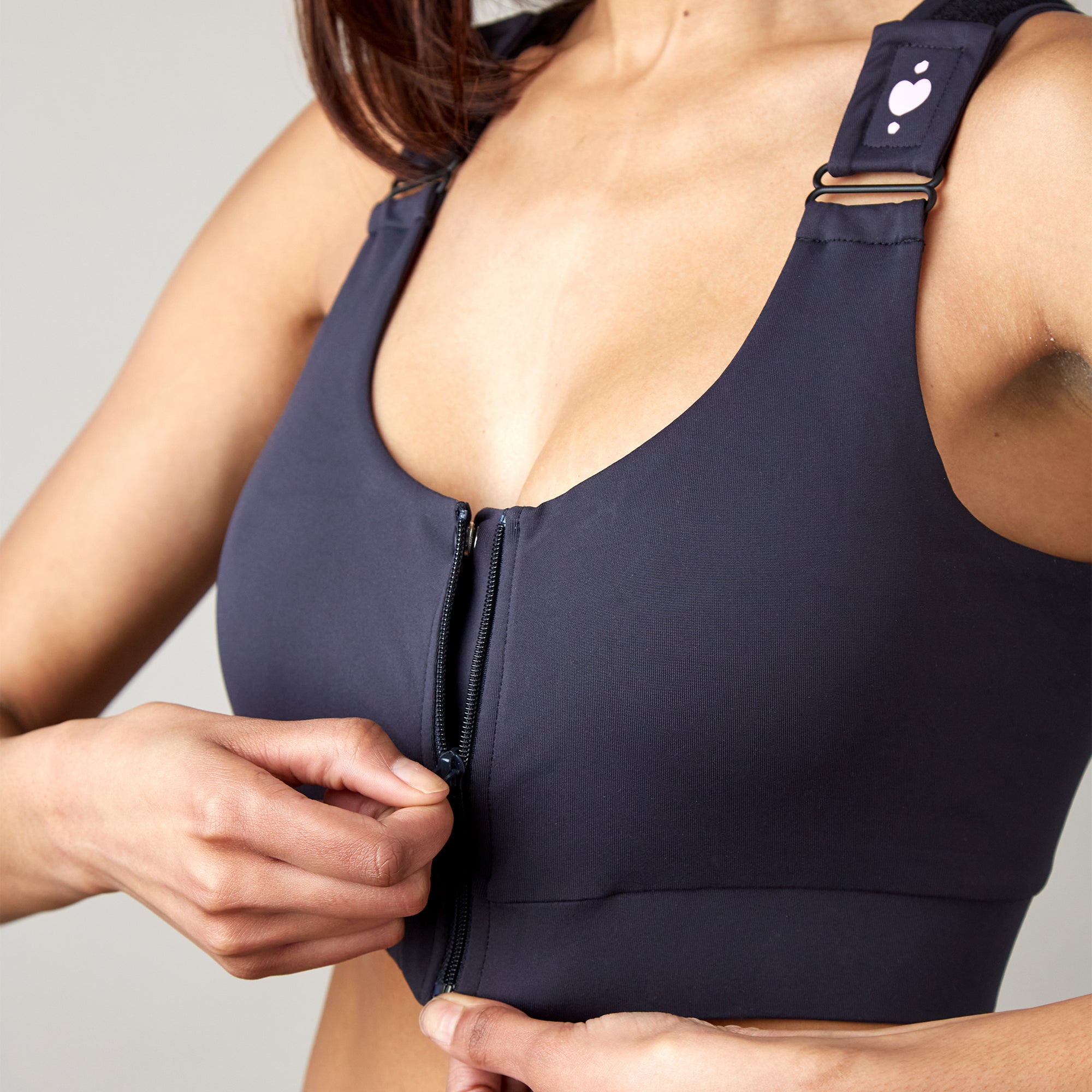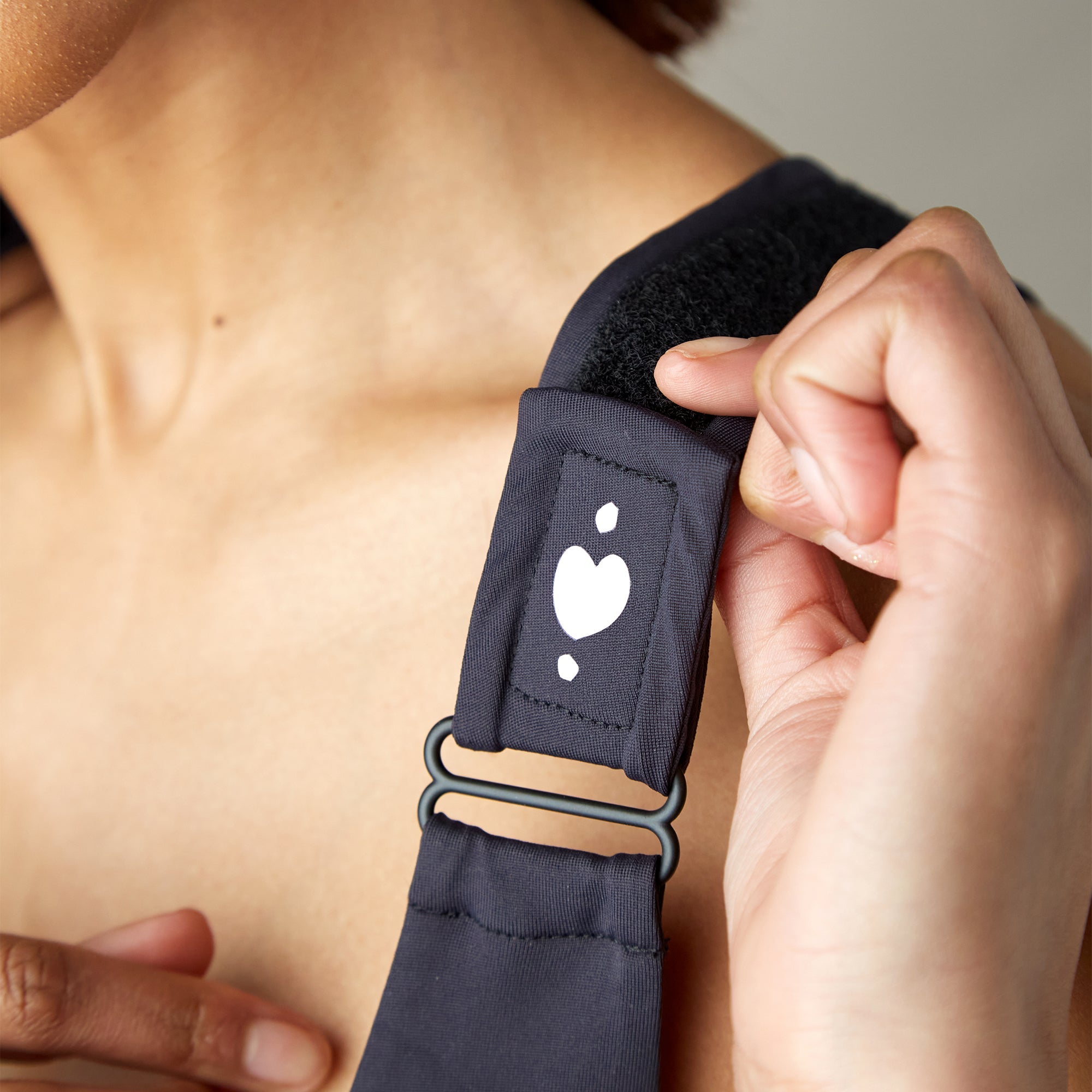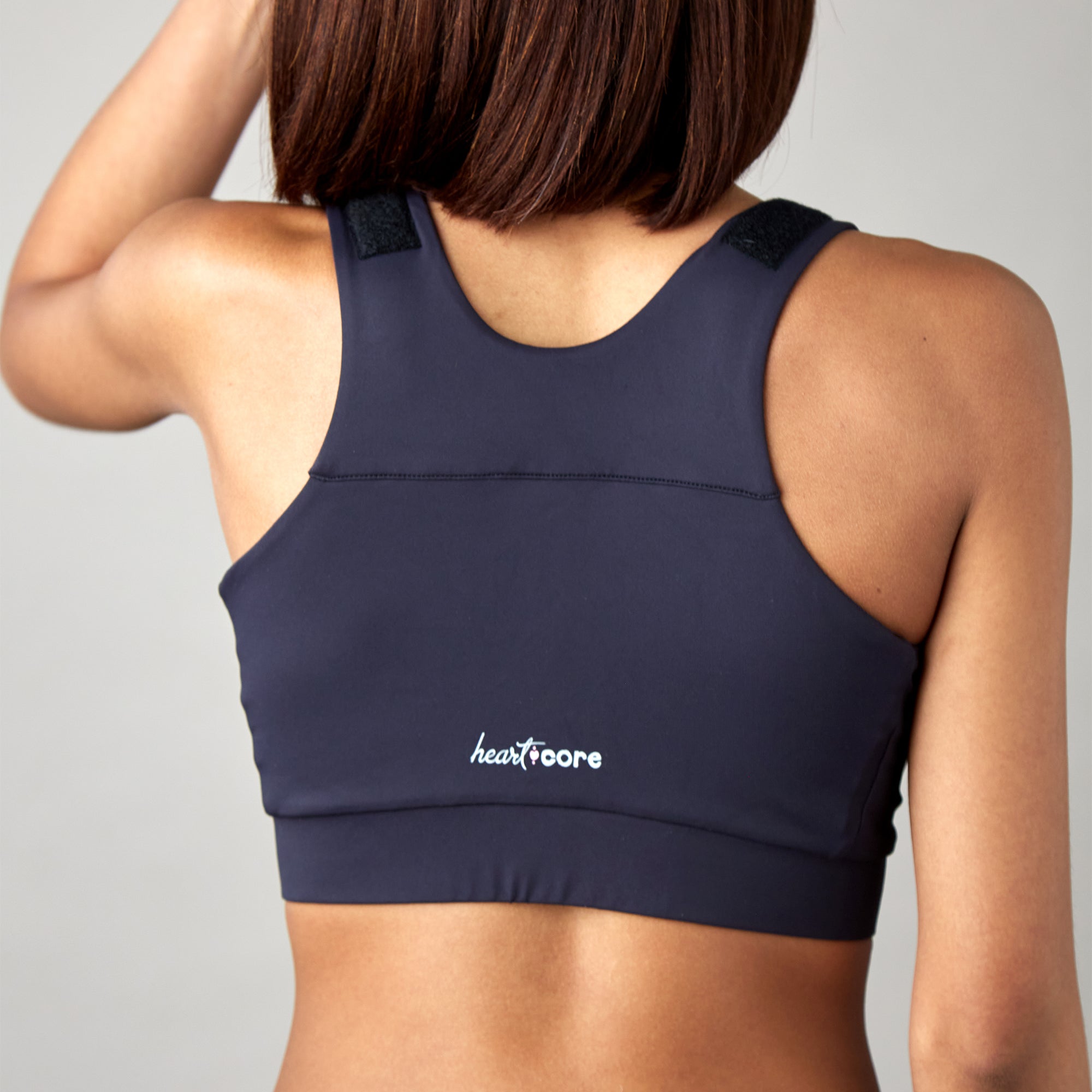Quick Answer: The most effective way to stop rolling over after breast surgery is elevated back sleeping at 30-45 degrees combined with strategic pillow barriers.
This positioning naturally prevents rolling while promoting healing, eliminating the need to rely on willpower during unconscious sleep movements.
The three proven methods:
-
Elevated back sleeping - Creates natural rolling resistance and optimal healing conditions
-
Physical barrier system - Uses firm pillows to make rolling physically impossible
-
Professional positioning system - Integrated support that maintains protection all night
Rolling onto your surgical side during sleep after breast surgery is like having your own body betray you at the worst possible moment. One minute you're peacefully sleeping in your carefully arranged recovery position, and the next you're wide awake with a jolt of pain that reminds you exactly why certain positions are temporarily off-limits.
Why You Keep Rolling Over (The Real Problem)
Your sleeping brain didn't get the memo about your surgery. While you're consciously aware that rolling onto healing breast tissue is problematic, your unconscious mind operates on decades of muscle memory that seeks familiar, comfortable positions.
What causes unconscious rolling:
-
Sleep cycles include natural position changes every 90-120 minutes
-
Pain medication reduces awareness of gradual position shifts
-
Muscle memory from years of preferred sleep positions
-
Discomfort in unfamiliar recovery positions triggers movement seeking
Why willpower doesn't work: Unconscious sleep movements happen during deep sleep phases when your conscious mind isn't monitoring position changes. You need mechanical solutions, not mental reminders.

Prevent Rolling on Your Back After Breast Surgery with the Sleep Again Pillow System
Method 1: Elevated Back Sleeping (The Rolling Eliminator)
Elevated back sleeping at 30-45 degrees doesn't just prevent rolling—it eliminates the desire to roll. When properly positioned, side sleeping becomes less appealing to your unconscious mind.
Why Elevated Back Sleeping Stops Rolling
Creates natural stability: The elevation angle creates a secure "comfort zone" that your sleeping brain prefers over side positions.
Reduces rolling triggers: Better circulation, reduced swelling, and improved breathing comfort mean fewer reasons for your body to seek alternative positions.
Provides comprehensive support: When your entire body feels supported and comfortable, unconscious position-seeking decreases significantly.
Eliminates pressure points: Proper elevation distributes body weight evenly, preventing the discomfort that triggers rolling attempts.
How to Create Effective Elevation
The 30-45 degree sweet spot: This angle range provides maximum rolling prevention while remaining comfortable for 8+ hours of sleep.
Stable foundation requirements: Use firm pillows or wedge systems that won't compress and lose elevation during sleep. Soft pillows that flatten defeat the purpose.
Full-body support system: Support arms, legs, and head to create comprehensive comfort that reduces movement triggers.
Gradual incline principle: Avoid sharp angles that cause sliding. Create smooth elevation from your lower back to your head.
Method 2: Strategic Barrier System (Physical Rolling Prevention)
When elevated back sleeping needs backup or you're transitioning to side sleeping, physical barriers make rolling mechanically impossible.
How to Build Effective Barriers
Primary surgical side protection: Position substantial, firm pillows along your surgical side, close enough to prevent rolling but not touching healing tissue.
Secondary back support: When side-sleeping on your non-surgical side, place firm barriers behind your back to prevent backward rolling.
Gap elimination strategy: Use smaller pillows to fill spaces where body parts might slip through your barrier system.
Stability testing: Before sleep, test barriers by pushing against them. Effective barriers should provide firm resistance without being uncomfortable.
Barrier System Requirements
Firm construction: Barriers must resist compression during sleep movements. Soft pillows that compress create gaps in protection.
Appropriate height: Barriers should extend from shoulder to hip for comprehensive protection during significant sleep movement.
Comfortable resistance: Barriers should prevent rolling without being uncomfortable if you briefly contact them during sleep.
Consistent positioning: Use the same barrier arrangement nightly to help your body adapt to protected sleep boundaries.

Method 3: Professional Positioning Systems (The Engineered Solution)
For patients who want reliable results without trial-and-error, professional positioning systems address every rolling prevention challenge through engineered design.
The Complete Sleep Again System
The Sleep Again Pillow System was specifically engineered to solve unconscious rolling problems that affect most breast surgery patients.
Every Sleep Again System includes:
-
Two Contoured Side Pillows to cradle back and hips while providing rolling barriers
-
Upper Body Wedge to create optimal 30-45 degree incline that prevents rolling desire
-
Leg Support Wedge to gently elevate legs and maintain spinal alignment
-
Head Pillow to provide comfortable neck support at therapeutic angles
-
Removable, washable slipcovers for hygiene during extended recovery periods
Why Sleep Again Pillows Outperform DIY Solutions
Maintains therapeutic positioning: The Upper Body Wedge uses dense foam construction that holds its 30-45 degree angle throughout 8+ hours of sleep. Household pillows typically lose 30-40% of their elevation by morning.
Prevents barrier collapse: The Contoured Side Pillows maintain their protective shape and height throughout the night, providing consistent protection against unconscious rolling attempts.
Integrated stability design: Each component stays securely in place with the others, creating a cohesive sleep system that doesn't shift or develop gaps during normal sleep movement.
Professional-grade construction: Sleep Again Pillows use materials designed specifically for recovery positioning, resisting compression and maintaining support properties through extended use.
GET THE REST YOU NEED TODAY WITH THE SLEEP AGAIN PILLOW SYSTEM
Week-by-Week Rolling Prevention Strategy
Week 1: Establish Foundation
-
Focus on elevated back sleeping at 40-45 degrees
-
Create substantial barriers if any side sleeping is necessary
-
Expect an adjustment period as your body adapts
-
Prioritize safety and healing over perfect comfort
Week 2: Optimize System
-
Refine positioning based on what worked during week 1
-
Most patients find their optimal configuration during this period
-
May reduce elevation slightly to 35-40 degrees if comfortable
Week 3-4: Monitor and Maintain
-
Continue protective positioning while assessing comfort improvements
-
Notice if elevated positions become naturally preferred
-
Maintain a consistent setup throughout the surgeon's recommended timeline
Beyond Week 4: Transition Planning
-
Work with the surgeon to understand when position restrictions may lift
-
Many patients continue to sleep elevated for ongoing benefits
-
Plan gradual modifications based on medical clearance
Common Rolling Prevention Mistakes
Insufficient elevation angle: Using less than 30 degrees doesn't create adequate rolling resistance or therapeutic benefits.
Relying on compressible materials: Household pillows that flatten during sleep lose their protective functions when you need them most.
Inadequate barrier construction: Small or soft barriers can be pushed through during unconscious sleep movements.
Inconsistent nightly setup: Changing arrangements prevents your body from adapting to protected sleep patterns.
Signs Your Rolling Prevention Is Working
Consistent wake-up positioning: You consistently wake up in the same protected position you fell asleep in.
Reduced pain interruptions: Fewer wake-ups from accidentally putting pressure on healing tissue through unconscious movement.
Improved sleep efficiency: More time spent in restorative deep sleep phases rather than light sleep from positioning discomfort.
Better healing progression: Your surgeon notes good recovery progress, supported by consistent protective positioning.
Natural comfort development: Recovery positions begin feeling naturally comfortable rather than restrictive.

Professional vs. DIY: The Investment Analysis
DIY Approach:
-
Multiple pillow purchases: $80-150 across several attempts
-
Setup time: 15-20 minutes nightly building and testing
-
Effectiveness: Variable, requires frequent adjustments
-
Sleep disruption: Moderate from collapsed support systems
Sleep Again Pillow System:
-
Complete integrated solution: One-time investment for comprehensive protection
-
Setup time: 3-5 minutes once familiar with configuration
-
Effectiveness: Consistent protection throughout recovery period
-
Sleep disruption: Minimal once system is established
Value consideration: Better sleep during recovery directly impacts healing speed, pain management, and return to normal activities. Professional positioning systems often provide immediate results that justify the investment.
GET THE REST YOU NEED TODAY WITH THE SLEEP AGAIN PILLOW SYSTEM
Frequently Asked Questions
Q: How long do I need to prevent rolling after breast surgery?
A: Most surgeons recommend 2-4 weeks minimum, varying by procedure type and healing progress. Always follow your surgeon's specific timeline.
Q: What's the best angle for elevated back sleeping?
A: 30-45 degrees provides optimal rolling prevention and therapeutic benefits while remaining comfortable for extended sleep periods.
Q: Why is elevated back sleeping better than flat positioning?
A: Elevation creates natural rolling resistance, reduces swelling, improves circulation, and makes the position more comfortable than alternatives.
Q: What if I wake up rolled over despite barriers?
A: This indicates barriers aren't substantial enough or properly positioned. Focus on elevated back sleeping, which naturally prevents rolling.
Q: Can I train myself to stop rolling without positioning aids?
A: No, conscious training doesn't work for unconscious sleep movements. Mechanical solutions like elevation and barriers are necessary.
Q: Should I continue elevation after medical clearance?
A: Many patients prefer elevated sleeping permanently due to improved breathing, circulation, and overall comfort benefits.
Q: How does the Sleep Again Pillow System compare to DIY solutions?
A: The Sleep Again Pillow System maintains therapeutic positioning consistently throughout sleep, while household pillows often compress and lose effectiveness when you need support most.
Your Rolling Prevention Action Plan
Immediate steps:
-
Choose elevated back sleeping as your primary position (30-45 degrees)
-
Create a stable elevation using firm pillows or positioning systems
-
Add barrier protection if attempting any side sleeping
-
Test your setup before sleep each night
Week 1 priorities:
-
Establish consistent protective positioning
-
Focus on safety over perfect comfort
-
Document what arrangements work best
-
Maintain elevation throughout the night
Ongoing success factors:
-
Use the same setup nightly for consistency
-
Maintain protective positioning throughout surgeon's timeline
-
Consider professional systems for reliable results
-
Plan transition strategy with medical guidance
Rolling prevention after breast surgery requires engineering solutions, not willpower. Whether you choose carefully arranged elevation with household pillows or invest in professional positioning systems like the Sleep Again Pillow System, the goal is to create mechanical solutions that work automatically during unconscious sleep.
The difference between hoping you won't roll and implementing systems that prevent rolling is the difference between anxious, interrupted recovery sleep and confident, restorative rest that supports optimal healing.
Medical Disclaimer
This information is provided for educational purposes only and should not replace professional medical advice. Breast surgery recovery requirements vary significantly based on the specific procedure, surgical approach, and individual healing factors. Always follow your surgeon's specific post-operative instructions regarding sleep positioning and activity restrictions, as these medical guidelines take precedence over any general positioning advice provided here.
Contact your healthcare provider immediately if you experience concerning symptoms such as increased pain, signs of infection, unusual swelling, or complications related to sleep positioning. If you have persistent sleep problems that significantly impact your recovery, discuss these issues with your medical team rather than attempting to self-treat with positioning modifications alone.
The mention of specific products or positioning strategies is for informational purposes only and does not constitute medical endorsement. Every patient's recovery needs are different, and what works for one person may not be appropriate for another. Trust your healthcare provider's guidance above any general sleep advice, as they understand your specific surgical procedure and individual circumstances.


